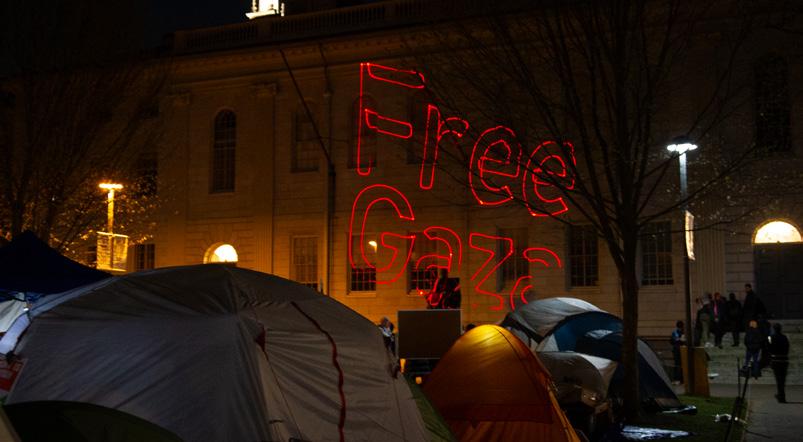
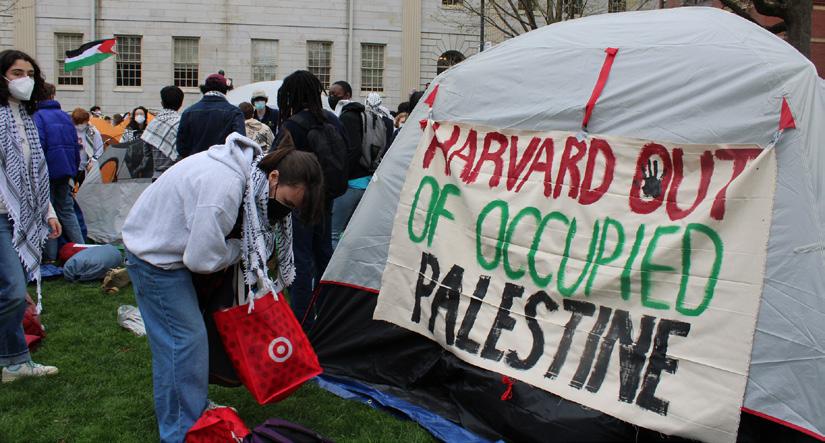
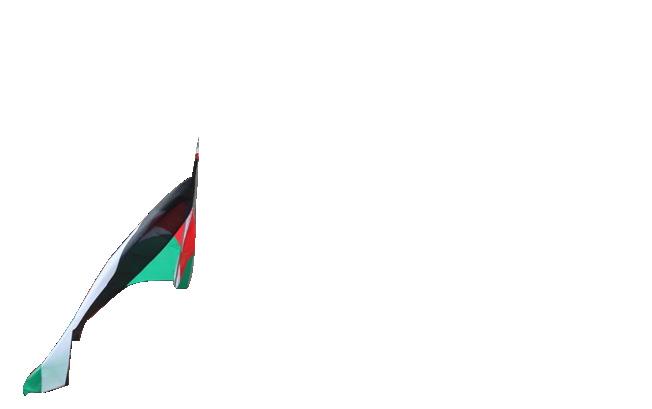

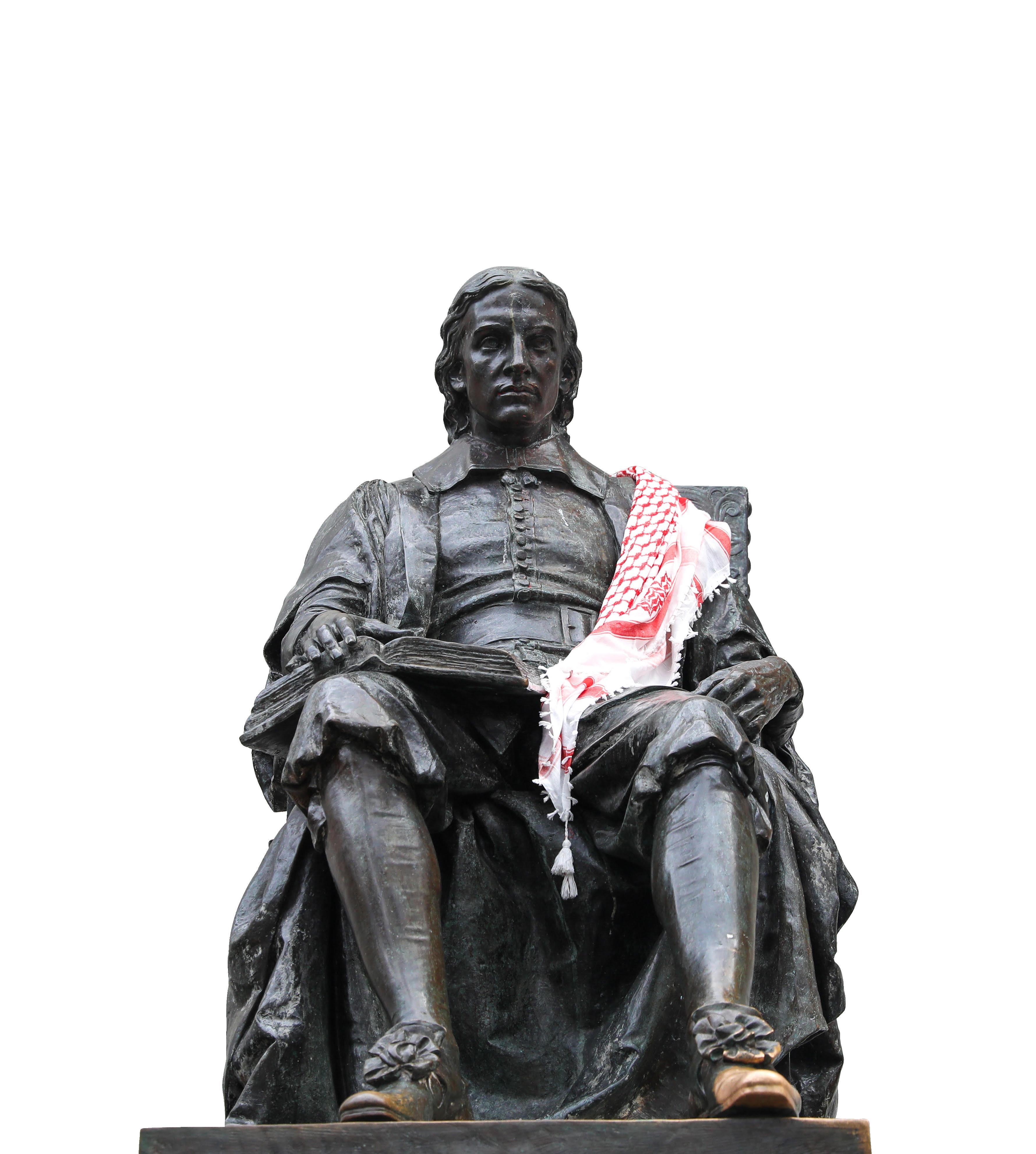
Harvard’s Protesters Should Stop Grabbing Headlines In Photos: First 36 Hours of Harvard Yard Encampment PAGE 18 PAGE 10 OPINION PHOTO ESSAY THE HARVARD CRIMSON PAGE 6. The PSC was suspended by the College on Monday after it violated the terms of its probation. PAGE 4. Dozens slept in tents on Wednesday and Thursday as part of the Harvard Yard occupation. PAGE 8. Harvard President Alan Garber said on Monday that there is a “high bar” for calling police on protesters. College Administrators Suspend Harvard PSC Protesters Pitch Dozens of Tents in Harvard Yard Garber Will Not Rule Out Police Response To Protests THE SUSPENSION THE ENCAMPMENT THE ADMINISTRATION Interim Harvard President Alan M. Garber ’76 faces the first major test of his tenure as dozens of pro-Palestine protesters establish an encampment in Harvard Yard, the first large-scale protest on campus since the fall semester. Garber and his administration earned early praise from Harvard donors and alumni for being initially successful in calming tensions on campus and enforcing policies to discourage disruptive campus protests, but Wednesday’s encampment threatens to upend all of that. All semester, Harvard administrators attempted to be proactive in their efforts to keep campus safe and discourage activists from staging disruptive largescale protests. In January, Garber warned against violating the University’s policies on protests and dissent in a University-wide email. On Sunday, Harvard security employees closed Harvard Yard to non-Harvard University ID holders and warned students about building tents and other large structures in anticipation of an encampment. Encampment Represents First Major Test for President Garber Harvard Dean of Students Thomas Dunne said the ongoing pro-Palestine encampment in Harvard Yard is violating College policies in a Thursday email to undergraduates — the first public statement by a College administrator that directly addressed the protest. Still, though Dunne warned that protesters could face disciplinary action, it is unclear whether administrators have taken any direct steps to discipline protesters or ask organizers to clear the Yard. “We have been clear that the physical safety and well-being of our community is paramount, and we have taken steps to increase security,” Dunne wrote. “We are also committed to supporting free speech, including the right protest.” “The right to protest, however, exists alongside time, place, and manner restrictions that ensure the continuity of our academic program and the rights of our community to perform the activities essential to our mission of teaching, learning, and research,” Dunne Warns of ‘Disciplinary Consequences’ for Protesters BY MICHELLE N. AMPONSAH AND JOYCE E. KIM CRIMSON STAFF WRITERS BY EMMA H. HAIDAR AND CAM E. KETTLES CRIMSON STAFF WRITERS SEE ‘GARBER’ ON PAGE 7 SEE ‘DUNNE’ ON PAGE 7 MARINA QU — CRIMSON PHOTOGRAPHER, SAMI E. TURNER — CRIMSON DESIGNER

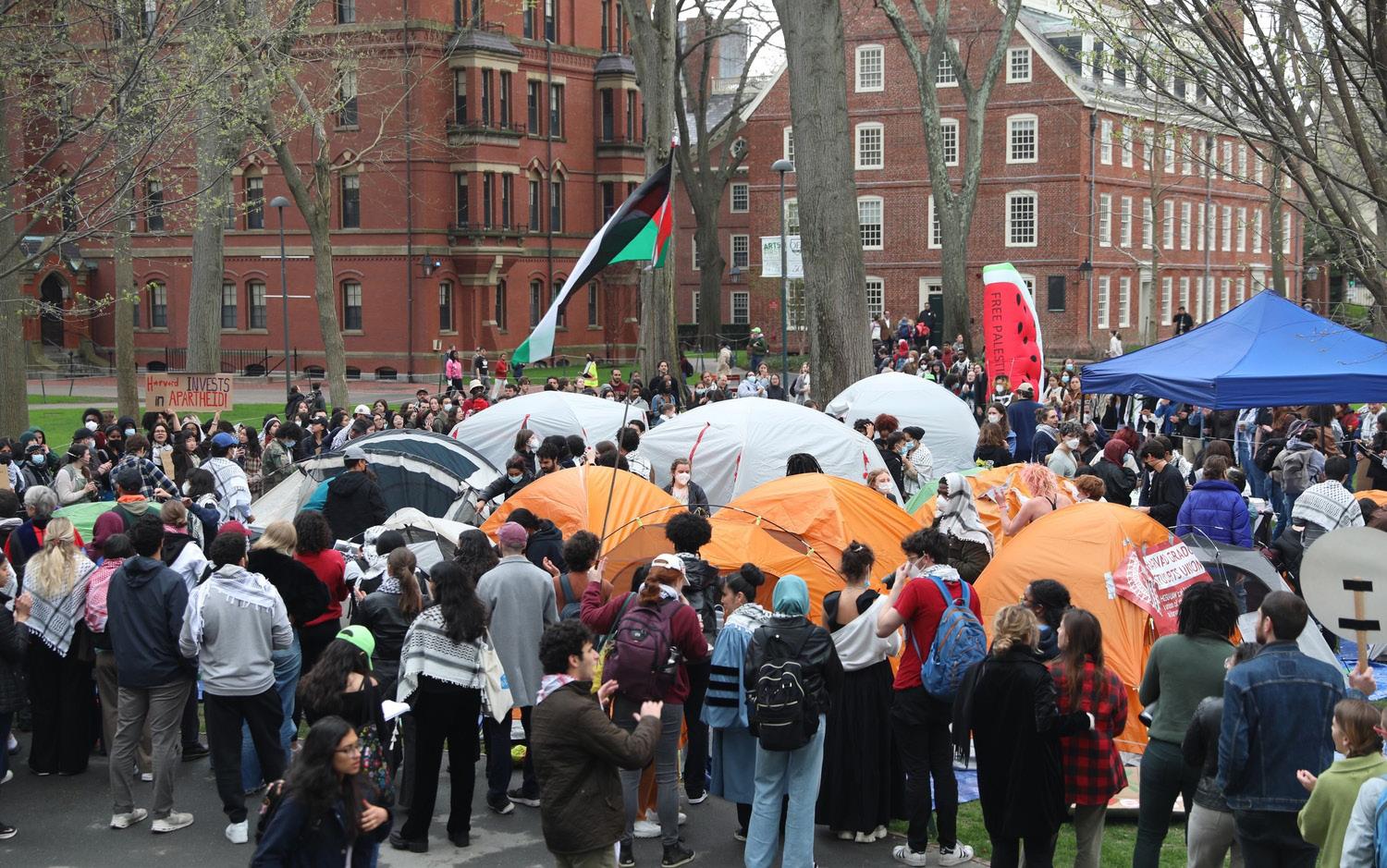
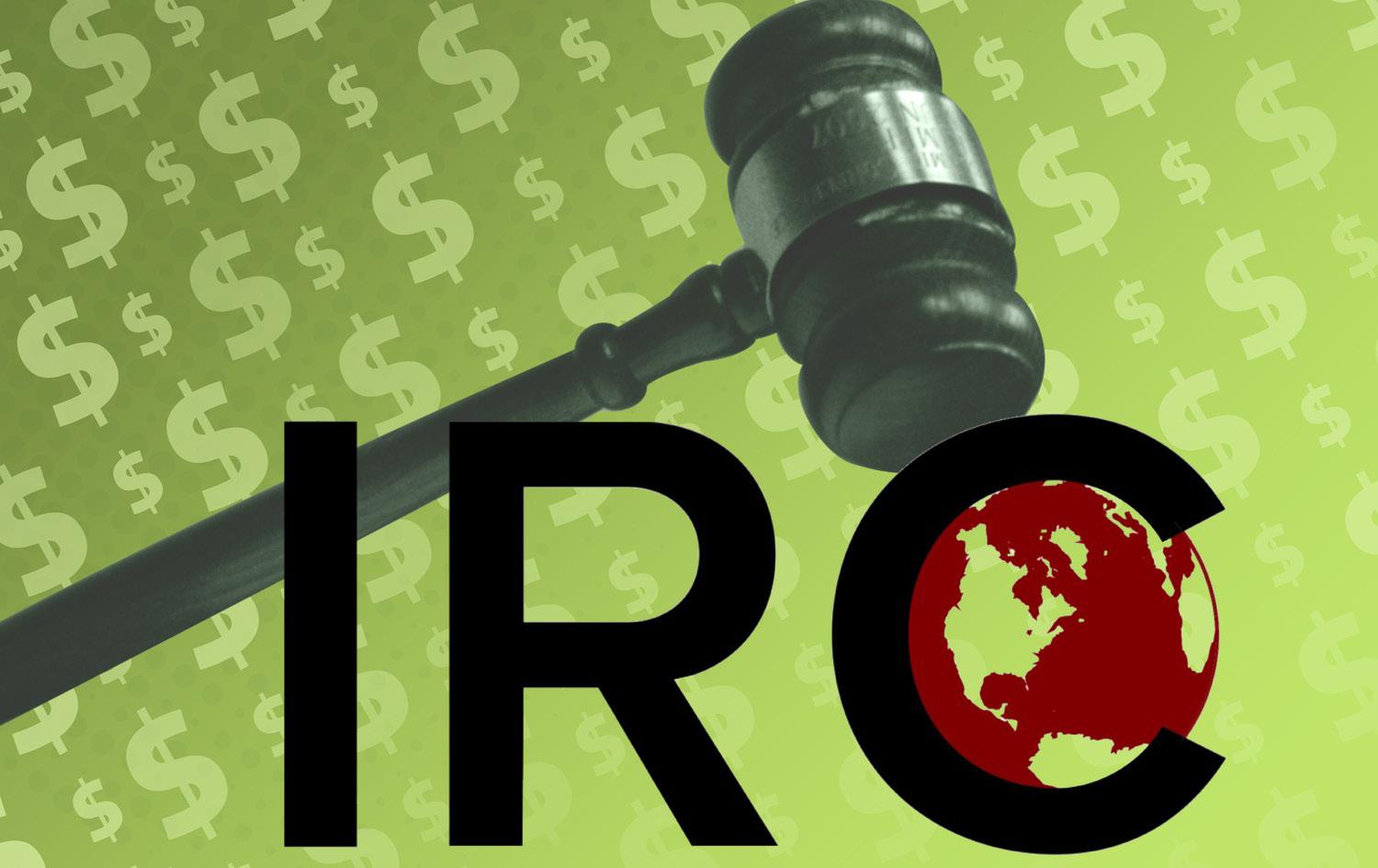
students were arrested during an encampment demonstration at Princeton’s McCosh Courtyard. By noon on Thursday, approximately 250 Princeton students had gathered at the encampment, which they termed the “Gaza Solidarity Encampment.” Following the initial two arrests, students began to dismantle their tents amid threats of further arrests.
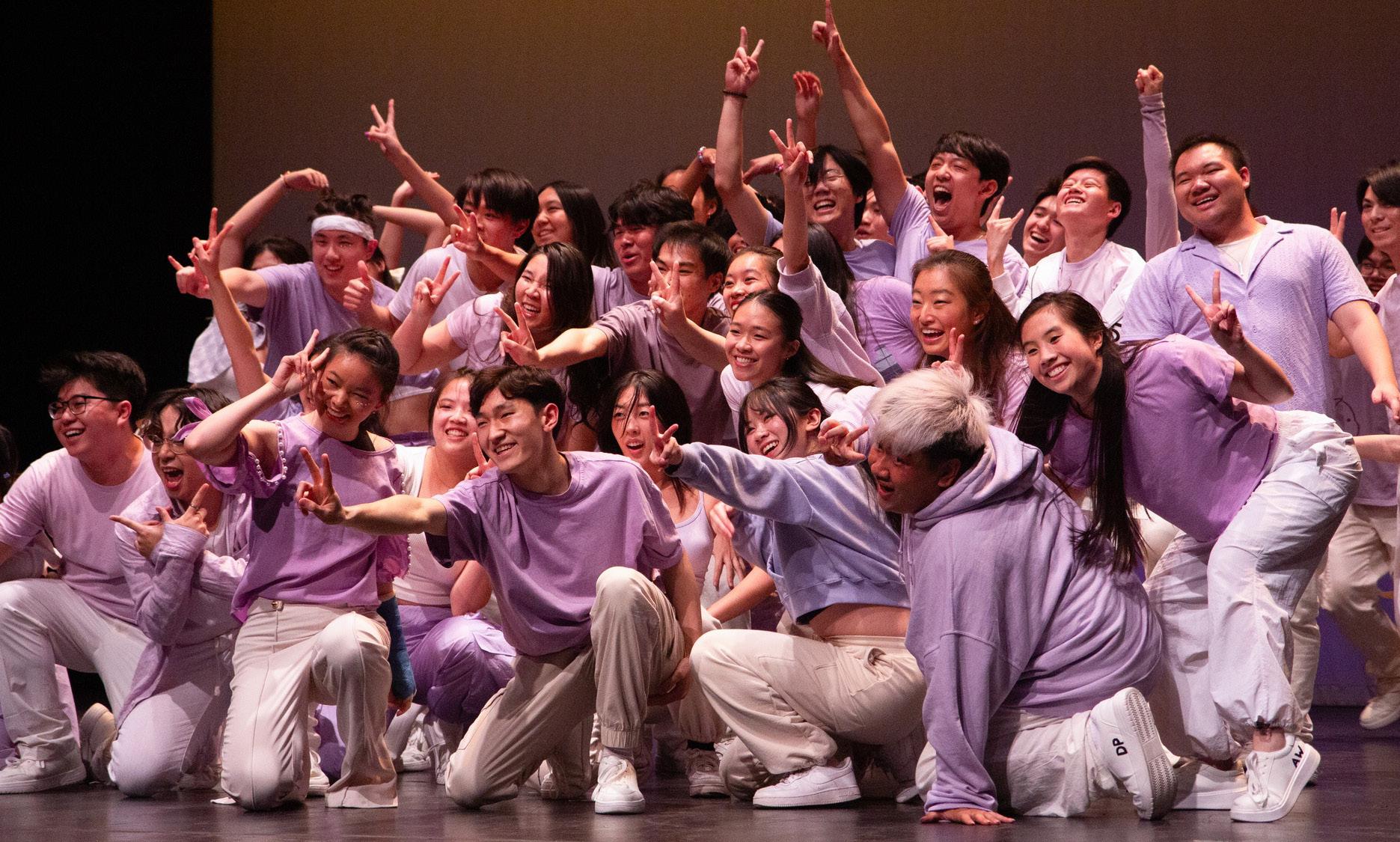
An encampment consisting of 80 pro-Palestine protesters formed on Brown’s Main Green on Wednesday, according to the Brown Daily Herald. The protesters’ demand consists of Brown’s “divestment from companies that facilitate the Israeli occupation of Palestinian territory.” Before the encampments began, Brown’s provost sent an email stating that encampments violate policies and are subject to disciplinary action.
THE BROWN DAILY HERALD


Over 1,400 professors, lecturers, graduate students, and postdoctoral workers from universities across the globe committed to an “academic boycott”

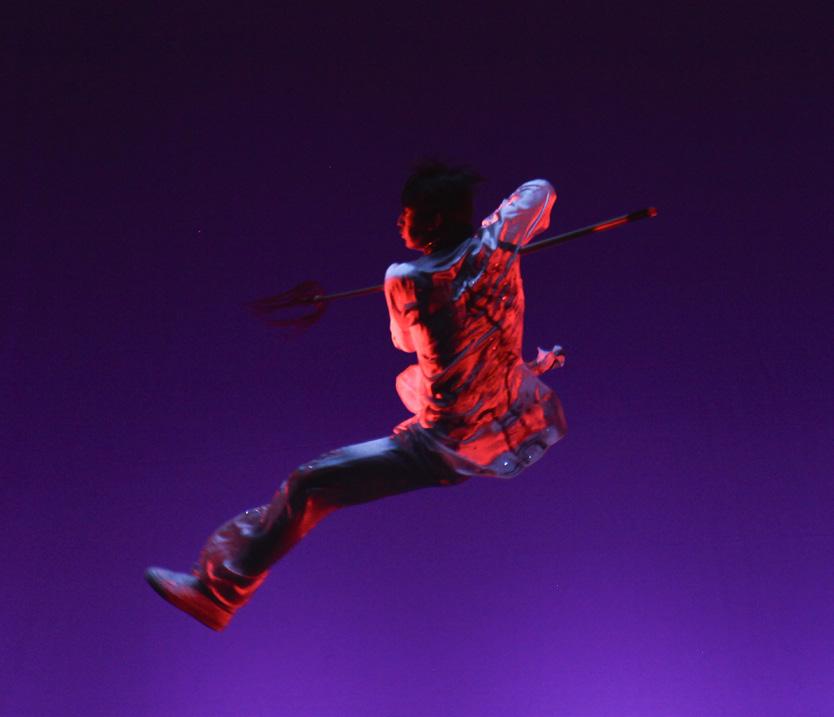

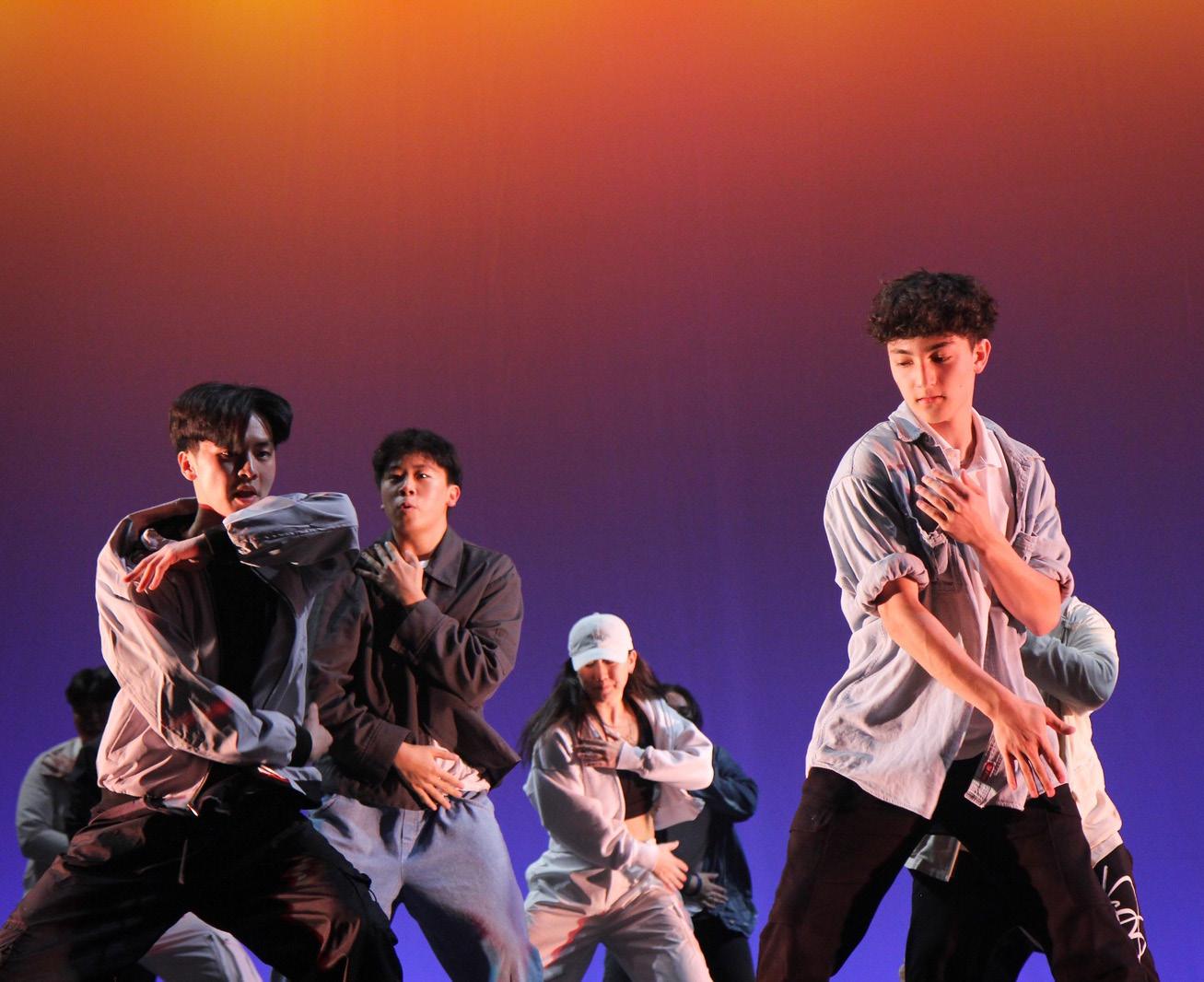

In Photos: AADT Eastbound Dancers in “Our Pace” celebrate as they finish the energetic piece portraying the tumultuous journey in finding self-confidence. DYNAMIC DANCING. The Asian American Dance Troupe hosted their spring showcase, Eastbound, last weekend. Their 30th annual show, which was completely sold out, was held in the Loeb Drama Center. With over 300 members and featuring over 15 dances, Eastbound is a celebration of AADT’s broader mission: to unite students under a common passion for Asian tradition, culture, and identity. BY SAMUEL A. HA — CRIMSON PHOTOGRAPHER The show opened with Flagship, AADT’s legacy group dedicated to traditional Asian dances. The group performed a classical Tibetan dance titled “Heavenly Shower,” portraying a traditional bathing festival meant to remove disease and misfortune. Dancers in the piece “Am I Dreaming” showcased their sophisticated footwork and techniques to pieces from Stray Kids and SVT The8. “Childhood Summers” tells the story of children playing in the fields, eliciting nostalgia and longing. The dance highlights the importance of life’s small moments, as well as the happiness found in friendships. LAST WEEK 2 APRIL 26, 2024 THE HARVARD CRIMSON Judge Rules Against Harper in IRC Suit Israeli PM Slams Campus Antisemitsm Mixed Reactions to Testing Policies COLLEGE CAMPUS PROTESTS ADMISSIONS IRC COURT CASE. The Cambridge District Court ruled against Harvard junior Theo J. Harper ’25 in a small claims lawsuit against the Harvard International Relations Council on April 10. Harper — who represented himself in an April 9 hearing — sued the organization in February after the organization temporarily removed him from membership for redirecting $170,000 of the group’s income to an unofficial bank account in what he called a “financial stress test.” BY MADELEINE A. HUNG AND AZUSA M. LIPPIT — CRIMSON STAFF WRITERS, GRAPHIC BY SAMI E. TURNER — CRIMSON DESIGNER ‘HORRIFIC.’ Israeli Prime Minister Benjamin Netanyahu denounced “antisemitism on campuses in the United States” in a video statement released just hours after pro-Palestine Harvard students began staging an encampment in Harvard Yard on Wednesday. Netanyahu slammed university administrators for not doing more to stop the campus protests and called for widespread condemnation of the demonstrations, calling the situation at American universities “horrific.” BY ELYSE C. GONCALVES AND MATAN H. JOSEPHY — CRIMSON STAFF WRITERS, PHOTO BY MARINA QU — CRIMSON PHOTOGRAPHER TESTING REQUIRED. Following Harvard’s decision earlier this month to reinstate standardized testing requirements for the Class of 2029, students, experts, and counselors said applicants and their advisers will need to make quick adjustments for the new policy. The College’s decision was a reversal on a previous commitment to stay test-optional through the admitted Class of 2030 — set to apply in the fall of 2026. The move drew mixed reactions from students, experts, and college counselors. BY ELYSE C. GONCALVES AND MATAN H. JOSEPHY — CRIMSON STAFF WRITERS, PHOTO BY MARINA QU — CRIMSON PHOTOGRAPHER AROUND THE IVIES Nearly 50 pro-Palestine student protesters were arrested by Yale police, the Yale Daily News reported Monday. Protesters received a warning to vacate Beinecke Plaza at 11 p.m. and 7 a.m. the next morning. Arrested students will be referred to Yale for disciplinary action. Prior to the arrests, protestors rejected an offer for a meeting
. THE YALE DAILY NEWS
THE
with Yale’s chair of the University’s Corporation Committee on Investor Responsibility and a condition of no punishment
Two
DAILY PRINCETONIAN
of Columbia University in support of student protesters, the Columbia Daily Spectator reported Tuesday. The academics signed a letter demanding the reversal of student suspensions, the removal of on-campus police, and the resignations of the presidents of Columbia and Barnard College. THE COLUMBIA DAILY SPECTATOR Pro-Palsetine student oragnizers pitched about 20 tents on College Green at the University of Pennsylvania, preparing to sleep in the encampment through Thursday night, according to the Daily Pennsylvanian. Like at Harvard, the encampment came after the university suspended a pro-Palestine student group. The university said it was monitoring the situation and threatened disciplinary action against protesters who violated school policy in a statement. THE DAILY PENNSYLVANIAN YALE POLICE ARREST 47 STUDENT PROTESTERS STUDENTS ARRESTED AT PRINCETON PRO-PALESTINIAN ENCAMPMENT BROWN STUDENTS BEGIN INDEFINITE ENCAMPMENT FOR DIVESTMENT AFTER STUDENT ARRESTS, OVER 1,400 ACADEMICS GLOBALLY TO BOYCOTT COLUMBIA EVENTS STUDENTS BEGIN ENCAMPMENT AT UNIVERSITY OF PENNSYLVANIA “Lotus Soul,” a dance led by Daniel T. Pham ’26 and C. Thao Nguyen ’27, marked the first ever Vietnamese traditional fan dance in AADT history. Dancers perform as part of Company, AADT’s beginner-friendly group. Guest performers from the Harvard Wushu Club performed at the Saturday evening show. With acrobatics and sword dances, the Wushu Club put on an impressive display for the audience.
NEXT WEEK 3
What’s Next
Start every week with a preview of what’s on the agenda around Harvard University
COURT HEARS
Times reported. The Court heard oral arguments for more than two and a half hours as lawyers debated former President Donald Trump’s claim that he is immune from criminal prosecution over his efforts to overturn the 2020 presidential election.
GENETIC MARKERS OF BIRD FLU PRESENT IN ONE IN FIVE MILK SAMPLES, FDA SAYS
The Food and Drug Administration said that roughly 20 percent of milk samples contained traces of bird flu, the New York Times reported Thursday . Though the results do not mean that milk is unsafe to drink, they indicate that the bird flu outbreak among dairy cows is more widespread than official tallies suggest. The U.S. Department of Agriculture announced that it would test all dairy cows moving across state
HARVEY WEINSTEIN CONVICTION OVERTURNED
The New York Court of Appeals overturned Harvey Weinstein’s conviction in a 4-3 decision, according to the New York Times. On Thursday, New York’s highest court overturned the felony sex crimes conviction against Weinstein. The move marked the reversal of a bedrock case in the #MeToo era. The Court found the judge who had presided over Weinstein’s case did not offer him a fair trial. The Manhattan district attorney said he would seek to prosecute Weinstein again.
U.S. TROOPS LEAVE CHAD AS SECURITY AGREEMENT RE-NEGOTIATED
Friday 4/26
EXHIBITION OPENING RECEPTION
Harvard Ed Portal,8 p.m.
Celebrate the opening of artist Matthew Bajor’s newest exhibit, “Interference Patterns,” with a reception and lively discussion. Guests will be able to hear the inspiration behind Bajor’s latest works while participating in art-making opportunities inspired by the exhibit.
Saturday 4/27
MATERIALS LAB WORKSHOP:
VISIBLE MENDING
Harvard Art Museums, 1-4 p.m.
Join queer mender, natural dyer, and herbalist Maggie Ruth Haaland to dive into the intricate world of darning and patching knitwear. The workshop will explore basic techniques to teach participants how to mend and weave.
Sunday 4/28
SCREENING: THE SPIRIT OF THE BEEHIVE Harvard Film Archive, 3-4:30 p.m.
Spend an afternoon immersed in Victor Erice’s imaginative depiction of rural Spain at the Harvard Film Archive. The film explores the role of poetic allegory and childhood imagination in contextualizing the harsh realities of the real world.
Monday 4/29
MIDDLE EAST DIALOGUES AT JFK JR. FORUM
HKS Institute of Politics, 6-7 p.m.
Come hear a conversation between the Middle East Initiative Faculty Chair, Professor Tarek Masoud, and Bret Stephens, an opinion columnist for the New York Times and the founder and editor-in-chief of SAPIR.
Tuesday 4/30
THE PROMISE AND PERILS OF AI IN
HEALTHCARE
Harvard School of Public Health, 1-1:30 p.m.
Wednesday 5/1
REVISITING BROWN V. BOARD OF EDUCATION
Online Webinar, 4-5 p.m.
Join Harvard Education Press authors as they discuss the legacy and 70th anniversary of the Brown v. Board of Education decision. The discussion features the Education Press authors Margaret Beale Spencer,
Thursday 5/2
TEACHING INDIA IN A CHANGING
WORLD
Tsai Auditorium, 5:30-7 p.m.
CHINESE MINISTER TELLS BLINKEN COUNTRY TIES ARE STABILIZING
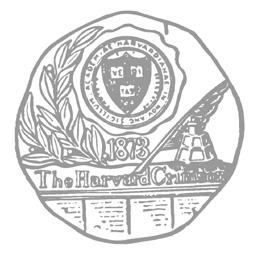
Skeptical about the limitations of ChatGPT and large language models? Come listen to a panel of experts who will explore the future of AI and the challenges of integrating machine learning and generative AI into our healthcare system. SUNLIT PATH
Come listen to experts analyze Sri Lanka’s human rights record and ongoing movements for justice. The political identities of women which are often overlooked in conflict and recovery, will be discussed in the context of humanitarian interventions.

Friday 5/3
DATA + DONUTS Harvard Kennedy School, 10:30-11:30 a.m.
Join Dataverse Development Project Manager at the Institute for Quantitative Social Science Ceilyn Boyd as she discusses the Slavery, Abolition, Emancipation, and Freedom Data Collection. The SAEF Data Collection is an open access research dataset that represents over 1200 items in Houghton Library’s SAEF collection.
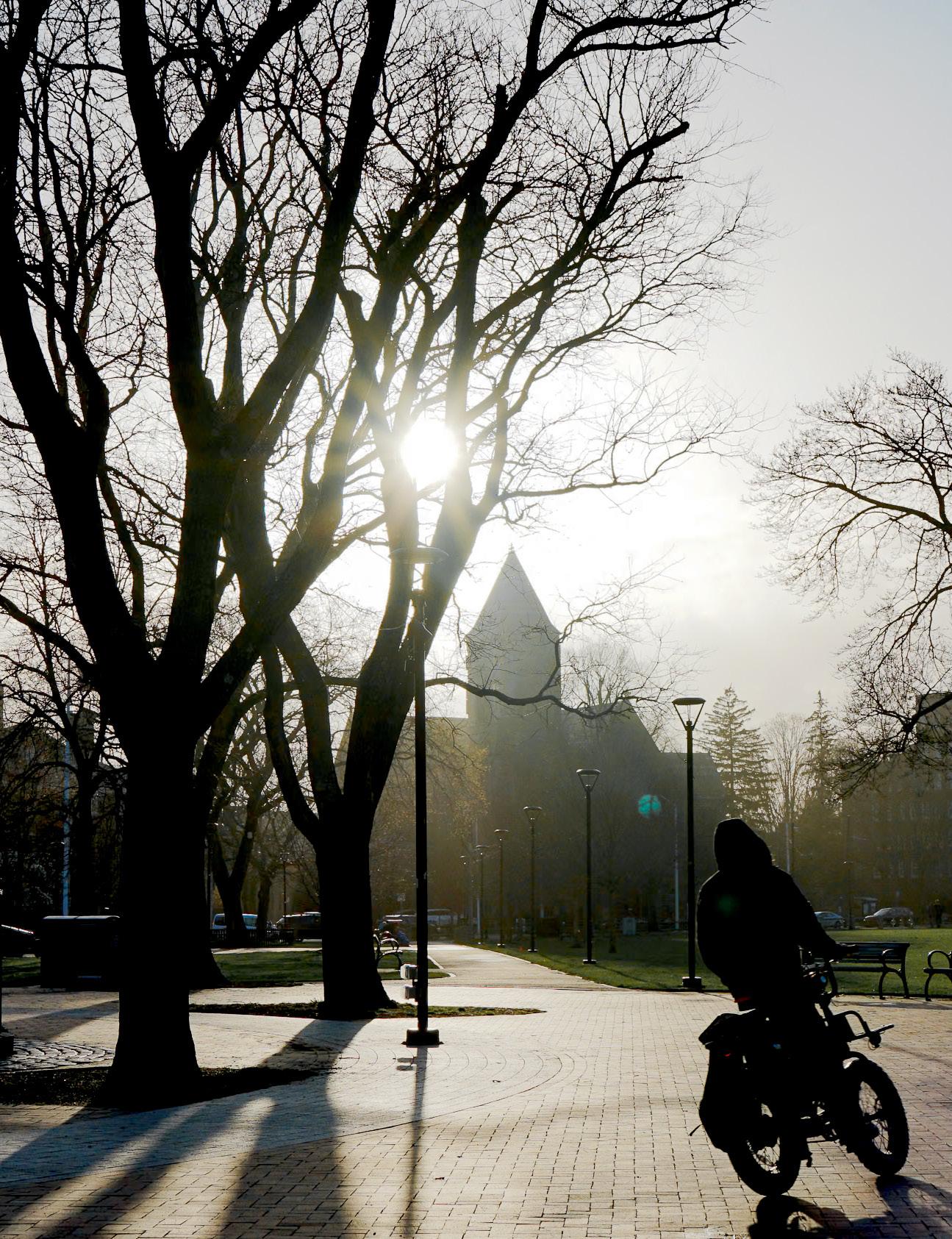
Nancy E. Dowd, and Leslie T. Fenwick. EMILY L. DING — CRIMSON PHOTOGRAPHER IN THE REAL WORLD U.S. Secretary of State Antony Blinken was told by China’s top diplomat Wang Yi that relations have improved significantly, according to the Washington Post. The meeting came as part of a larger trip that included a basketball and a conversation with Chinese college students. Conversations between the two superpowers have become more frequent recently. The Washington Post reported that dozens of American military personnel are expected to withdraw from Chad in the upcoming days. The move comes amid a larger, involuntary shift in American military presence in a volatile part of Africa. The United States intends to negotiate with Chad about their security relations after the presidential elections in Chad early next month — the retraction of personnel may be temporary.
lines on Wednesday. The Centers for Disease Control and Prevention said 23 people were tested for the virus and 44 people are being monitored after exposure. Conservative justices on the Supreme Court appeared ready to rule that former presidents might have some immunity from criminal prosecutions during oral arguments Thursday, the New York
SUPREME
TRUMP
APRIL 26, 2024 THE HARVARD
CASE
CRIMSON
STAFF FOR THIS ISSUE Night Editors Mert Geyiktepe ’25 Yusuf S. Mian ’25 Assistant Night Editors Jina H. Choe ’26 Sally E. Edwards ’26 Darcy G Lin ’27 Elizabeth Peng ’27 Saketh Sundar ’27 Story Editors Rahem D. Hamid ’25 Miles J. Herszenhorn ’25 Yusuf S. Mian ’25 Elias J. Schisgall ’25 Claire Yuan ’25 Sophia C. Scott ’25 Rohan Rajeev ’25 Design Editors Sami E. Turner ’25 Laurinne Jamie P. Eugenio ’26 Hannah S. Lee ’26 Angel Zhang ’26 Catherine H. Feng ’27 Nicole M. Hernández ’27 Photo Editors Julian J. Giordano ’25 Addison Y. Liu ’25 Jack R. Trapanick ’26 Wonjae Suh ’27 Lara R. Berliner ’27 Helen L. Piltner ’25 Kevin I. Cho ’26 Arts Editors Samantha H. Chung ’25 Editorial Editors J. Sellers Hill ’25 Sports Editors Katharine A. Forst ’25 Jack K. Silvers ’25 Nghia L. Nguyen ’26 CORRECTIONS The Harvard Crimson is committed to accuracy in its reporting. Factual errors are corrected promptly on this page. Readers with information about errors are asked to e-mail the managing editor at managingeditor@thecrimson.com. sleep deprived ZING GEE — CRIMSON PHOTOGRAPHER Associate Managing Editors Elias J. Schisgall ’25 Claire Yuan ’25 Editorial Chairs Tommy Barone 25 Jacob M. Miller ’25 Arts Chairs Anna Moiseieva ’25 Allison S. Park ’25 D&I Chairs Lauren A. Kirkpatrick ’26 Hailey E. Krasnikov ’25 Associate Business Manager Mathias Melucci ’26 Meredith W.B. Zielonka ’25 Magazine Chairs Hewson Duffy ’25 Kaitlyn Tsai ’25 Blog Chairs Eve S. Jones ’25 Hayeon Ok ’25 Sports Chairs Katharine A. Forst ’25 Jack K. Silvers ’25 Design Chairs Laurinne Jamie P. Eugenio ’26 Sami E. Turner ’25 Multimedia Chairs Julian J. Giordano ’25 Addison Y. Liu ’25 Technology Chairs Dennis S. Eum ’26 Neil H. Shah ’26 THE HARVARD CRIMSON Copyright 2024, The Harvard Crimson (USPS 236-560). No articles, editorials, cartoons or any part thereof appearing in The Crimson may be reproduced in any form without the express written permission of the President. The Associated Press holds the right to reprint any materials published in The Crimson. The Crimson is a non-profit, independent corporation, founded in 1873 and incorporated in 1967. Second-class postage paid in Boston, Massachusetts. Published Monday through Friday except holidays and during vacations, three times weekly during reading and exam periods by The Harvard Crimson Inc., 14 Plympton St., Cambridge, Mass. 02138 J. Sellers Hill ’25 President Miles J. Herszenhorn ’25 Managing Editor Matthew M. Doctoroff ’25 Business Manager
As the encampment in Harvard Yard entered its second day, College administrators broke their silence on the demonstration, warning protesters that the encampment violated Harvard’s rules against erecting tents or tables in the Yard and threatening disciplinary action.
The encampment — organized by the Harvard Out of Occupied Palestine, a coalition of pro-Palestine groups — began just past noon on Wednesday, following an emergency rally in front of the John Harvard statue at the heart of the Yard.
Protesters demanded on Wednesday that the University disclose and divest all institutional and financial investments in Israel. They also demanded that the administration drop all charges of disciplinary action against student activists following Monday’s suspension of the Palestine Solidarity Committee. According to multiple organizers Wednesday, protesters are prepared to camp until the demands are met or until they are forced to leave. Harvard has repeatedly rejected calls to boycott Israel. Harvard spokesperson Jason
A. Newton declined to comment on protesters’ demands and referred to comments from interim University President Alan M. Garber ’76 in a Monday interview with The Crimson. During the interview, Garber said the University remains staunchly opposed to calls for divestment from Israel and has a “very, very high bar” before resorting to the use of law enforcement.
Though Harvard campus police have yet to intervene in the demonstration, an email sent to undergraduates by Dean of Students Thomas Dunne around 2 p.m. acknowledged the encampment and warned of “disciplinary
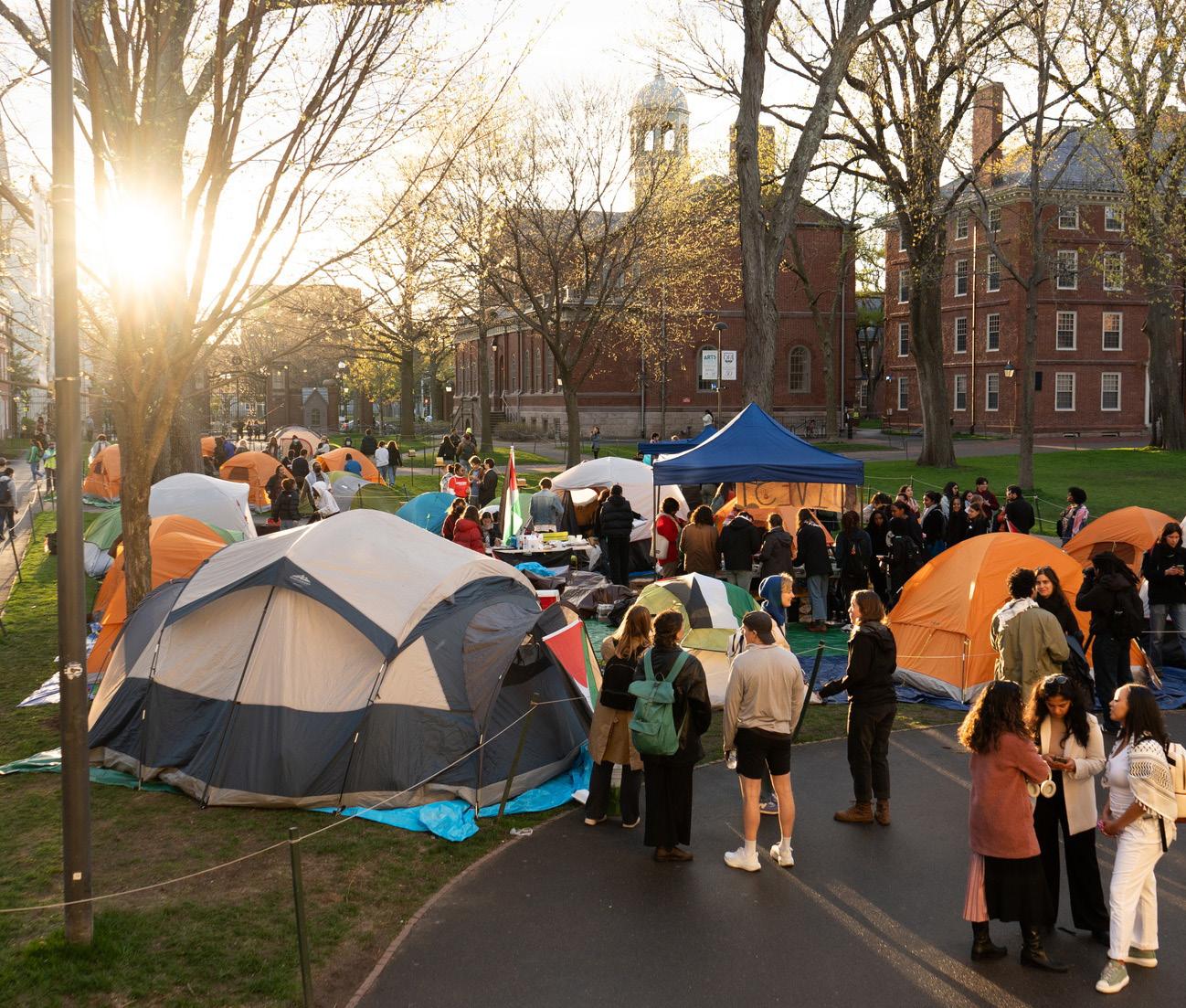
consequences” for interference with University function. “Interference with the academic mission or business functions of the University will not be tolerated,” Dunne wrote. Dunne’s email marked the first public statement from the College directly addressing the protest. By Thursday evening, protesters had pitched at least 32 tents, and dozens of campers were gathering blankets and belongings in preparation to stay a second night in the Yard. Though Cambridge has seen warm, though occasionally rainy, days this week, temperatures at night
have dipped to the low 30s. Still, it remains unclear for how many more nights the encampment will stay up, as administrators began to take a firmer stance on the demonstration following Dunne’s College-wide email.
Around 4 p.m. in the afternoon, College officials including Dunne and Associate Dean of Students Lauren E. Brandt ’01 arrived at the site to photograph the Harvard IDs of protestors remaining inside the encampment.
Following the visit, protesters briefly rallied within the encampment near University Hall, the office of top College admin-
istrators, holding up their IDs in apparent mockery of the administrators that had just left the encampment.
“You want to Ad Board us now? Come take our IDs,” one organizer shouted. The group gathered for a group keffiyeh photo in front of the encampment and chanted, “shut it down.” The encampment also saw an increased faculty presence later in the afternoon.
Harvard faculty members spotted at the encampment included Harvard Government professor Steven Levitsky, Harvard Chan School of Public
Health Professor Mary Basset, and History professors Alison Frank Johnson, Vincent Brown, and Arunabh Ghosh.
Harvard Kennedy School Professor Khalil G. Muhammad said he visited the protest to see “the peaceful nature of the students who are protesting an unjust war happening in Gaza right now,” adding that he found the protesters “inspiring.” The encampment at Harvard comes amid a surge of similar demonstrations at campuses across the country — including Columbia University, Emerson College, MIT, and Yale University — that have resulted in wide -
spread student arrests and suspensions.
Though there has been no indication that administrators will resort to arresting the protesters, who have remained peaceful through the first two days of the encampment, there was a constant police presence in the Yard since before the start of the Wednesday rally.
Harvard University Police Officers and Securitas guards were also present at gates to the Yard, restricting access to Harvard ID holders while turning away visitors and non-affiliates, including several journalists.
Although the notice posted to gates state that the Yard closures will last until Friday afternoon, it remains unclear whether the closures will extend into the weekend as the encampment approaches its third day.
Faculty of Arts and Sciences spokesperson Holly J. Jensen wrote in an emailed statement Thursday evening that the University is monitoring students’ safety.
“Harvard continues to take steps to ensure the security and safety of all members of our community, as well as mitigate disruption for students who live within Harvard Yard as they enter reading period,” she wrote. Shortly before 9 p.m., HOOP announced 15 “community guidelines” for the encampment in an Instagram post. The community guidelines included a commitment to “nonviolent direct action.” The
Pro-Palestine protesters established an encampment in Harvard Yard on Wednesday to demand that the University divest from investments and companies in the West Bank and to protest the College’s suspension of the Palestine Solidarity Committee. The encampment began at noon as an emergency rally organized by the Harvard Out of Occupied Palestine Coalition, a group of faculty, graduate, and undergraduate pro-Palestine organizations. About an hour into the rally — which reached 500 protesters at its peak — organizers ran out from various freshman dorms with tent equipment to set up an encampment in Harvard Yard in front of the John Harvard statue.
As of Wednesday evening, the encampment consisted of 23 tents decorated with cardboard signs and Palestinian flags, with large quantities of food, water, and sleeping bags stocked on site. Around 50 protesters remained at the encampment, a significant drop-off from the hundreds that initally joined the afternoon protest. The encampment comes amid a wave of similar pro-Palestinian demonstrations on college campuses across the country. At Columbia University, New York police officers arrested more
than 100 demonstrators three days after students set up an encampment on Columbia’s campus. Yale campus police arrested approximately 50 protesters on Tuesday. Pro-Palestine student groups at other Boston-area universities, including MIT and Emerson College, have also established encampments.
Interim Harvard President Alan M. Garber ’76 said in a Monday interview with The Crimson that while he would not rule out police response to a large-scale demonstration, it would require a “very high bar.”
Harvard administrators restricted access to Harvard Yard to Harvard University ID holders beginning on Sunday through Friday, in apparent anticipation of such protests. Securitas guards and Harvard University Police Department officers were stationed at every entrance to Harvard Yard on Wednesday to check IDs. Though several top College and University administrators walked around and observed the protest, the University’s first official communication came nearly seven hours after the encampment began, in response to a request for comment from The Crimson.
Harvard spokesperson Jason A. Newton wrote in a Wednesday evening statement to The Crimson that “we are closely monitoring the situation and are prioritizing the

safety and security of the campus community.
College spokesperson Alixandra A. Nozzolillo did not respond to a request for comment Wednesday evening.
Protesters involved in the protest and encampment were divided into four different levels of risk, according to a PSC organizer at the encampment. Members of the “red team” are willing to be arrested, while members of the “pink team” will stay the night and expect to face administrative action from the Harvard College Administrative board. Other students — in the “yellow team” — are marshaling and delivering supplies for the encampment, while the “green team” conducts virtual coordinating tasks and gathering of supplies.
As of Wednesday evening, the encampment remained peaceful, and no police or administrative ac-
tion has been taken — though some students are prepared to be arrested or face disciplinary action from the College for their activism.
HUPD spokesperson Steven G. Catalano said the force is “monitoring the situation,” with officers stationed around the encampment throughout the day. Earlier in the day, an HUPD officer had told The Crimson that they were stationed in the Yard for the Harvard Arts First festival, which began Wednesday.
Harvard history professor Walter Johnson — a former faculty advisor for the PSC — acted as a police liaison on behalf of the protesters. According to a statement from Cambridge Police Department spokesperson Robert Goulston, the city’s force “have not dedicated resources” to policing the protest.
The protest officially began around noon, when more than 200
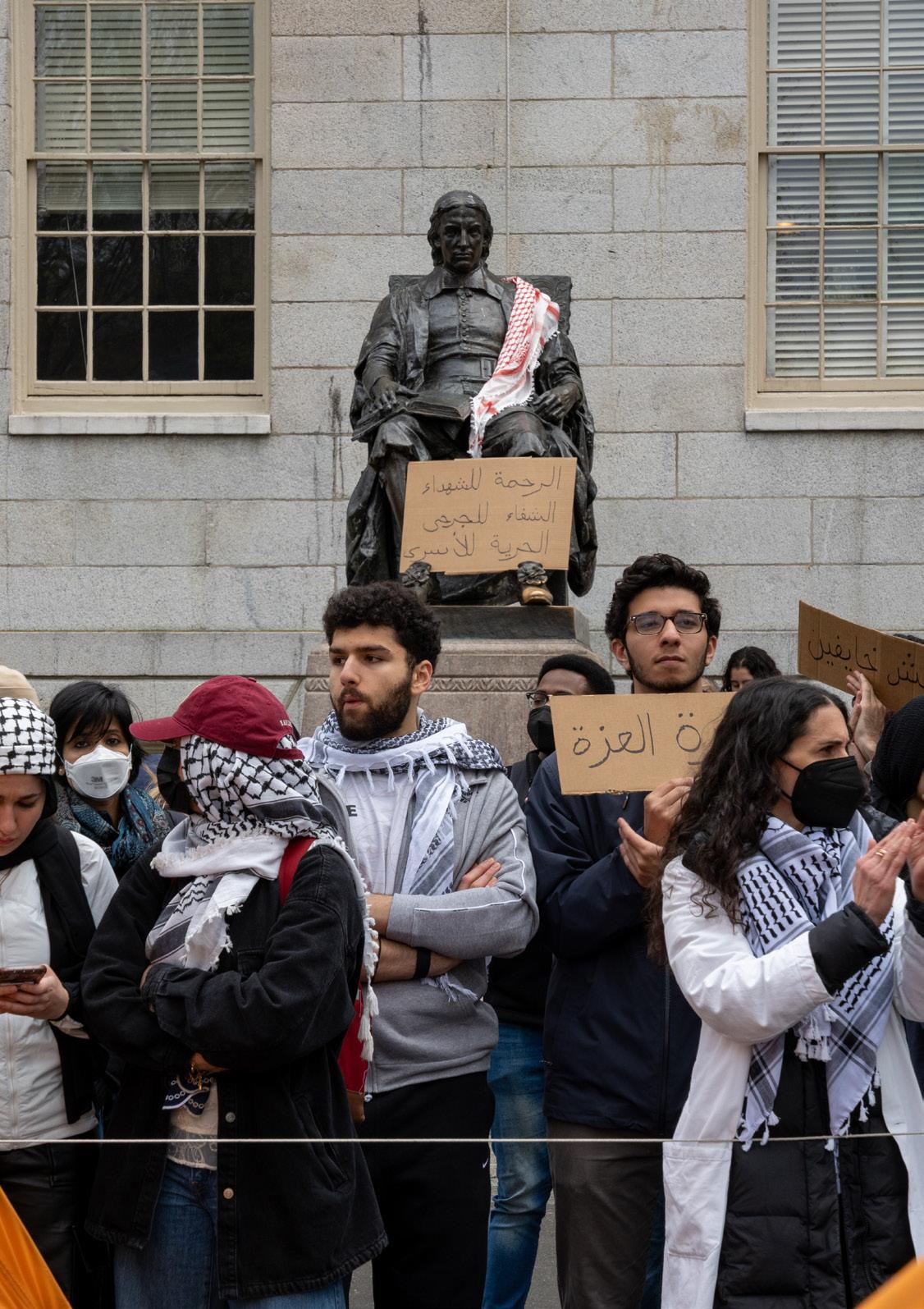
Harvard students gathered at the John Harvard statue for an emergency rally. An organizer called the College’s Monday suspension of the PSC “yet another move to curb student protest of the Zionist state.”
“Our administration has proven time and time again that it cares more about the whims of its donors than the safety of its students,” the crowd said during a call-and-response chant. “Not only does this move demonstrate a blatant disregard for Palestinian voices, but it also sets a chilling precedent for students’ right to protest.”
The group then mobilized around the perimeter of the Yard with signs and chants after an organizer announced that “it’s time to march.”
As protestors marched, organizers ran from freshman dorms carrying tents and tarps to the center of the yard. Organizers established the encampment within the next 10 minutes, though they continued to bring additional tents and supplies throughout the day.
At around 4:30 p.m., students began to pray Asr, the third Muslim prayer in a sequence of five daily prayers. Asr usually occurs between noon and sunset. Some protesters in the encampment stood around a tent and held up keffiyehs to protect the privacy of those praying.
At around 5 p.m, organizers
held a teach-in on the history of student protest, which was cut short by a brief downpour just before 6 p.m. Organizers planned for approximately 30 students
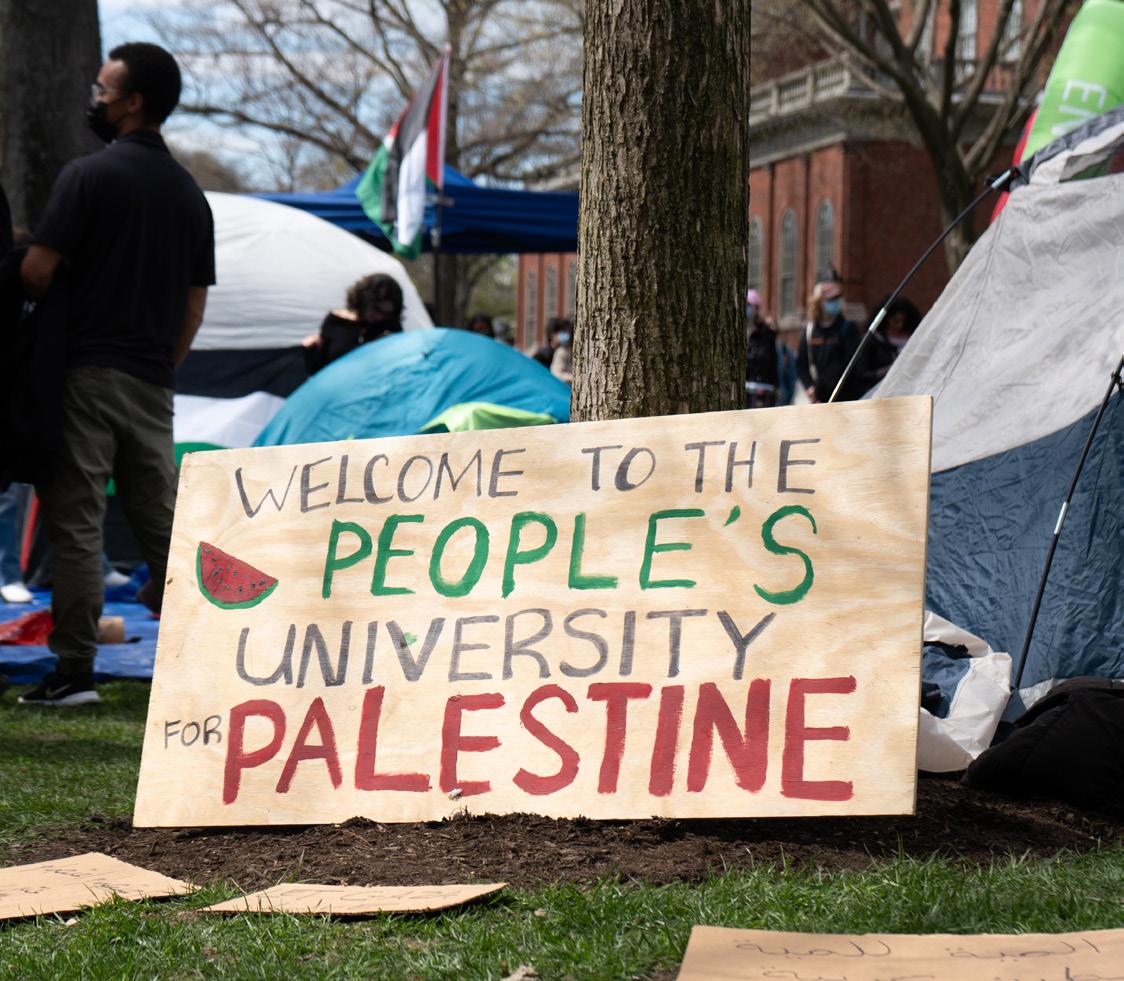
guidelines
state
pro
testors
“We are
also
that
-
will not engage with counter-protesters. “We will not damage property or resist arrest,” the guidelines state, adding that protesters will not speak with authority figures such as police, administrators, or press “without first consulting a designated liaison.”
here first and foremost in solidarity with the Palestinian people. We are here because the Israeli occupation of Palestine has not let up for 75 years, and because our university is complicit,” the first guideline states.
to spend the first night in the tents, but by around 9 p.m, approximately 50 people still remained at the encampment. Organizers constructed eight additional tents, expanding the camp towards Johnson gate. Following a dinner of nachos, leftover seder food, donated pastries, and donated Otto’s pizza, students conducted the Maghrib prayer as the sun set. At around 8 p.m., Harvard College Dean of Students Thomas Dunne told protesters they should abide by “quiet hours” between 11 p.m. to 7 a.m. Dunne added that protesters should email him if non-Harvard affiliates arrive at the encampment, and he will “work to address” the situation. A security marshal for the protest emphasized that the protesters intend to remain strictly non-violent and requested that the College Dean of Students’ Office provide warning before photographing student IDs. According to multiple organizers, protesters are prepared to camp until the demands are met or until they are forced to leave. Pro-Palestine Students Occupy Harvard Yard for Encampment Day 1 NEWS 4 APRIL 26, 2024 THE HARVARD CRIMSON BY THE CRIMSON NEWS STAFF BY CRIMSON NEWS STAFF WARNING. On day two of the encampment, College administrators warned that the demonstration violated Harvard policy. On Day 2, Protesters Face Greater Threat of Disciplinary Action More than 500 students rallied in the Yard as organizers set up an encampment in front of the statue. JULIAN J. GIORDANO — CRIMSON PHOTOGRAPHER A sign advertising the “Liberated Zone” sits next to an inflatable watermelon with the slogan “End the Siege.” IKE J. PARK — CRIMSON PHOTOGRAPHER The encampment is the latest in a string of widespread student demonstrations at campuses across the country. ADDISON Y. LIU — CRIMSON PHOTOGRAPHER ADDISON Y. LIU — CRIMSON PHOTOGRAPHER
Both prospective units of the Harvard Union of Residential Advisors voted against unionization Wednesday, ending HURA’s year-long fight — including a two-monthslong public campaign — to unionize Harvard’s residential tutors, proctors, and house aides. Proctors and tutors voted 15188 against unionization, and house aides, a separate prospective unit, voted 14-6 against the formation of the proposed Harvard Union of Residential Advisors. The failed unionization vote came despite high turnout, with 239 votes out of a possible 323 from proctors and tutors and 20 votes out of a possible 32 from house aides. HURA had filed with the National Labor Relations Board on March 6, only a month and a half before their slated election dates.
For some residential advisers, the unionization process felt opaque, and they arrived at voting without a strong connection to the movement.
Alex Braslavsky, a tutor in Pforzheimer House, said that at the polls, she didn’t “feel informed” enough to vote. Braslavsky said she had neither met the organizers nor felt confident in “what the outcomes would be if we were to unionize.”
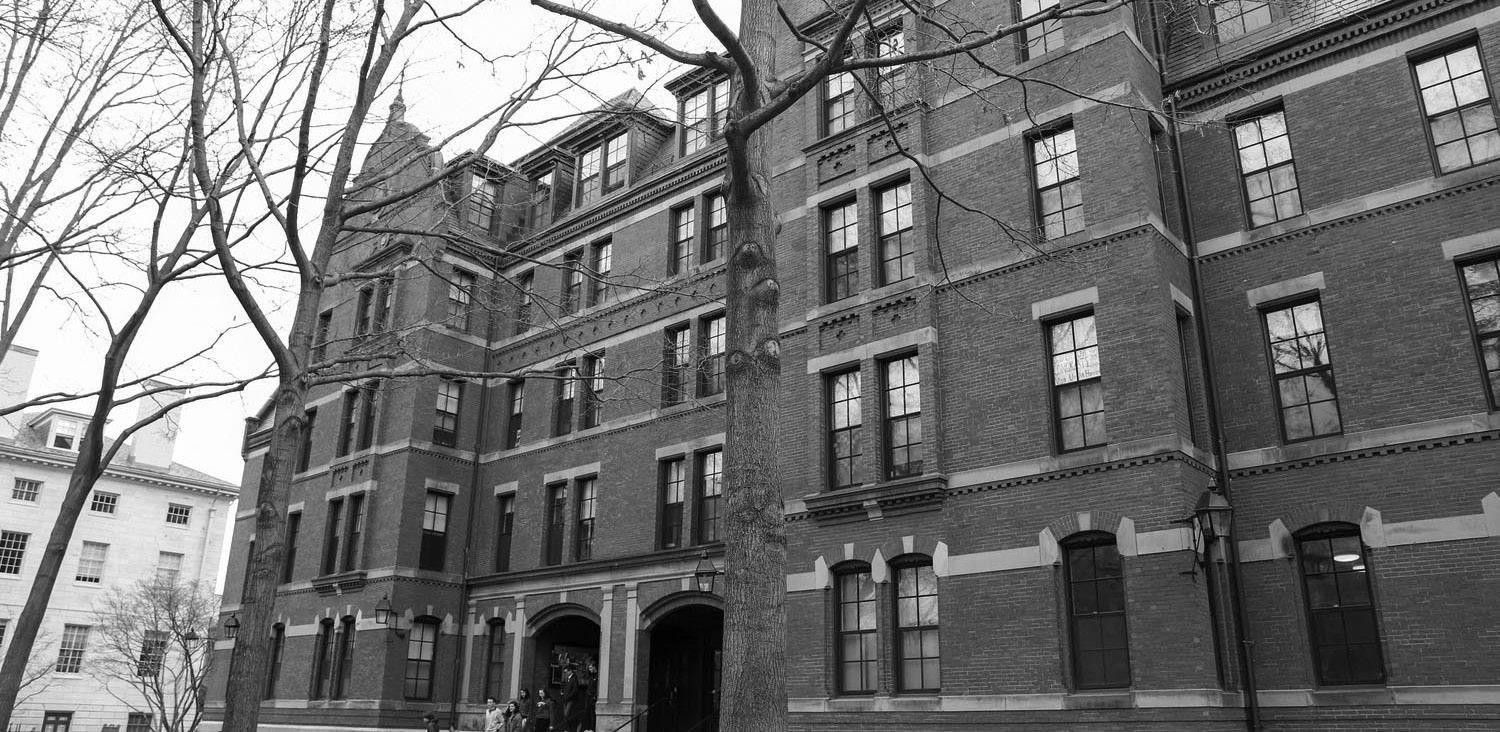
Ivor K. Zimmerman ’23, a house aide in Kirkland House, said, “we just decided that it wasn’t necessarily in our best interest.”
“I think a lot of house aides felt that we were in a really tenuous position and shared a lot of the concerns that the proctors seemed to have,” he said.
Still, Zimmerman said he was “surprised to see the results.”
Still, she said, “I’m voting because it feels as though were I not to vote, I would still be voting.” “I would still be supporting whatever the outcome would end up being, so I feel kind of responsible, and I feel I should be responsible to the situation, and I should vote,” she added.
“I thought 100 percent it would pass,” he said, but “the last two weeks the vibe completely changed, which is sort of bizarre.”
In the weeks leading up to the election, HURA suffered internal fractures as allegations emerged of poor communication by union leadership and disconnect between proctors and tutors.
At the same time, HURA alleged that College administrators had engaged in union-busting tactics in an effort to combat their unionization efforts, citing “captive audience meetings” and anti-union messaging through emails to tutors, proctors, and house aides.
Anti-union posters then began to pop up around campus — particularly in undergraduate Houses and dormitories. According to the posters, they were “paid and supported by a coalition of proctors” and urged residential advisors to vote “no” on HURA.
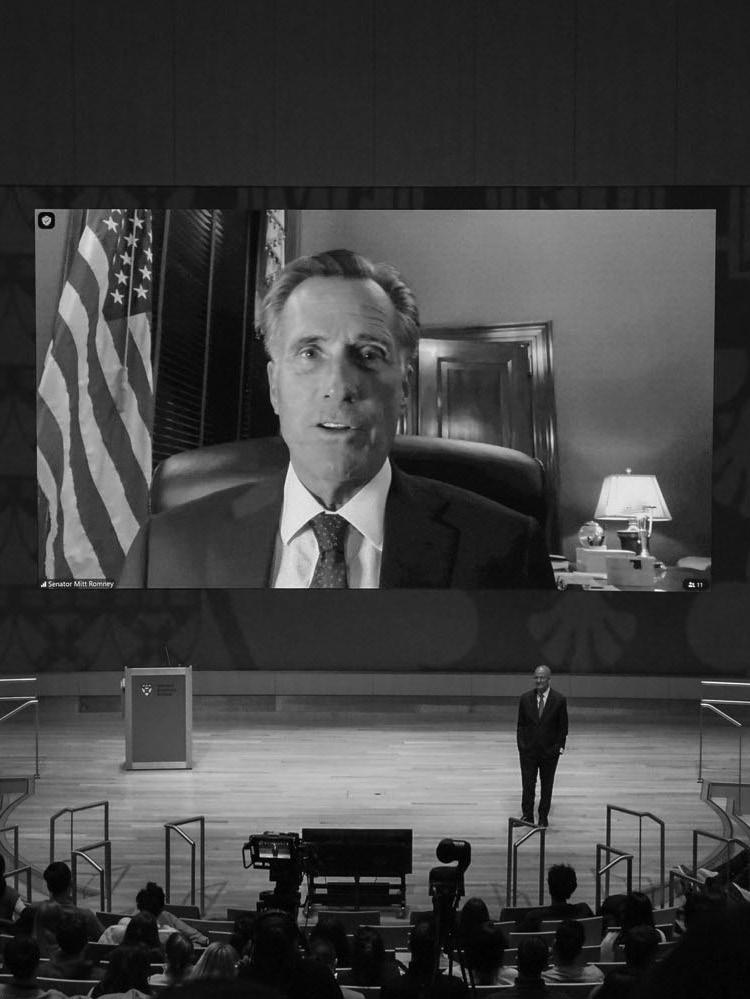
Sen. John Fetterman (D-Pa.) endorsed an unlikely candidate to serve as the 31st president of Harvard University: his colleague, Sen. Mitt Romney (R-Utah). There is no indication that Romney, who ran for the U.S. presidency in 2012, is actually a candidate to become president of Harvard, but the idea gained traction after American Jewish Congress President Daniel J. Rosen ’96 recommended Romney for the role in an op-ed for the Washington Post. Fetterman, a graduate of the Harvard Kennedy School, posted Rosen’s article on X and wrote in a caption that he agreed that Romney would be a good fit for his alma mater. “I co-sign,” Fetterman wrote. “This former Governor of Massachusetts doesn’t need a paycheck, but Harvard and its academic peers needs to recalibrate from far-
An email account called “concernedproctorsandtutors@protonmail.com” also began blasting messages to large lists of Harvard students and affiliates, outlining specific concerns that the group had with the unionization effort and HURA itself. Zimmerman said the anti-union messaging “introduced some doubt as to whether their co-workers actually wanted them.”
“I think a lot of people were gonna vote yes, because they wanted to express solidarity with their co-workers,” he said.
BOSTON — Nikole Hannah-Jones, a Pulitzer Prize-winning journalist and creator of the 1619 Project,
evening. The discussion, moderated by Harvard student Kiersten B. Hash ’25, followed a series of panel discussions, speeches, receptions, and even performances to discuss the theme of “Reckoning with History, and Shaping the Future” at the two-day symposium. Dozens of people, including former Harvard President Clau-
dine Gay, attended the symposium in-person at the Museum of African American History. Gay’s predecessor, former Harvard President Lawrence S. Bacow, pledged $100 million in 2022 to implement the recommendations from the presidential committee on Harvard and the Legacy of Slavery.
During the symposium, Hannah-Jones likened the $100 million endowment to a “rounding error,” when compared to how much Harvard had profited off of slavery.
Though Hannah-Jones expressed appreciation towards the University’s commitment to research and uncover the truth behind its financial and institutional ties to slavery, she said that “no reckoning has occurred.” “The truth-telling is just the beginning,” she said. “We’re not even
close to a reckoning.”
In a Wednesday email to The Crimson, Harvard spokesperson Jason A. Newton said the University is grateful for “thoughtful and critical perspectives on how we can continue to advance the work of addressing systemic inequities impacting descendant communities.”
He said the initiative is “committed to advancing this work alongside partners across the University and the broader community.”
Hannah-Jones also discussed how the unraveling of Harvard’s Legacy of Slavery report was a belated acknowledgement of “the truth that everybody already knows.” “Because we have been and faced denial of both the institution of slavery and its ongoing legacy for so long,” she said.
left orthodoxy,” he added. A Harvard spokesperson declined to comment on the endorsement.
Romney, who is an alumnus of Harvard Business School and Harvard Law School, jokingly responded to the rumors Tuesday and said his potential candidacy would cause “mayhem.”
“One way of ending the demonstrations on Gaza would be to name me president of Harvard because then the demonstrations would all be about getting rid of President Romney,” said Romney, who will not be running for re-election this fall.
As neither a tenured professor nor a University administrator, Romney is almost certainly not a viable candidate for the position. However, he is not the first politician to be heavily suggested for the job.
Former U.S. President Barack Obama was widely rumored to be a candidate to succeed former University President Claudine Gay, but The Crimson reported in February
Abhishek Raman, a Lionel Hall proctor, said, “People have spoken.”
“I think now is the time to get back to the business of serving our students, which is what our role entails,” Raman added.
Though HURA’s unionization effort was not successful, Zimmerman said “it will ultimately be a good thing if the University realizes that it needs to do these things and fix these problems that the union was addressing.” “If they don’t, I anticipate there’ll be another unionization effort, maybe even next year,” he said.
Harvard College Dean of Students Thomas Dunne wrote in an emailed statement to The Crimson that “through this process, important issues were raised, and we look forward to working collaboratively with all members of the tutor, proctor, and house aide cohorts to strengthen our residential community.”
will not be the first administrative position for Lesaux, a professor of
and
development who served as HGSE’s academic dean from 2017 to 2021. At HGSE, Lesaux co-directs the Saul Zaentz Early Education Initiative alongside HGSE professor Stephanie M. Jones. The initiative launched an Early Learning Study at Harvard, a population-based study examining children’s development within their early education and care environments.
In his email, Garber also announced the formation of a 13-member search faculty advisory committee with members from HGSE, the Faculty of Arts and Sciences, the Harvard Kennedy School, and the Harvard Business School to offer input on the search for a permanent successor to Long.
that Obama was not in the running.
While Romney is unlikely to become Harvard’s next president, Fetterman’s comments demonstrate that even some Democratic lawmakers are concerned that elite universities like Harvard have become too left-wing.
Shortly after Gay’s abrupt Jan. 2 resignation, the Harvard Corporation – the University’s highest governing body – said information about an upcoming presidential search would come in “due course.”
But four months later, the Corporation has not released any new information about the state of the process. Interim Harvard President Alan M. Garber ’76 has emerged as a potential front-runner to permanently succeed Gay.
In an interview with The Crimson on Monday, Garber said he had agreed to stay in the role beyond June 2024, but declined to further discuss the presidential search.
The launch of an official search is the latest sign that Garber is taking steps that would be more typical of a permanent University president. Despite serving less than four months in an interim capacity, he has already appointed an interim provost and the dean of another graduate school, the Kennedy School. Garber has also overseen the launch of several notable University initiatives, including a working group to discuss institutional neutrality.
“The members of this faculty advisory committee—whose names are listed at the end of this message—bring a depth of wisdom and experience that will be critical as we work to develop a nuanced understanding of the School and search for an outstanding leader to help guide HGSE into the future,” Garber wrote. Garber also solicited input from HGSE affiliates as the search process launches.
“We will
Upon finding out during the event that Harvard has given over $2 million to descendants of those who were enslaved on Harvard’s campus or enslaved by Harvard faculty, Hannah-Jones called the amount “insulting” to descendants. “A true investment would be hundreds of millions more,” she said.
In an interview with The Crimson, Hannah-Jones also said that she was interested in “how the funds are being spent and distributed,” which some descendants and advocates have said are outlined too vaguely. “If you are serious about an acknowledgement and trying to make repair, transparency is the number one thing because why would people trust an institution with this history to do the right thing,” she said.
During her speech, she also described initiatives to rename buildings on Harvard’s campus honoring historical Harvard leaders and faculty who owned slaves or had financial ties to slavery — such as the student-led effort to dename Winthrop House — as “critical.” “Absolutely these should be renamed,” Hannah-Jones said. “We have to say that we are not going to hold up people who were engaged in one of the worst human rights atrocities in the history of the world.”
In addition to dedicating more funding to descendants, Hannah-Jones recommended the implementation of “a lineage-based affirmative action program” based on ancestral ties to individuals who were
Harvard
Vote
Weld Hall is one of Harvard’s freshman dormitories. Harvard’s residential advisors voted against unionizing Wednesday. RYAN N. GAJARAWALA — CRIMSON PHOTOGRAPHER NEWS 5 APRIL 26, 2024 THE HARVARD CRIMSON LABOR BY ARAN SONNAD-JOSHI AND SHEEREA X. YU CRIMSON STAFF WRITERS aran.sonnad-joshi@thecrimson.com sheerea.yu@thecrimson.com NO UNION. Proctors, tutors, and house aides voted against forming a union on Wednesday, ending a year-long fight for union representation. Nonie K. Lesaux will serve as interim dean of the Harvard Graduate School of Education after Bridget Terry Long departs the post at the end of this academic year, interim Harvard President Alan M. Garber ’76 announced in a Thursday email to HGSE affiliates. This decision comes three months after Long’s announcement of her resignation back in January, during which time HGSE released no public information about a search for her successor. The first public update came when Garber said he intended to select an interim dean during a Monday interview with The Crimson. “Nonie is a widely respected scholar and educator whose work appears in numerous scholarly publications and has influenced state and national educational policy,” Garber wrote in his email, which was also signed by interim Provost John F. Manning ’82. “We are grateful to Nonie for her willingness to lead the School in this interim period, and we hope you will join us in congratulating her on this new role.” This
Residential Advisors
Against Unionization
education
human
Garber Taps Lesaux For Interim HGSE Dean BY KATIE B. TIAN CRIMSON STAFF WRITER
be interested to hear your thoughts about the challenges and opportunities facing the School, and the qualities and experience you think will be important for us to seek in its next leader,” Garber wrote.
katie.tian@thecrimson.com
Fetterman Endorses Romney To Become Harvard’s Next President BY EMMA H. HAIDAR AND CAM E. KETTLES CRIMSON STAFF WRITERS emma.haidar@thecrimson.com cam.kettles@thecrimson.com
Democratic Senator John Fetterman endorsed Romney, a Republican, to serve as Harvard’s next president. EMILY L. DING — CRIMSON PHOTOGRAPHER
slammed Harvard’s $100 million commitment to its Legacy of Slavery initiative as “a joke” during her keynote talk at the University’s Legacy of Slavery Symposium on Tuesday
enslaved, full-ride scholarships to descendants, and giving “a substantial sum” of Harvard’s endowment to historically Black colleges and universities. “All the HBCUs combined don’t have the endowment of Harvard alone,” she said. Hannah-Jones also commented on how the impact of Harvard’s affirmative action Supreme Court case reaches far beyond just admission into elite colleges. “They’re using that law to sue every type of program that even mentions race,” Hannah-Jones said. She urged Harvard affiliates to continue to fight for what they see as right in an era where institutions like Harvard have shown “a bunch of cowardice.” “We have to be beyond that,” she said. “We have to be demanding more.” ‘A Joke’: Hannah-Jones Slams Meager Legacy of Slavery Funding BY NEERAJA S. KUMAR AND ANNABEL M. YU CRIMSON STAFF WRITERS neeraja.kumar@thecrimson.com annabel.yu@thecrimson.com
Harvard College suspended the Harvard Undergraduate Palestine Solidarity Committee and ordered the group to “cease all organizational activities for the remainder of the Spring 2024 term” or risk permanent expulsion, according to an email obtained by The Crimson.
The suspension comes amid a wave of pro-Palestine student demonstrations across the country, with students staging occupations at universities including Columbia and Yale Universities. Though there have not been occupations at Harvard this semester, the University restricted access to Harvard Yard on Sunday in anticipation of student protests.
The PSC was one of several student organizations, including some unrecognized student organizations, to stage a rally in Harvard Yard on Friday in solidarity with student activists at Columbia, more than 100 of whom were arrested on Thursday by the New York City Police Department.
During the rally, attendees marched and chanted outside the offices of administrators in the Yard, concluding on the steps of Widener Library.
The group also found itself at the center of controversy in the immediate aftermath of Hamas’ Oct. 7 attack on Israel, when the PSC published a statement cosigned by more than 30 other student groups that stated it held “the Israeli regime entirely responsible for all unfolding violence” from Hamas’ attack. In an email to the PSC, the College specifically cited Friday’s protest when informing the group of its suspension for the remainder of the spring semester, noting that the group had failed to register the demonstration and violated protest guidelines regarding responsible use of space. The group had previously been placed on probation by the College in March, according to the email. “The organization will not be recognized and will not have access to university benefits and services during this time, including but not limited to use of campus space and appropriate use of the Harvard name,” the email stated. “If the organization continues to operate and commits additional violations during this suspension, the organization risks permanent expulsion, as provided in the Resource Guide.”
In a message in a group chat of pro-Palestine organizers obtained by The Crimson, one organizer wrote that the PSC was suspended over their collaboration with unrecognized groups including Jews for Palestine, which staged an occupation of University Hall in November. College spokesperson Jonathan Palumbo wrote in a state-
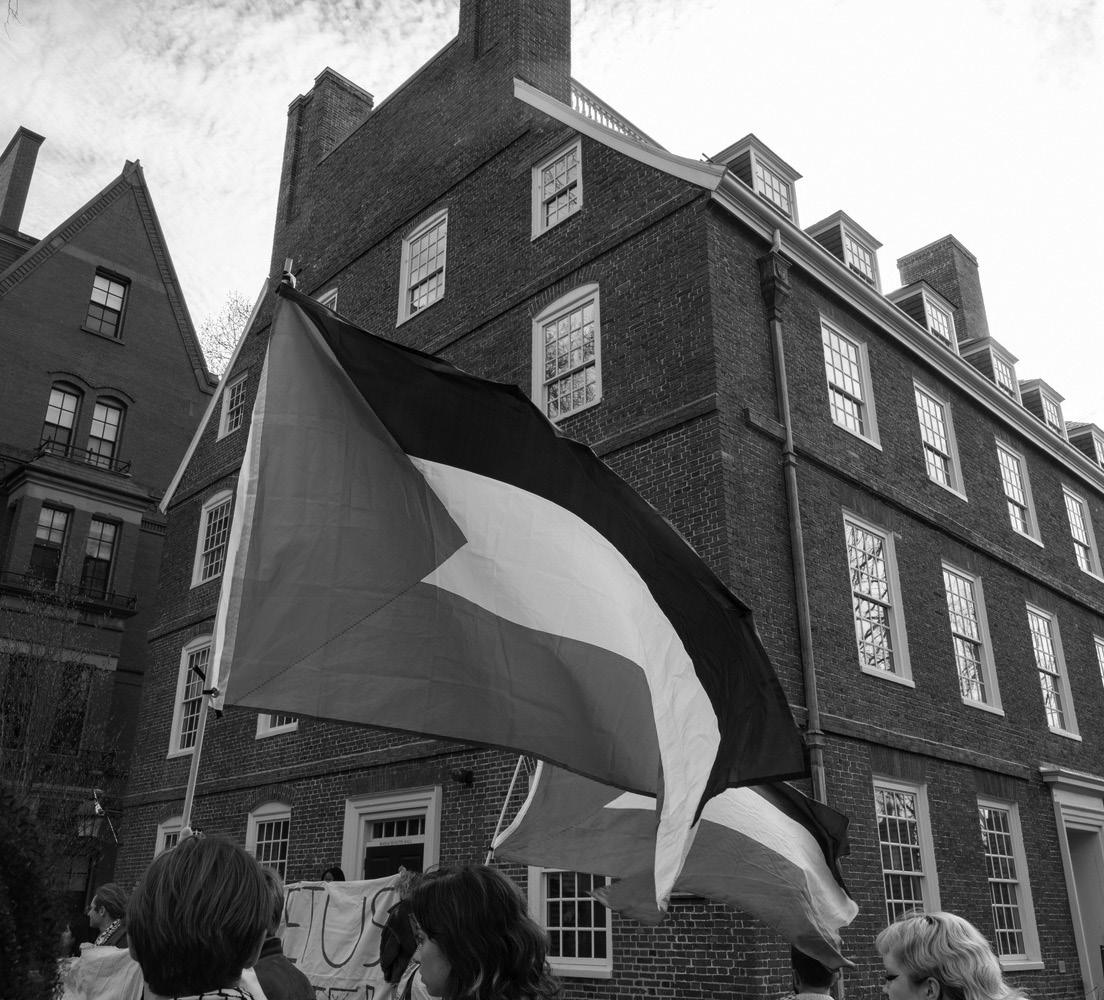
ment that Harvard “works closely with our recognized independent student organizations to ensure they are following existing policies outlined in the Student Organization Resource Guide and all College and University expectations.”
“The College is committed to applying all policies in a content-neutral manner and in close partnership with our student organizations,” Palumbo added. “All student organizations are required to participate annually in training on these policies, and any organization found in violation of the policy is subject to corrective action.”
The PSC released a statement Monday afternoon which stated that the organization’s suspension comes after “months of admin-
istrative repression, harassment and stalking by our own peers, and intimidation from right-wing politicians and donors.”
“After standing idly by as pro-Palestine students faced physical and cyber harassment, death threats and rape threats, and racist doxxing, Harvard has now decided to dismantle the only official student group dedicated to the task of representing the Palestinian cause,” the statement reads.
The Harvard Faculty and Staff for Justice in Palestine wrote that they were “outraged” by the suspension in an Instagram post Monday evening denouncing the decision.
FSJP called on Harvard to “reinstate the PSC immediately.”
As of early March, Harvard has submitted nearly 4,900 pages of material to the committee in 11 submissions, but Chairwoman Virginia Foxx (R-N.C.) has repeatedly accused Harvard of obstructing the investigation by declining to submit disciplinary records and unredacted meeting minutes from the University’s governing boards. Garber declined to say if the University had submitted the requested material, but insisted the University had responded to the requests “in good faith.”
While the committee appears to have put a pin in its investigation into Harvard, it has stayed busy launching investigations into how antisemitism has been handled at other universities including MIT and Columbia. Columbia University President Nemat “Minouche” Shafik
After Harvard responded with additional materials in response to the subpoena, the committee said its submissions to date amounted to “malfeasance” and said the committee would consider further action against the University. Almost two months later, the committee has not released any additional information on where the investigation stands, but Garber said Harvard is still in “periodic” contact with the committee.
“We’ve been cooperating with committee in good faith responding to their requests for information,” Garber said.
“As far as I know, they are continuing their process and we are continuing to cooperate,” he added. A committee spokesperson declined to comment on the state of the investigation.
testified before the committee on April 17 as campus protests began to pick up steam. Garber said he had not watched Shafik’s testimony before the committee because he was “in meetings all day.” “I’ve seen bits of this in the press coverage, but I actually do
not know exactly what she said so I don’t feel like I’m in a position to comment on that,” Garber said.
While Shafik managed to avoid any viral missteps during her hearing, she is still facing serious calls to resign over her handling of pro-Palestine protests on Columbia’s campus.
Some faculty and students at Columbia criticized Shafik over her decision to have student protesters arrested by the New York City Police Department, while House Republicans slammed Shafik for not taking further action to quell the demonstrations.
Garber has avoided being the center of controversy during the first 100 days of his presidency, but it is not clear how long he will remain successful in his efforts to limit campus protests.
The University suspended the Harvard Undergraduate Palestinian Solidarity Committee Monday for previously collaborating with unrecognized student groups. The University also closed Harvard Yard to non-affiliates Sunday evening, as student activists across the country organized protests in solidarity with Columbia.
Garber declined to comment on widespread concerns that the committee had been engaging in bad faith attacks on higher education.
“I believe that concern about antisemitism is widespread,” Garber said. “Most of the people who I have heard from — including members of Congress that I’ve spoken with — really do care about antisemitism and expect us to do something about it, certainly on our campus.”
“We’re committed to doing so,”
Melanie G. Northrop, a Harvard Counseling and Mental Health Services employee who served as the case manager for Luke Z. Tang ’18, was found not guilty of “negligence and carelessness” in her care for Tang, a student who died by suicide in 2015. The jury reached its not guilty verdict Tuesday afternoon after more than 10 hours of deliberations. To reach the decision, at least 10 out of the 12 jurors had to agree that Northrop fulfilled her responsibilities to Tang.
The verdict included eight questions, the first of which asked whether Northrop was negligent in her case management of Tang, as well as instructions to proceed to sign and submit the verdict for the defendant.
While the burden of proof required of the plaintiff in a civil case is lower than that of a criminal case, the jury still ruled in favor of Northrop. The verdict followed eight days of witness testimonies — which included testimony from Tang’s parents, Northrop, and mental health professionals at McLean Hospital who interacted with Tang. The trial over the wrongful death lawsuit began on April 9 at the Middlesex Superior Courthouse in Woburn, Mass. Northrop — who was responsible for coordinating Tang’s mental health treatment and resources — first met with Tang after he was discharged from McLean Hospital following his initial suicide attempt in April 2015. Tang told Northrop during
Harvard’s student organization policies state that “student organizations may not co-sponsor on-campus events with external or unrecognized organizations.”
“For the past 6 months, PSC has faced unprecedented repression — doxxing, racist harassment, and targeted administrative crackdowns — as we’ve protested the ongoing genocide in Gaza,” the PSC wrote on Instagram. “After being placed on an illegitimate and retroactive probation, PSC has been suspended.”
“We call on the Harvard community to fight against repression and join the movement for Pales-
The post stated that the University “has summarily disposed of academic freedom and constitutionally protected freedoms of dissent in an effort to silence students speaking out about apartheid, occupation and genocide.”
tinian liberation,” the post continued. “History is watching you.”
In January, interim President Alan M. Garber ’76 and 15 top deans sent a University-wide email emphasizing the protest guidelines in the University-wide Statement on Rights and Responsibilities.
In the email informing the PSC of its suspension, the College stated that the group has until Wednesday at 5 p.m. to appeal the decision to Associate Dean of Student Engagement Jason Meier. The PSC will also be able to apply for reinstatement at the beginning of the fall 2024 semester if it abides by the terms of its suspension, according to the email.
the meeting that he planned to spend the summer in China before returning to Harvard for the fall semester. Northrop told Tang that he needed to continue his treatment during his time in China, according to the original lawsuit.
On May 1, Tang signed a contract with the College outlining the terms of his continued enrollment at Harvard. The terms stipulated that Tang was expected to actively participate in his treatment plan, remain on any prescribed medications, and turn to medical professionals in the event of distress. The lawsuit accused Northrop of helping write a contract which “failed to provide reasonable safety” for Tang, failing to enforce the contract’s terms, and failing to include provisions requiring Tang to seek treatment when he returned to campus. “Tang had no mental health counseling between May 16, 2015 and September 12, 2015,” the complaint alleges.
During closing arguments Monday, Northrop’s attorneys — William J. Dailey III and Victoria C. Goetz — argued that Tang “made a choice not to get treatment.”
However, attorneys for the estate of Tang — Michael J. Heine
The Harvard Undergraduate Palestine Solidarity Committee was suspended on Monday by the College. JULIAN J. GIORDANO — CRIMSON PHOTOGRAPHER
man and David W. Heinlein — maintained that Northrop’s negligence caused Tang’s death and asked the jury to award Tang’s parents a total of $22 million in damages. Lawyers for either party could not be reached for a request for comment on Wednesday. The judgment on the jury verdict states that “the above plaintiff(s) take nothing, that the action be dismissed on the merits, and that the defendant(s) named above will not recover statutory costs.” Tuesday’s verdict comes after six years of litigation over the wrongful death lawsuit, which began in 2018 when Tang’s father, Wendell Tang, filed suit. The lawsuit alleged that Harvard and several of its employees — including Northrop, Senior Resident Dean Catherine R. Shapiro, and former Lowell House Resident Dean Caitlin M. Casey ’03 — were negligent in their care for Tang after he initially attempted suicide in April 2015. Massachusetts Superior Court judge Brent A. Tingle allowed the suit to move forward against Northrop in November 2022 after Harvard’s lawyers argued for a ruling without trial. Tingle dismissed the claims against the other defendants — Harvard, Shapiro, and Casey — in December 2022, writing that they sufficiently satisfied their duty of care to Tang. In January 2023, Tang’s family appealed the dismissal. While Tang’s parents have 30 days to appeal the verdict, it is unclear if they will choose to do so. Interim Harvard President Alan M. Garber ’76 has so far escaped an invitation to testify before the House Committee on Education and the Workforce, but if asked, he would say yes. “If I am called to testify before Congress, I intend to do so,” Garber said in an interview with The Crimson on Monday. The committee has refrained from calling Garber to Washington even as they subpoenaed him in February to demand internal documents and communications as part of its ongoing investigation into campus antisemitism. The investigation into the University seems to have slowed down in recent weeks as the committee’s focus has turned to Columbia University, but Harvard might not be off the hook just yet.
he added. NEWS 6 APRIL 26, 2024 THE HARVARD CRIMSON BY MICHELLE N. AMPONSAH AND JOYCE E. KIM CRIMSON STAFF WRITERS STUDENT GROUPS michelle.amponsah@thecrimson.com joyce.kim@thecrimson.com BY EMMA H. HAIDAR AND CAM E. KETTLES CRIMSON STAFF WRITERS BY MICHELLE N. AMPONSAH AND JOYCE E. KIM CRIMSON STAFF WRITERS emma.haidar@thecrimson.com cam.kettles@thecrimson.com michelle.amponsah@thecrimson.com joyce.kim@thecrimson.com POLICY VIOLATIONS. The College suspended the Harvard Undergraduate Palestine Solidarity Committee on Monday. Alan Garber ’76 Interim Harvard President We’ve been cooperating with committee in good faith responding to their requests for information. As far as I know, they are continuing their process and we are continuing to cooperate. “ President Garber Says He Is Willing to Testify Before Congress Jury Finds CAMHS Employee Not Guilty of Negligence in Suicide Case THC Read more at THECRIMSON.COM Harvard Suspends Palestine Solidarity Committee
Encampment Not Affiliated with PSC
the encampment to protest the College’s decision to suspend the
on Monday, after the group allegedly violated the terms of its one-month probation by organizing an unregistered protest on Friday that was co-sponsored by unrecognized student organizations. According to an internal University document obtained by The Crimson, the PSC did not complete the terms of their probation, despite meeting with the Dean of Students Office multiple times to clarify the College’s policies around organized protests. Even as a suspended student organization, the PSC played a primary role in amplifying the protest, posting information about HOOP’s encampment and videos of protesters on Instagram throughout Wednesday. Many PSC members also helped organize the encampment through HOOP.
“Rally today at noon in front of Mass Hall to let Harvard know: you can suspend PSC, but you can’t suspend the movement,” the PSC posted on Instagram early Wednesday. Still, the decision to insist the PSC was not involved in organizing the encampment is likely an effort by the group to prevent the College from taking further action against the organization.
In a statement Thursday, the PSC again reiterated that the encampment was a “collective action by the HOOP coalition” and referred The Crimson to a letter from the American Civil Liberties Union
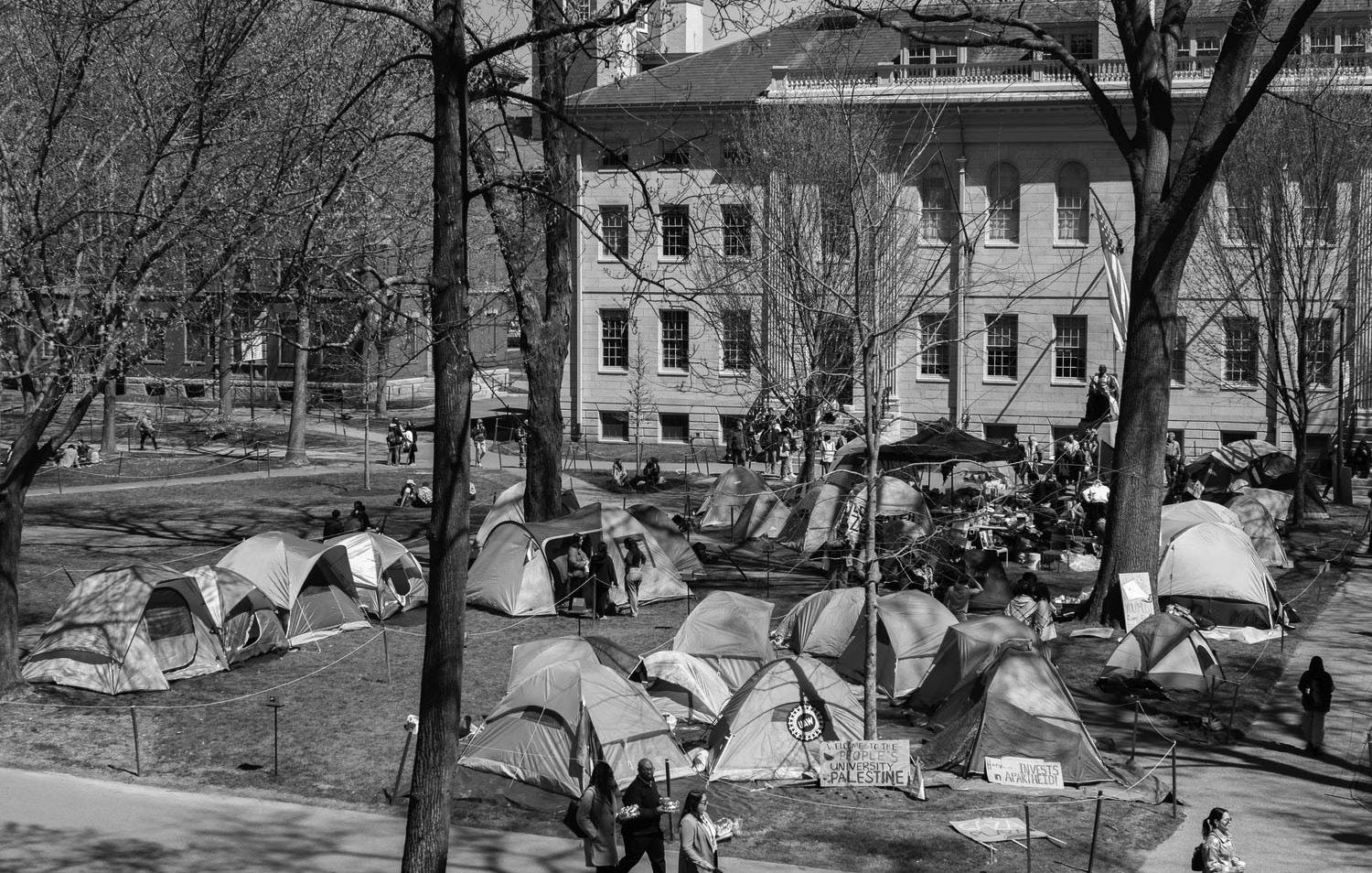
of Massachusetts to the University objecting to the decision to suspend the group. “The Palestine Solidarity Committee is grateful for the solidarity and initiative of HOOP, and all others who raise the call for Palestinian liberation and divestment at Harvard,” the group wrote. “As we have done all semester with the approval of the Dean of Students office, we will continue to leverage our social media to amplify actions by pro-Palestine movements on our campus and on other college campuses.”
According to an email obtained by The Crimson, the PSC is under threat of permanent expulsion if they continue activities this semester as a suspended group.
The concerns of disciplinary action also loomed large as the protest entered its second day. In a Thursday afternoon email, Dean of Students Thomas Dunne said the encampment violated Harvard
policy and threatened disciplinary action against protesters.
At the start of the encampment, protest organizers called on the University to drop disciplinary action against student organizers, calling it the “weaponization of disciplinary policy.”
The encampment in the Yard, however, clearly violates several Harvard policies and was almost certainly unregistered with the College, as is required of all protests.
College Dean Rakesh Khurana defended the suspension in a Tuesday interview, citing “content-neutral” restrictions on student organizations and activism. But it is still unclear how the University will respond to the encampment, if at all. Besides a University spokesperson telling The Crimson that Harvard officials were “monitoring the situation,” top administrators remained silent on Wednesday as the demonstration continued peacefully into the evening.
College spokesperson Jonathan Palumbo declined to comment on the future of the PSC and potential disciplinary action, citing a policy against commenting on “interactions with students or student organizations.”
The encampment’s organization also reflected that organizers were highly conscious of the potential for the University and the College to take action against the encampment’s participants.
Protesters are designated as one of four groups — red, pink, yellow, and green — according to an organizer at the encampment. While the “red team” includes volunteers willing to be arrested, the “pink team” are protesters expecting to face disciplinary action from the Harvard College Administrative Board.
he said, adding that behavior that interferes with University functions will “not be tolerated.” The email also states that erecting structures, tents, and tables in the Yard without authorization “is a violation of the rules.” On Sunday, the University restricted access to Harvard Yard in apparent anticipation of protests. The signs warned of disciplinary measures against Harvard students and affiliates who bring in unauthorized structures such as tents or tables or block access to building entrances. The encampment was constructed Wednesday early afternoon by the Harvard Out of Occupied Palestine coalition — a group of faculty, graduate, and undergraduate pro-Palestine organizations — to demand that the University divest from its institutional and financial ties to Israel’s settlements in the West Bank. Protesters also demanded that Harvard refrain from taking disciplinary measures against pro-Palestine activists, following Monday’s suspension of the Palestine Solidarity Committee, which had been the only remaining pro-Palestine group recognized by the College. Dean of the College Rakesh Khurana observed the encampment Wednesday and Thursday morning from a distance and spoke with organizers on
Thursday morning, but declined to comment on whether he was negotiating with HOOP about clearing the encampment.
Still, it is likely that he will take on a primary role engaging and negotiating with protesters, as he did during the occupation of University Hall by nine pro-Palestine students in November.
Khurana repeatedly declined to comment on the College’s response to a potential encampment or occupation on Harvard’s campus similar to those at other universities in a Tuesday interview with The Crimson. “I’m not going to engage in hypotheticals,” he said.
Dozens of organizers slept in the encampment overnight. The group said Wednesday that they will remain in the encampment until the University meets their demands.
The encampment at Harvard comes amid a wave of similar pro-Palestine protests at campuses across the country — including Columbia University, New York University, and University of Southern California— that have resulted in hundreds of student arrests and suspensions. At Harvard, University officials have remained mostly silent on the demonstration, though several top administrators were seen spectating from a distance.
Harvard spokesperson Jason A. Newton wrote that the University is “closely monitoring the situation and are prioritizing the safety and security of the campus community” in a statement Wednesday.
Interim Harvard President Alan M. Garber ’76 said in a Monday interview that he would not rule out police response to a large-scale demonstration that violated the University’s policies, though he said it would require a “very high bar.”
The encampment remains peaceful, and Harvard campus police — who have been stationed throughout the Yard since Wednesday morning, before the encampment officially began — have yet to intervene.
Members of the “yellow team” and “green team” are responsible for lower-risk activities like acting as boundary marshals, providing supplies, and virtually coordinating the action. While interim President Alan M. Garber ’76 said the University has a “very, very high bar” before turning to law enforcement to remove protesters, he did not rule out the possibility of police involvement in the case of “concerns about violence” or “threats to safety” in a Monday interview. The PSC’s suspension comes in the wake of a surge of occupations and protests on university campuses.
On Monday, the College suspended the Harvard Undergraduate Palestine Solidarity Committee after it allegedly violated the terms of its probation when it participated in a rally on Friday alongside unrecognized student groups. But if the suspension was an effort to discourage student protesters from mimicking similar largescale encampments at Columbia University and Yale University, it backfired.
More than 500 Harvard affiliates swarmed the Yard at noon on Wednesday for an emergency protest against the PSC’s suspension, while a smaller group set up tents in front of the John Harvard statue to begin an encampment.
The encampment, which was assembled just a few feet away from the president’s office in Massachusetts Hall, is everything Garber hoped to avoid.
The protest is a clear violation of a number of University policies. And with the PSC’s suspension on Monday, Wednesday’s rally was almost certainly unrecognized and unregistered.
Activists have erected encampments at a slew of universities, including Brown, Yale, Columbia, and MIT. At Yale, Columbia, New York University, and the University of Texas at Austin, students have been arrested for their involvement in the demonstrations, which in some cases have included clashes with the police. The PSC has not been alone in pro-Palestine organizing. Many of
the demonstrations this semester have been led by organizations that are unrecognized by the College including HOOP, the African and African American Resistance Organization, and Jews for Palestine — the last of which led the November occupation of University Hall. Members from these unrecognized groups have not been exempt from disciplinary action. Eight undergraduate students affiliated with J4P faced disciplinary hearings with the Harvard College Administrative Board after they participated in a 24-hour University Hall occupation in mid-November.
Later that month, four more undergraduates — two of whom were organizers for AFRO — faced disciplinary hearings after organizing or participating in a pro-Palestine “week of action.”
Harvard spokesperson Jason A. Newton wrote in a statement Wednesday evening that University administrators “are closely monitoring the situation and are prioritizing the safety and security of the campus community.”
But so far, the University has not acted to prevent the group from setting up camps and the gates to the Yard remain open to Harvard affiliates.
While there are Harvard University Police Department officers stationed around the outskirts of the protest, they have simply observed the protesters as they set up their encampment and did not make any attempts to prevent its construction.
In a Monday interview with The Crimson, Garber declined to rule out a police response to protests, but said the University has “a very, very high bar before calling police.”
He also said that HUPD’s policies for officer conduct during protests do not come from his office. “It’s not in my place as president to tell them what to do,” Garber said.
How Garber handles the encampment — and whether the University will resort to police to forcibly remove demonstrators from the Yard — could have a major impact on whether students, faculty, and alumni continue to favorably view his presidency. Paul Reville, a professor at the Harvard Graduate School of Education, said that any “major disruption” is always a “testing moment for top leadership.” “Inevitably if a president makes major mistakes in a tense moment of handling a crisis and those get blown up in the media and create all kinds of problems for the University, there’s going to be adverse judgments on presidents,” Reville said.
Columbia President Nemat “Minouche” Shafik is currently facing calls to resign from a number of fronts over her handling of the student protesters that have been occupying the campus’ south lawn for more than a week. On April 17, Shafik requested assistance from the New York Police Department to make arrests on campus and more than 100 student protesters were suspended. The decision enraged Columbia students and faculty. While Garber declined to criticize Shafik’s decision to request assistance from the NYPD, he does not appear to want to follow it either. Harvard is currently under fire from the House Committee on Education
and the Workforce which has accused the University of not enforcing its own disciplinary policies in the committee’s investigation of campus antisemitism. When the committee subpoenaed top leadership in February, it demanded the University turn over disciplinary records. In a letter to Garber on April 1, Rep. Elise M. Stefanik ’06 (R-N.Y.) slammed the University for “delaying justice” for students involved in a confrontation at a pro-Palestine protest at Harvard Business School in October. It is unclear how Wednesday’s protest will affect their investigation into Harvard. A spokesperson for the House Committee on Education and the Workforce did not respond to a request for comment on Wednesday. While the protesters have been initially allowed to set up the encampment in the Yard, Garber said in the Monday interview that the University intends “to enforce our policies.” “They’re designed to enable protest as long as it is essentially not disrupting the normal activities of the university,” he added. NEWS 7 APRIL 26, 2024 THE HARVARD CRIMSON DUNNE FROM PAGE 1 GARBER FROM PAGE 1 Dean Dunne Warns of ‘Disciplinary Consequences’ Encampment Is Garber’s First Test michelle.amponsah@thecrimson.com joyce.kim@thecrimson.com emma.haidar@thecrimson.com cam.kettles@thecrimson.com The organizers behind a pro-Palestine encampment in Harvard Yard insisted that the demonstration was not organized by the Palestine Solidarity Committee, a clarification that protesters made amid heightened concerns about the potential for disciplinary action against the PSC and its individual members. Instead, Harvard Out of Occupied Palestine — an unrecognized coalition of pro-Palestine student groups — is responsible for staging the encampment, according to organizers. Students established
PSC
COLLEGE BY MADELEINE A. HUNG AND AZUSA M. LIPPIT CRIMSON STAFF WRITERS Despite the Palestine Solidarity Committee heavily promoting the demonstration on social media, the group insisted that they did not organize the encampment. FRANK S. ZHOU — CRIMSON PHOTOGRAPHER
NOT AFFILIATED. Pro-Palestine
insisted that the encampent in the Yard is not affiliated with the PSC. Stay Up to Date with Live Updates on the Encampment at THECRIMSON.COM THC
Yard
madeline.hung@thecrimson.com azusa.lippit@thecrimson.com
organizers
Days before Harvard students occupied Harvard Yard in the first largescale pro-Palestine protest of the spring semester, interim University President Alan M. Garber ’76 said he would not rule out a police response, but insisted that the University has a “very high bar” before resorting to law enforcement.
“If our policies were violated — particularly, if we had concerns about violence or there were any threats to safety — we would not eliminate any option from consideration,” Garber said in an interview with The Crimson on Monday. Garber’s comments came just hours before Harvard College suspended the Harvard Undergraduate Palestinian Solidarity Committee for the remainder of the spring semester. The group was suspended after being placed on probation last month f0r coordinating with un-

recognized student groups. The College cited the group’s Friday protest — organized jointly with unrecognized groups — as evidence of policy violations. The decision also came amidst a rise in pro-Palestine student protests at universities across the country, which have resulted in
arrests at Columbia University and Yale University. But as other pro-Palestine student groups have erected “liberated zones” and pitched tents on university property, Harvard’s campus has been relatively quiet. While 200 people attended the Friday protest to show solidari-
ty with arrested Columbia organizers, it was substantially smaller than actions on other college campuses.
The decision to suspend the PSC on Monday could also be an effort by Harvard administrators to discourage protests similar to the encampments at Yale and Co -
lumbia. The University also shut down Harvard Yard to non-affiliates until Friday afternoon and increased its security presence on campus. Garber also declined to criticize Columbia President Nemat “Minouche” Shafik’s decision to suspend student protestors and then have them arrested for trespassing last week. Shafik came under intense fire from Columbia faculty and students after she requested assistance from the New York Police Department to make arrests on campus.
“Not knowing what they knew at that time, I’m not in a position to criticize their decision,” Garber said. Following a series of protests last fall, Garber and 15 top deans at Harvard sent a University-wide email in January to clarify Harvard’s policies surrounding campus protests. The email — which clarified that protests had to be registered in advance and were prohibited from taking place in libraries, dormitories, and classrooms — effectively served as a warning to student activists involved in organizations like the PSC. The warning seemed to have its intended effect,
Harvard College Dean Rakesh Khurana defended the decision to suspend the Palestine Solidarity Committee and rejected accusations that the action unfairly targeted pro-Palestine student activists in an interview on Tuesday. “The College — I can speak for the College — has sought to apply its rules around students and student organizations in a content-neutral way,” Khurana said. “If I come to learn that there’s been a biased approach or any single student organization has been targeted because of their content, I will take action immediately,” Khurana added. “If somebody has evidence of this and has experienced that in any situation — that they are not being treated in a fair and disinterested and objective way — I immediately want to hear from them.” The PSC wrote in a press release on Monday, hours after the College announced the group’s suspension, that the University maintains an exception for pro-Palestine activism.
“Harvard has shown us time and again that Palestine remains the exception to free speech,” they wrote. “After standing idly by as pro-Palestine students faced physical and cyber harassment, death threats and rape threats, and racist doxxing, Har-
vard has now decided to dismantle the only official student group dedicated to the task of representing the Palestinian cause.”
While Khurana insisted the College sought to apply its policies fairly, he expressed a willingness to hear from students who felt the suspension reflected a “Palestine exception” to Harvard’s free speech policies.
“I always worry about anything that might chill speech, and that’s why we try to make sure that our rules are very clear and administered in a content-neutral way,” Khurana added.
Khurana did not answer specific questions about what actions prompted the College to suspend the PSC and what activities led Harvard to take action. In a letter sent to members of the PSC, the College specifically cited a rally on Friday that was co-organized with unrecognized student groups, during which organizers led protesters in a march around Harvard Yard while chanting on megaphones.
Khurana also did not say whether the suspension represented an effort to discourage pro-Palestine protests on campus even as encampments and large-scale protests have taken place in recent days at Columbia University, Yale University, and New York University.
“I don’t discuss the individual disciplinary cases around students or student organizations,” Khurana said.
Khurana also declined to answer questions about how the
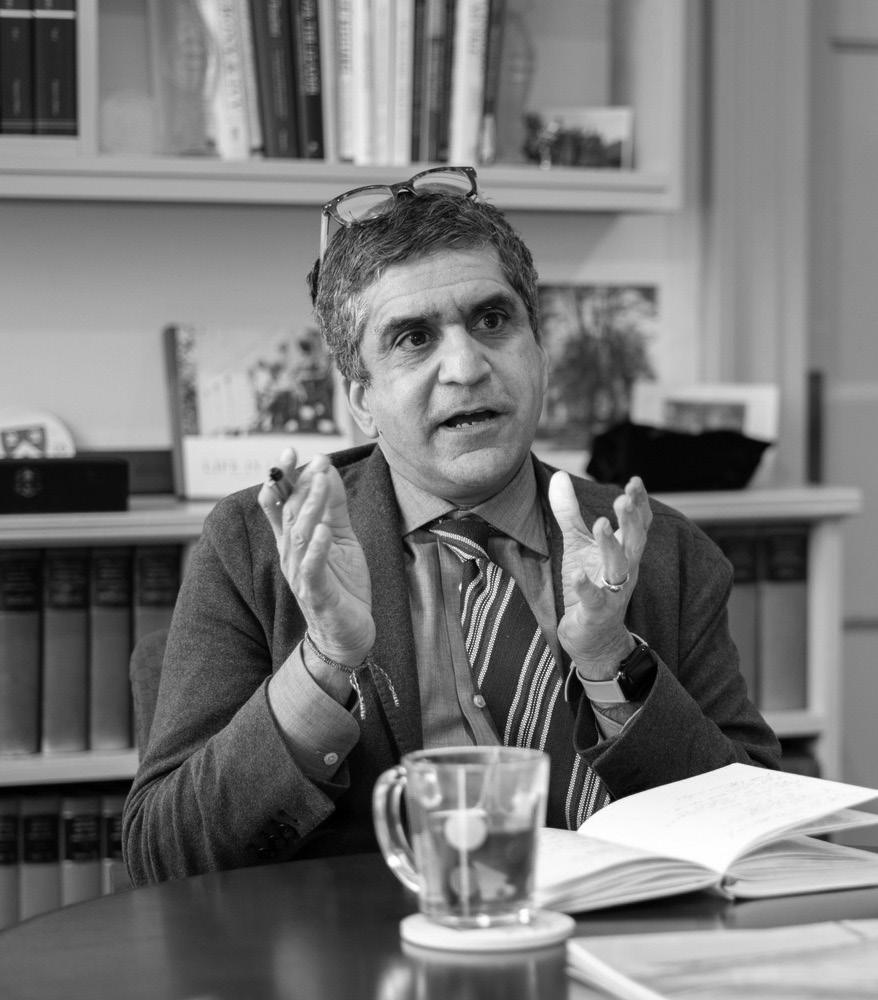
College would respond to protests on campus. “I’m not going to engage in hypotheticals,” Khurana said repeatedly when asked about a potential encampment or occupation on Harvard’s campus similar to those at other universities.
On Sunday, the University closed the Yard to non-Harvard affiliates and increased security as an apparent preventative measure against large-scale student demonstrations. The closure notice warned against bringing in unauthorized structures such as tents or tables or blocking access to building entrances, and threatened disciplinary action.
The Yard closure comes amid a wave of pro-Palestine student protests at colleges and universities across the country that have resulted in hundreds of arrests and student suspensions.
In a Monday interview with The Crimson, interim Harvard President Alan M. Garber ’76 did not entirely rule out a police response in the event of policy violations or safety threats during demonstrations, but said the administration would set a “very high bar” before doing so. Khurana declined to comment on the decision by Columbia President Nemat “Minouche” Shafik’s decision to arrest student protesters on charges of trespassing or on whether he would support a potential decision by Garber to follow suit in the case of a similar demonstration on campus.
However, Khurana said that “arresting students is not the goal of the College’s education.”
“I believe that our students are very capable of exercising their voice, including civil protest, in ways that are consistent with the rules, and I have full confidence that they know how to do that,” he said.
Khurana repeatedly referred to the University’s protest guidelines — which Garber clarified in a University-wide January email — which state that “freedom of movement,” the block of ingress or egress to campus buildings, classrooms, offices, and other spaces, and any interference with vehicular, bicycle, or pedestrian traffic is prohibited.
The letter called for Harvard to remove the probation and suspension of the PSC, lift the freeze on recognizing new student groups, and clarify policies for student organizations. It left open the question of subsequent legal action by the PSC.
Harvard spokesperson Jason A. Newton declined to comment.
The letter comes as pro-Palestine student activists have set up encampments at college campuses nationwide, leading to arrests at Columbia University, Yale University, and New York University.
Though the University shut down Harvard Yard to outside visitors on Sunday in an attempt to prevent similar demonstrations, protesters began an encampment in Harvard Yard on Wednesday.
The ACLUM detailed an ongoing dispute between the Dean of Students’ Office and the PSC since February, alleging that “Harvard failed to meet its ‘duty to provide basic fairness.’”
They wrote that disciplinary action is unfair when Harvard has “not provided students with adequate notice as to what behavior constitutes violation of the policy.”
The DSO has repeatedly warned the PSC that they have acted in violation of policies which require appropriate notice for events and which ban co-sponsorship with unrecognized student groups. The PSC claims that the DSO has unequally applied their policies based on public pressure, and that the DSO has not provided necessary policy clarification to the group.
The letter claims that Andrew Donohue, the assistant dean of
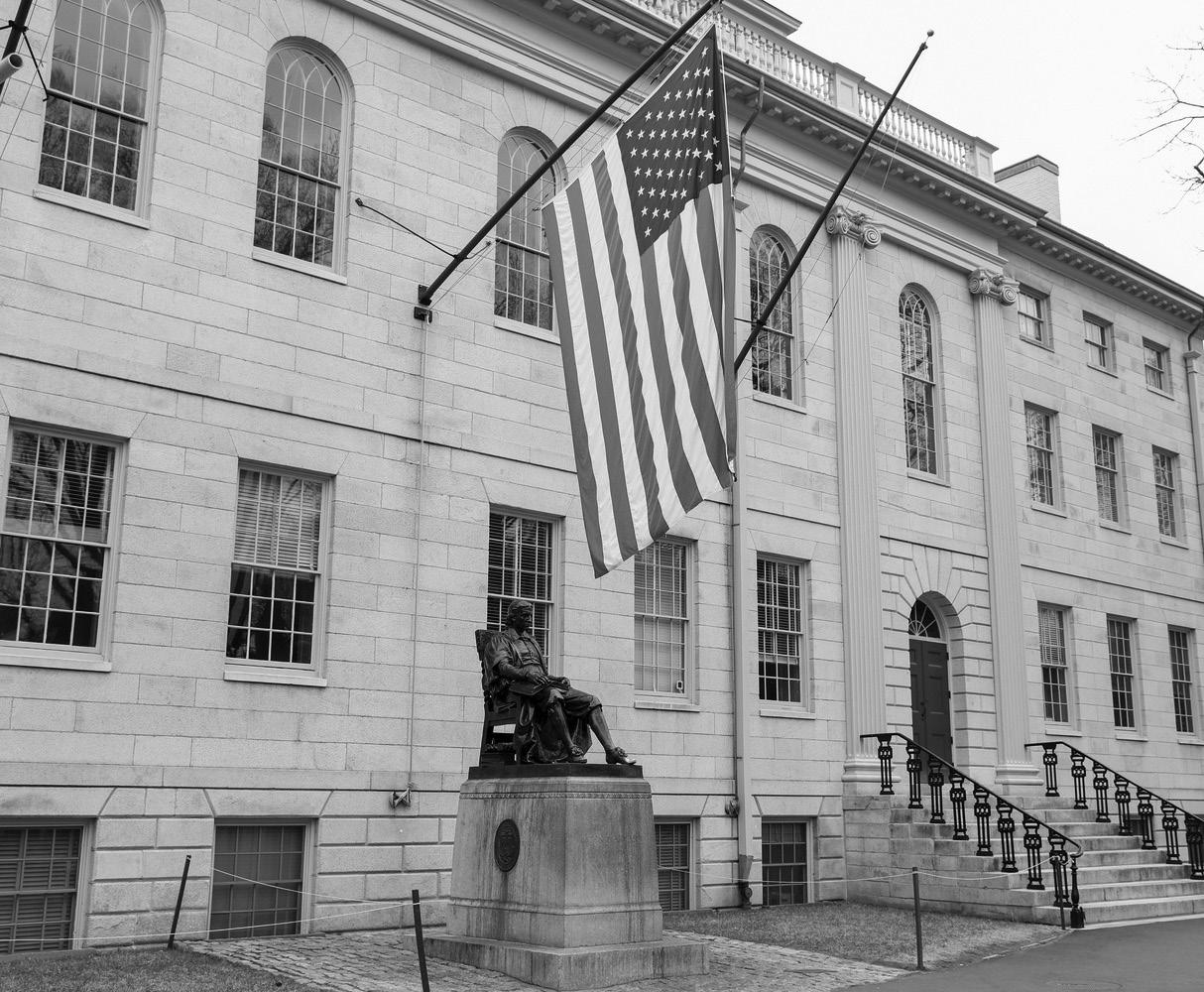
student engagement and leadership in the DSO, notified the PSC in February that they were in violation of the Student Organization Resource Guide for using their social media account to amplify protests held by unrecognized student groups, which have been at the center of pro-Palestine activism in recent months. Donohue again told the PSC they had violated policy on March 1 by promoting a vigil at which protestors later accused the University of surveilling students in attendance. When the PSC contested the co-sponsorship characterization, the DSO “conceded by email” that they had not co-sponsored the event.
According to the letter, on March 6, 2024, the DSO notified the PSC that they were “placed on probation, retroactive
tions on free speech and protects the rights to assembly and association, respectively. In their analysis, the ACLUM wrote that there is “substantial ambiguity as to whether the SORG’s events policies govern protests and demonstrations.” The ACLUM claimed that the SORG’s policy requiring four weeks of notice before an outdoor event “would unreasonably chill timely political speech” if applied to protests and demonstrations. “Indeed, we understand that the College practice has been not to require student organizations (including the PSC) to register protests four weeks in advance, at least in recent memory,” they added.
the PSC referred to the diein as “our” event, “even though the post image did not feature the PSC’s logo and the PSC was not listed as a co-sponsor. The letter described the DSO’s retroactive probation of the PSC as “fundamentally unfair and chilling to both speech and
In their March 6 email notifying the PSC of their probation, the DSO made a distinction between registration timelines for “protests and demonstrations” which require 2 days notice, and “events” which require 4 weeks. The letter critiqued the DSO’s inconsistent characterization of protests as “events” under this provision, but their regular characterization of protests as “events” when determining violations of co-sponsorship rules. On the co-sponsorship policy, the ACLUM claimed that “Harvard has repeatedly offered the PSC vague and often inconsistent interpretations” and “it has refused to commit a clear interpretation of the policy to writing, despite repeated requests from the PSC.” “This is simply unfair,” they added.
at least initially, as the spring saw substantially fewer campus protests compared to the fall. The last major pro-Palestine protest — a 24-hour occupation of University Hall in November by nine students — ended without arrest. During the interview on Monday, Garber also said the University remains staunchly opposed to calls for it to divest from Israel — one of the central demands of pro-Palestinian campus activists. Even as Garber said he “will not entertain” calls for divestment, he admitted to not knowing whether the University is still invested in Israel. As of 2019, the Harvard Management Company had $86,625 invested in companies linked to the Israeli military and roughly $200 million invested directly in companies the United Nations identified as being tied to Israeli settlements in Palestine. “It is completely fair for the students to make their statements and to make their recommendations,” Garber said. “I’ll only say that there are various ways to express your views and it does not necessarily mean that the University needs to change its investment policy or engage in activities like academic boycotts that run contrary to academic principles and University principles,” he added.
Interim Harvard President Alan M. Garber sits in a February interview in his office. Garber said he would not rule out police response to student protest, but that it would need a high bar. MARINA QU — CRIMSON PHOTOGRAPHER The American Civil Liberties Union of Massachusetts challenged Harvard’s decision to suspend the Palestine Solidarity Committee in a Wednesday letter to Harvard University interim General Counsel Eileen Finan. Writing on behalf of the PSC, the civil liberties organization claimed that Harvard’s probation and suspension of the PSC “fall short” of the University’s duty to “affirm, assure and protect the rights of its members to organize and join political associations.” “We believe that Harvard’s imposition of probation on the PSC constitutes a breach of contract, violates Harvard’s duty to provide basic fairness in disciplinary proceedings, and may otherwise be unlawful because of its negative impact on free speech and associational rights,” they wrote.
Garber Does Not Rule Out Police Response
from March 1, 2024.” The probation came after the DSO alerted the PSC of an ongoing investigation into a February 12 Instagram post with details about a die-in protest. The DSO had determined that the February 12 post had violated the co-sponsorship guidelines when
The ACLUM
University
such as the SORG
treated as contracts between students and universities” and that Harvard’s actions
rise
while First
to Harvard,
state
very well may.”
and 19
the Massachusetts Declaration of
which prohibits restric-
rights of association.”
letter argued that
policies
“are
“gives
to a breach of contract claim.” The letter further argues that,
Amendment protections do not apply
“relevant provisions of our
constitution
The letter cites Article 16
of
Rights,
the broad
really allow for protest on this campus, while also
the pursuit of free expression, while also allowing for the academic mission to continue unimpeded,” he said. College Dean Rakesh Khurana Defends Harvard PSC Suspension Massachusetts ACLU Demands Harvard Reinstate PSC in Letter NEWS 8 APRIL 26, 2024 THE HARVARD CRIMSON BY MICHELLE N. AMPONSAH AND JOYCE E. KIM CRIMSON STAFF WRITERS BY S. MAC HEALEY CRIMSON STAFF WRITER michelle.amponsah@thecrimson.com joyce.kim@thecrimson.com mac.healey@thecrimson.com CENTRAL ADMINISTRATION BY EMMA H. HAIDAR AND CAM E. KETTLES CRIMSON STAFF WRITERS emma.haidar@thecrimson.com cam.kettles@thecrimson.com CAMPUS PROTESTS. President Alan M. Garber ’76 did not rule out police as a response to campus protests in Monday interview. Khurana defended the suspension of the Palestine Solidarity Committee in a Tuesday interview. ADDISON Y. LIU — CRIMSON PHOTOGRAPHER University Hall houses Harvard College’s administrative offices. RYAN N. GAJARAWALA — CRIMSON PHOTOGRAPHER
“Effective protest follows
guidelines that
allowing for
Nearly 60 percent of faculty respondents to a survey of Harvard’s Faculty of Arts and Sciences said they “somewhat” or “strongly disagree” that there is systemic antisemitism at the University, even as House Republicans continue to investigate antisemitism on Harvard’s campus.
Hamas’ Oct. 7 attack on Israel and the Israeli military’s retaliatory war in Gaza revealed a bitterly divided campus and sparked a wave of pro-Palestine student activism.
ti-Muslim bias at Harvard, 40.6 percent said that they “somewhat” or “strongly disagree.”
The Crimson’s Faculty of Arts and Sciences survey was distributed to more than 1,400 members of the FAS, including tenure-track and non-tenuretrack faculty — with members’ names collected from its publicly accessible masthead. Members of the FAS were polled on demographic information, politics, and campus issues.
The email survey received 508 responses, of which 310 were fully completed and 198 were partially completed. It was open for two weeks, from April 3 to April 17.
which countries and governments they support in the ongoing conflict.
More than 72 percent of respondents said they supported Palestine, but not Hamas, while 67.0 percent of respondents expressed support for Israel, but not Israeli Prime Minister Benjamin Netanyahu’s administration. Meanwhile, 2.9 percent said they supported both Israel and Netanyahu’s administration, and 2.6 percent expressed support for both Palestine and Hamas.
The remaining respondents
— just under 8 percent — said they did not have a strong opinion.
“neither support nor oppose” divestment.
Harvard officials, including interim University President Alan M. Garber ’76, have repeatedly and forcefully opposed calls for the University to boycott Israeli institutions.
Administrative Responses
how the University should respond to speech with contested meanings — for instance, protest slogans that some consider political speech and others find hateful.
One such flashpoint is the phrase “from the river to the sea,” which pro-Palestine protesters often chant at demonstrations. In November, former Harvard President Claudine Gay condemned the phrase, which critics say is antisemitic and calls for the elimination of Israel.
However, pro-Palestine organizers have asserted that the phrase is not antisemitic, instead representing a call for liberation.
Many Harvard affiliates have also voiced fears over an increase of antisemitism and Islamophobia on campus. The University’s handling of antisemitism, in particular, prompted fierce backlash from wealthy donors and politicians in Washington, as well as the leadership of Harvard Chabad and Harvard Hillel.
But months after sustained criticism of the University’s response contributed to former Harvard President Claudine Gay’s resignation, respondents to The Crimson’s annual survey of Harvard’s Faculty of Arts and Sciences largely said they felt the University harbors neither systemic antisemitism nor systemic anti-Arab and anti-Muslim bias.
In the survey, 59.4 percent of respondents said they “somewhat” or “strongly disagree” that there is systemic antisemitism at Harvard — compared to 25.2 percent who “somewhat” or “strongly” agreed.
Though a larger percentage of respondents, 37.5 percent, said they “somewhat” or “strongly agree” that there is systemic anti-Arab and an -
This is the first installment in a series of pieces on the survey results. This installment focuses on faculty perspectives about campus antisemitism, campus Islamophobia, the war in Gaza, and the Harvard administration’s response to student protest. FAS spokesperson Holly J. Jensen did not comment for this article.
Faculty were asked how successfully they thought the administration has responded to antisemitism and Islamophobia on campus. In January, Garber announced the creation of two presidential task forces aimed at countering antisemitism and Islamophobia and anti-Arab bias on campus. “Reports of antisemitic and Islamophobic acts on our campus have grown, and the sense of belonging among these groups has been undermined,” Garber wrote at the time. “We need to understand why and how that is happening—and what more we might do to prevent it.”
About 17.2 percent of survey
respondents said that when protesters use phrases that some find offensive but others consider political speech, it is “never appropriate” for Harvard to condemn these phrases. Another 30.2 percent found it “rarely appropriate,” 43.5 percent thought
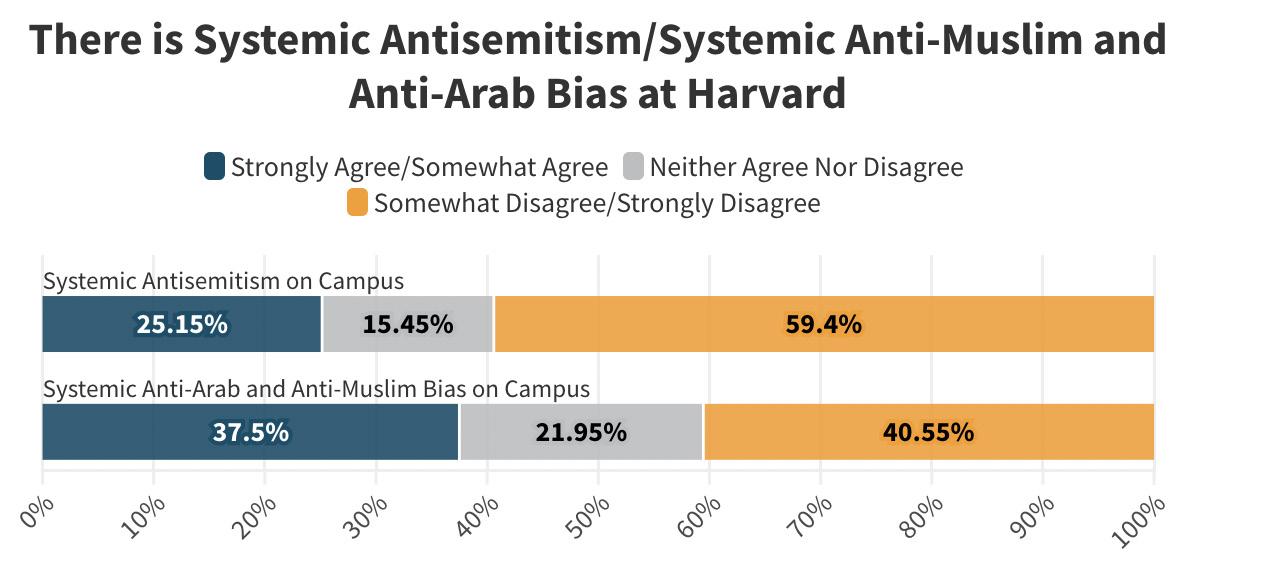

The War in Gaza
A significant majority of respondents to the survey said that they believe Israel has responded too harshly to Hamas’ Oct. 7 attack.
While 28.0 percent of respondents said they believe Israel’s response in Gaza constitutes genocide, another 47.9 percent of respondents they found Israel’s military response “excessive” but not genocidal.
Meanwhile, only about 14.2 percent of survey respondents called Israel’s response “appropriate” and 1.4 percent said they believe it was “insufficient.”
The survey results also demonstrated that while faculty respondents largely express support for both Israel and Palestine, they have much less favorable opinions of the governments in Israel and Gaza.
Respondents were allowed to select multiple answers in response to a question about
In addition, respondents largely supported calls for both a ceasefire in the ongoing Israel-Hamas war and for a twostate solution to broader conflict in the region. About 80.6 percent of respondents supported calls for a ceasefire between Israel and Hamas, compared to only 6.7 percent in opposition. Meanwhile, 82.3 percent of respondents said they supported a twostate solution to the conflict in the region, while only 4.3 percent were opposed.
Faculty members were also surveyed on whether or not they supported calls for divestment from Israeli companies that operate in the West Bank. Pro-Palestine student activists have urged Harvard to divest from companies tied to illegal Israeli settlements for years — demands that have grown in prominence throughout the wave of protests following Oct. 7.
Student organizers are currently encamped in Harvard Yard to demand Harvard divest from companies with ties to Israel’s settlements in the West Bank and the conflict in Gaza.
A 40.7 percent plurality of respondents said they believe Harvard should divest from Israeli companies that do business in the West Bank — in contrast to 31.3 percent opposing divestment. About 28.1 percent of respondents said they would
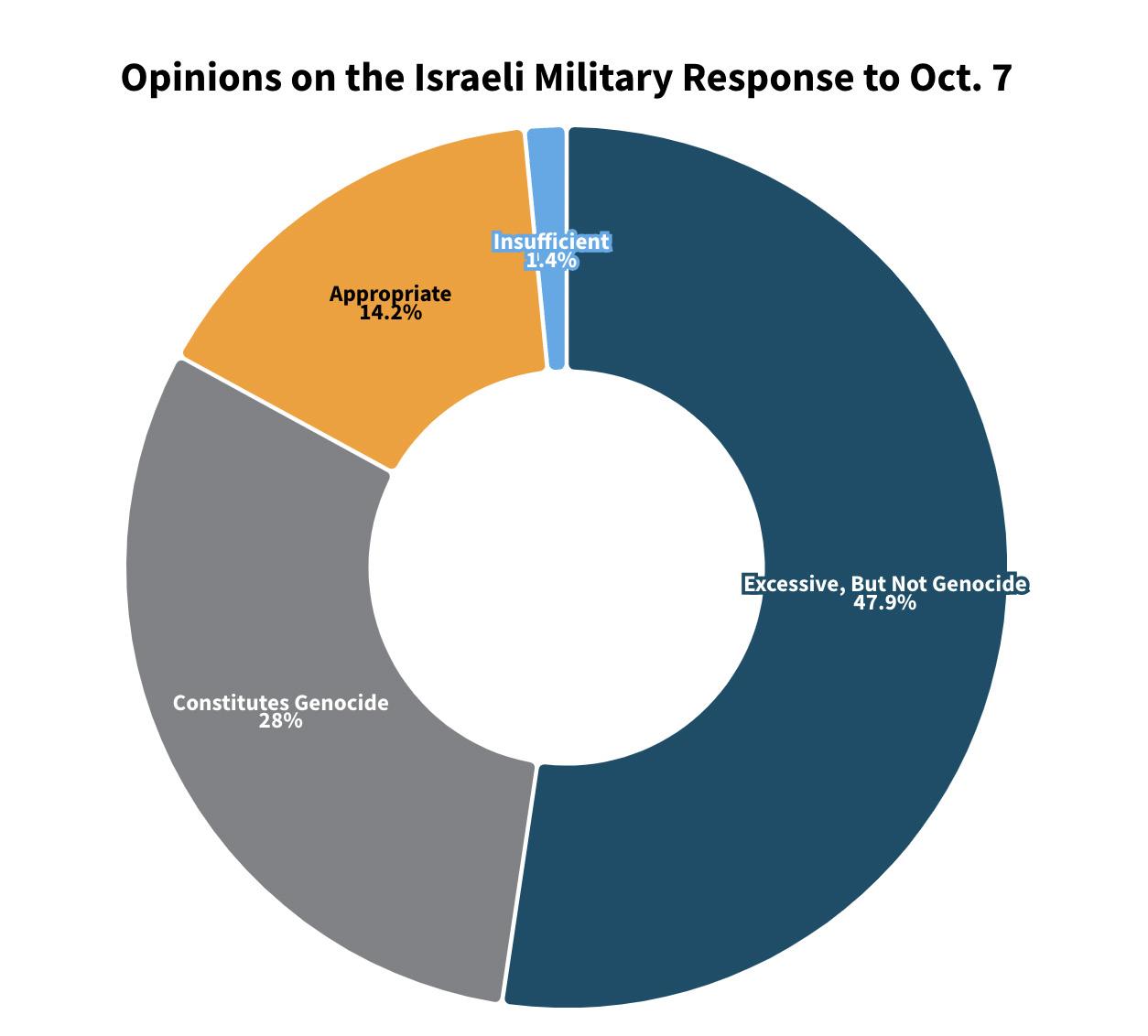
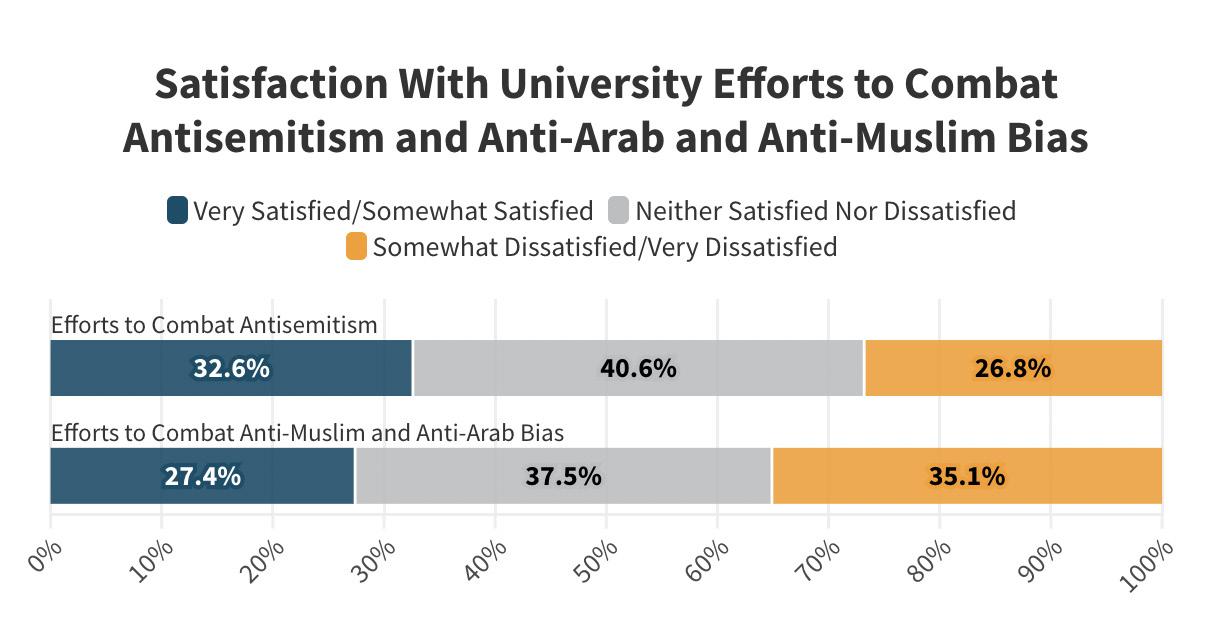
Respondents were split on the efficacy of these efforts. Pluralities of respondents said they were neither satisfied nor dissatisfied with the University’s efforts to combat antisemitism — 40.6 percent — and anti-Arab and anti-Muslim bias — 37.5 percent.
Approximately 32.6 percent of respondents said they were “very” or “somewhat satisfied” with the University’s efforts to combat antisemitism on campus, while 26.8 percent were “very” or “somewhat dissatisfied.”
In addition, 27.4 percent of respondents said they were “very” or “somewhat satisfied” with University efforts to combat anti-Muslim and anti-Arab bias, while 35.1 percent were “very” or “somewhat dissatisfied.”
Although the task forces have held listening sessions with undergraduates and gave updates on their work to the Harvard Gazette, a University-run publication, they have yet to release reports or recommendations.
Another issue that emerged over the last few months was
it is “sometimes appropriate,” and 9.1 percent said it is “usually” or “always appropriate.”
Methodology
The 2024 edition of The Crimson’s
faculty survey was conducted via
an on
line survey platform. The survey was open from April 3 to April 17.
link to the anonymous survey was sent via email to 1,414 faculty in the FAS and the School of Engineering and Applied Sciences. The list comprised all faculty named on the FAS masthead for the current academic year, which includes FAS department and standing committee affiliates whose appointments are in other Harvard schools. In total, 508 faculty responded to the survey, with 310 submitting fully completed responses and 198 submitting partial responses. To check for response bias, The Crimson compared respondents’ self-reported demographic data with publicly available data on FAS faculty demographics for the 2023-24 academic year. (Unlike The Crimson’s survey, this data only includes faculty with FAS appointments.) The breakdown of survey responses was roughly in line with the demographic profile of the FAS. More than 56 percent of respondents said they hold a tenure or tenure-track position, according to the survey. According to the FAS Dean’s 2023 Annual Report, 57.12 percent of FAS faculty are tenured or on the tenure track. Among respondents, 40.43 percent belong to the Arts and Humanities division, 25.96 percent to the Sciences division, 27.66 percent to the Social Sciences division, and 5.96 percent to the School of Engineering and Applied Sciences. According to publicly available data for the 2023-24 academic year from Harvard’s Faculty Development and Diversity Office, 26.71 percent of tenured and tenure-track FAS faculty are in Arts and Humanities, 27.81 percent are in Sciences, 27.81 percent are in Social Sciences, and 12.88 percent are in SEAS. The Crimson could not find public FAS data on the distribution of non-ladder faculty across the divisions. Of respondents who identified their gender on the survey, 45.59 percent of respondents said they are female; among those who reported their race, 29.44 percent of respondents did not identify themselves as white (6.59 percent of respondents declined to identify their gender, and 14.3 percent declined to identify their race). That compares to 39 percent of FAS faculty who are women and 27.6 percent who are not white, per the FAS Dean’s Report. Survey responses were not adjusted for selection bias.
Systemic Antisemitism The X account belonging to the Harvard Islamic Studies Program was reinstated on April 18 following a nearly two-month suspension after the University’s Office of the General Counsel reached out to the legal office at X Corporation. “I had reached out to the University’s general counsel’s office,” said Harry Bastermajian, the program’s
director.
the
from the Office
out to the
of Legal at X Corp
the
— the Chief Legal Officer for X Corp — and said, problem has been resolved,” Bastermajian said. “No explanation,” he added. The University had asked X for an update on why the program’s account had been suspended, Bastermajian said, only to be informed quickly that the account had been restored. “Within just a few moments I heard back from the general counsel’s office saying it’s been fixed,” he said. Bastermajian said he was glad to have access to the account again, and noticed that nothing on the account had changed. “We just want to be able to have access back to the site, and it’s up and running again,” he said. “Nothing was taken down. Nothing was blocked, or anything like that. All of our followers were there.” Bastermajian noted that The Crimson’s report was “helpful in the sense that it did get some attention on the issue”. “We definitely received a lot of notes from colleagues, faculty, staff, students, offering their support and saying ‘Sorry that happened to you, we hope everything gets corrected,’” he said. “Maybe it was just a mistake,” he added. Harvard Islamic Program’s X Account Restored After 2 Months NEWS 9 APRIL 26, 2024 THE HARVARD CRIMSON BY ELIZABETH R. HUANG CRIMSON STAFF WRITER elizabeth.huang@thecrimson.com FACULTY SURVEY BY TILLY R. ROBINSON AND NEIL H. SHAH CRIMSON STAFF WRITERS tilly.robinson@thecrimson.com neil.shah@thecrimson.com CHANGED LANDSCAPE. The first installment of The Crimson’s FAS faculty survey focused on campus antisemitism, Islamophobia post-Oct. 7. Source: The Crimson’s 2024 Faculty Survey. RAHEM D. HAMID — CRIMSON DESIGNER
annual
Qualtrics,
-
A
Survey: Profs. Deny
executive
“One of
University’s attorneys
reached
Director
and sent them a message explaining
situation.” “Within minutes, they got a response from the Director of Legal

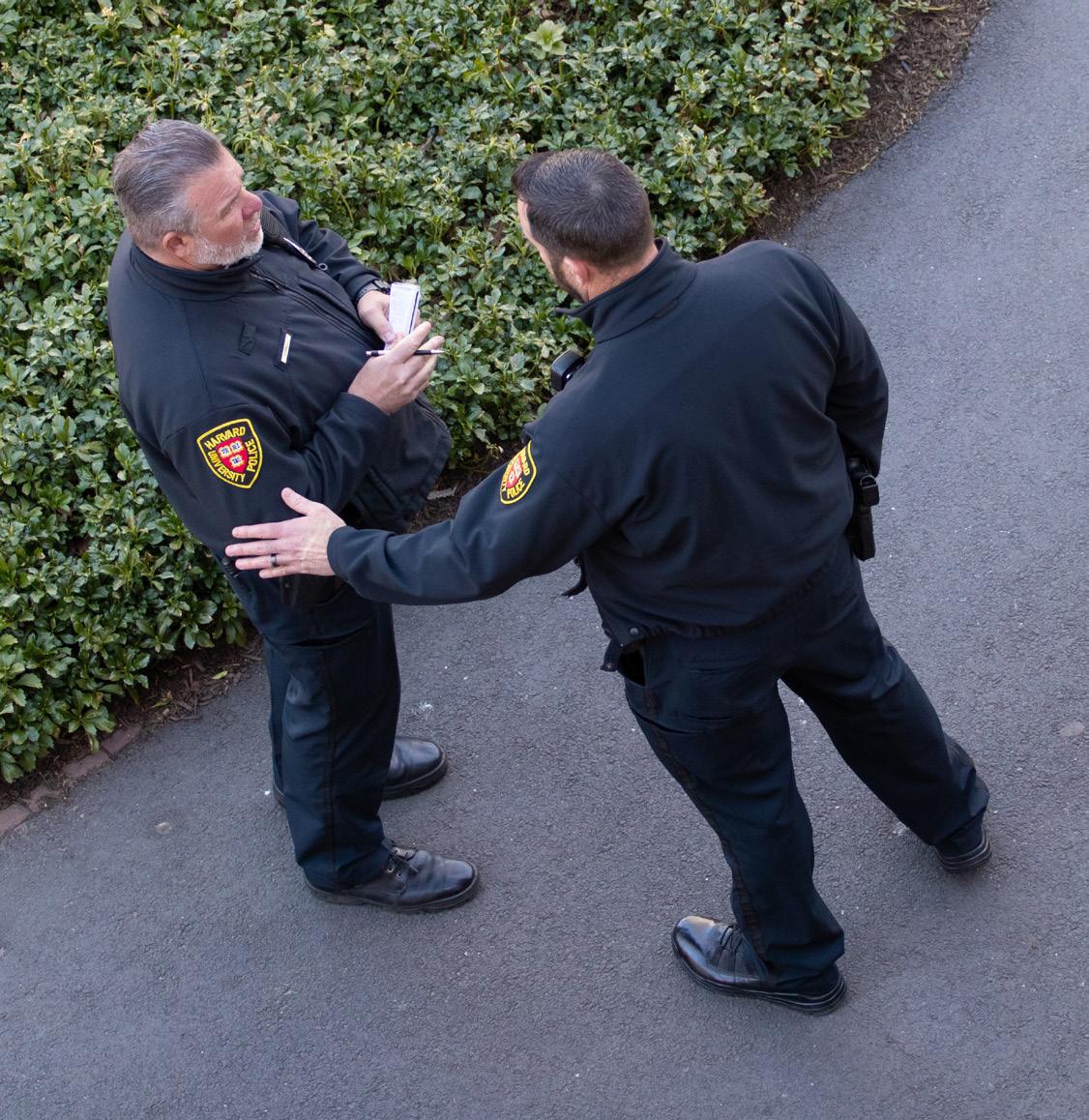
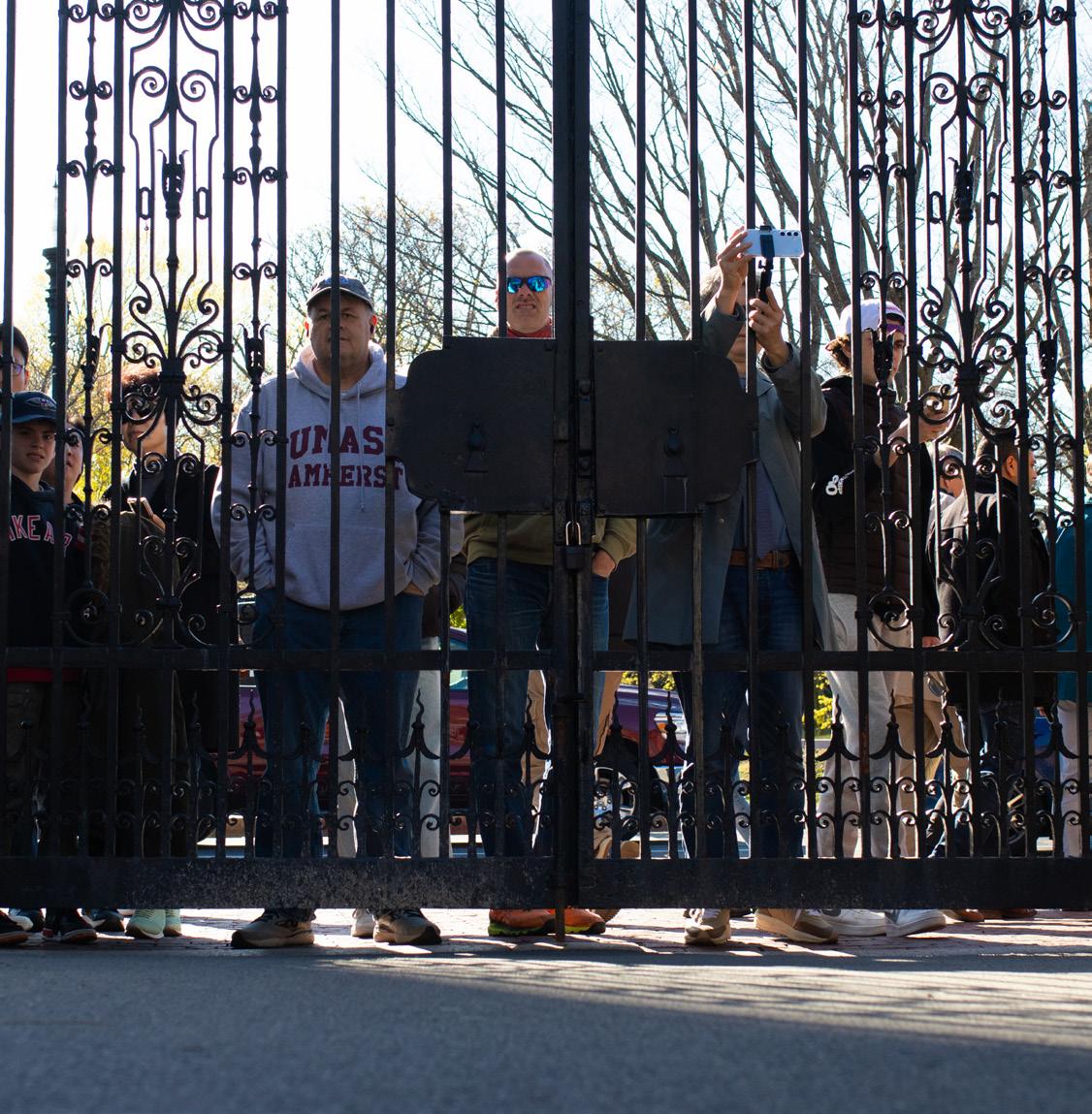
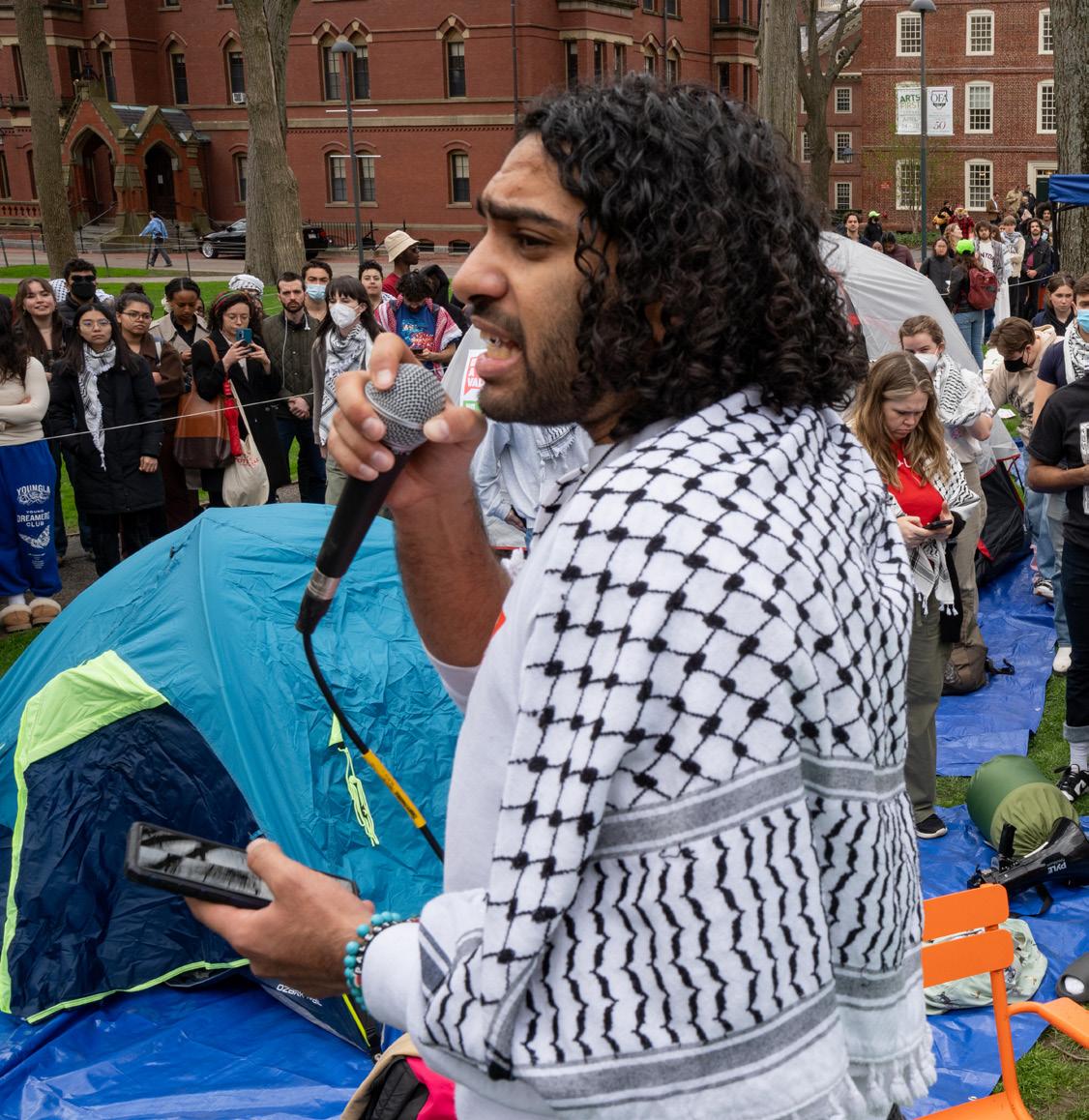
36 HOURS of the Harvard Yard Encampment Inside the First MULTIMEDIA 10 ELLEN P. CASSIDY — CRIMSON PHOTOGRAPHER FRANK S. ZHOU — CRIMSON PHOTOGRAPHER FRANK S. ZHOU — CRIMSON PHOTOGRAPHER JULIAN J. GIORDANO — CRIMSON PHOTOGRAPHER


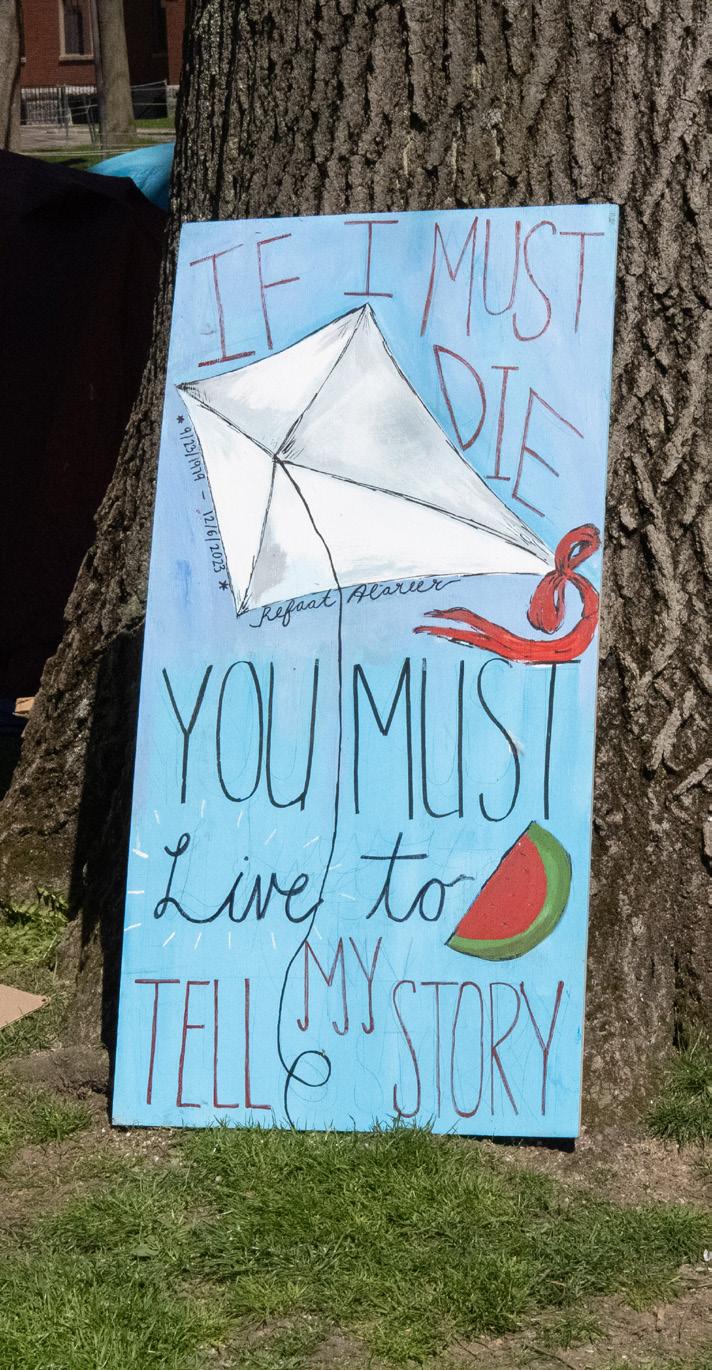

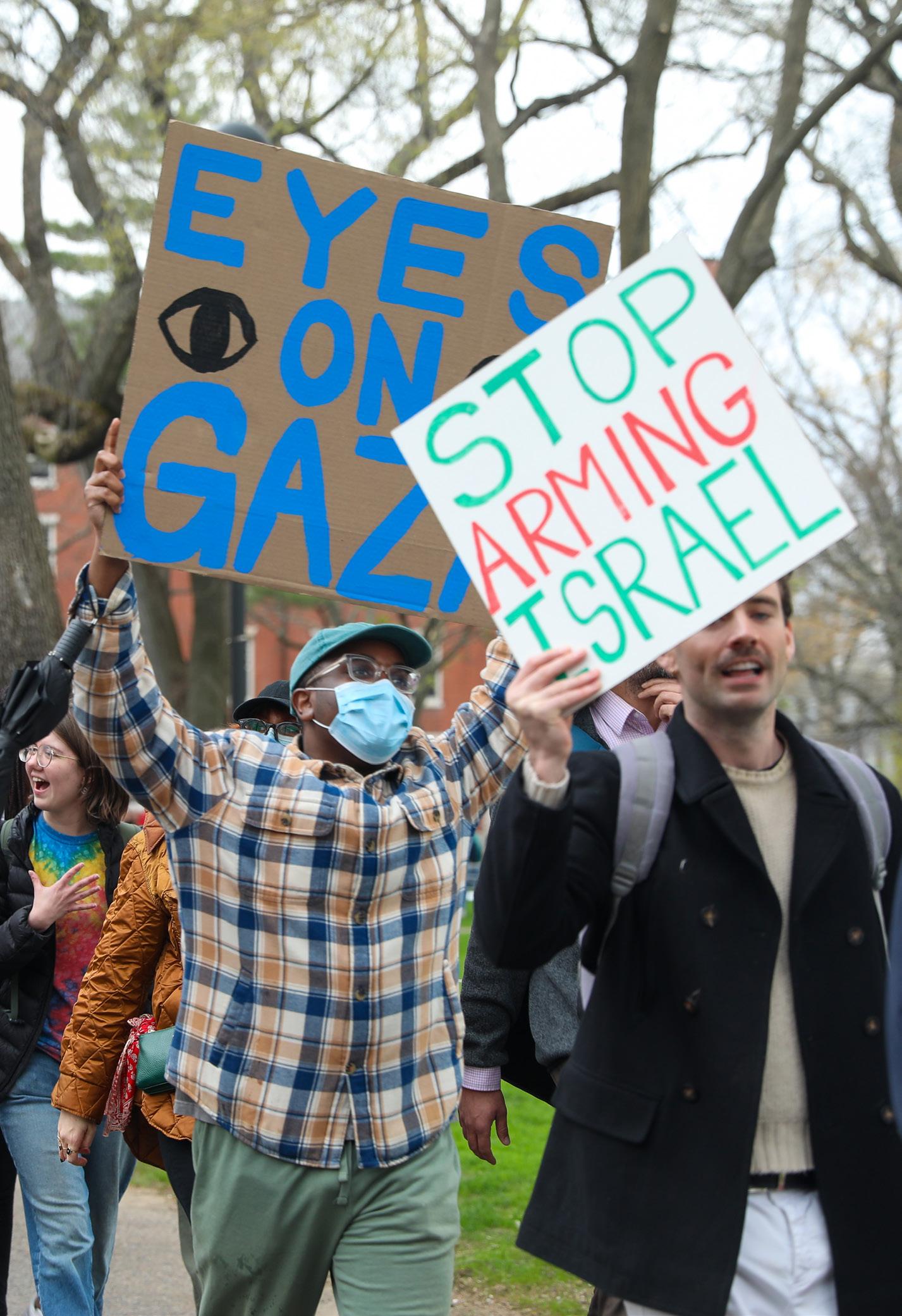
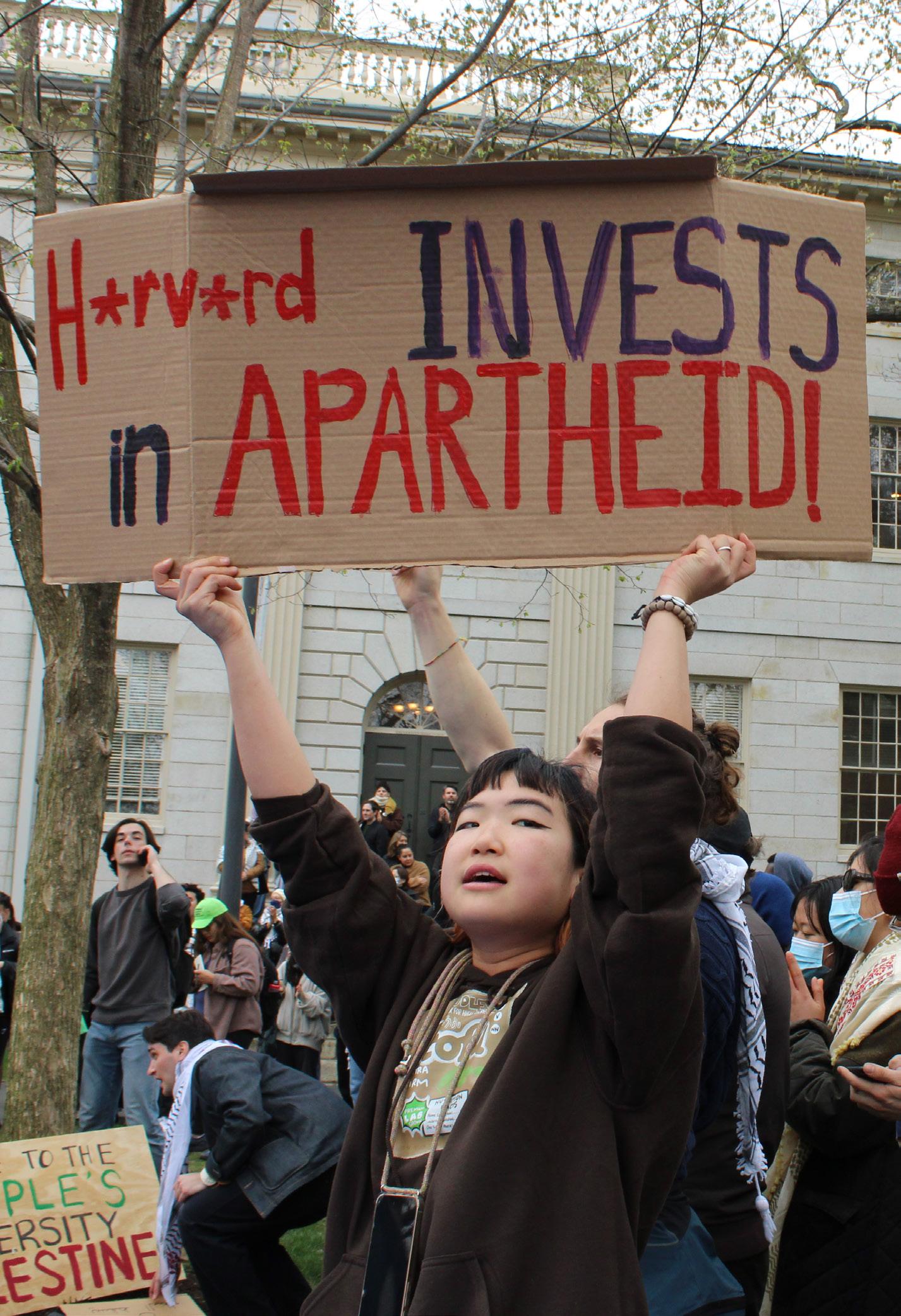
APRIL 26, 2024 THE HARVARD CRIMSON 11 SAMI E. TURNER — CRIMSON PHOTOGRAPHER SAMI E. TURNER — CRIMSON PHOTOGRAPHER IKE J. PARK — CRIMSON PHOTOGRAPHER FRANK S. ZHOU — CRIMSON PHOTOGRAPHER MARINA QU — CRIMSON PHOTOGRAPHER ELLEN P. CASSIDY — CRIMSON PHOTOGRAPHER

Kate Greene on Writing as Discovery
VIVIENNE N. GERMAIN CRIMSON STAFF WRITER
Speaking via Zoom, Kate Greene sat in front of a healthy houseplant, a print of a flower, and a volcanic map of Mauna Loa. Her apartment provided much insight into her mind: She absorbs and engages with the world around her. Greene is a poet, essayist, and author of the memoir “Once
Upon a Time I Lived on Mars” — but it’s not surprising that she was initially a physicist. Greene blurs the inward with the outward, the artistic with the empirical, and her poetry with her prose. She observes, explores, and experiments.
“I love discovery,” Greene said in a conversation with The Harvard Crimson. Her simple, naturalistic setting — adorned by the flower, volcano, and houseplant — echoed her simple yet complex approach to discovery in her work.
Because Greene began her writing career as a journalist, her writing was initially motivated by deadlines and urgency. Now a poet and creative nonfiction writer, she approaches her work by “unearthing feelings” in a “very bodily” way.
“Writing for me, I do think, is pretty somatic,” Greene said. “I honor bodily feelings in my process.” Her writing grows organically from within her, then extends into the world around her. Her poetry and prose stem from, chronicle, and respond to
the moments in which they are written. She describes her creative work as a “record” of its time — notably echoing a primary objective of journalistic and scientific writing. Before Greene was a journalist, she was a laser physicist. Before that, she was a science kid. “I wanted to be an astrophysicist at age nine because I learned about black holes, and thought, ‘Yeah, that is where it’s at,’” Greene said, drawing out the “yeah” like a wide-eyed nineyear-old.
Religion was a central concept in her childhood home. As a result, she was drawn to “mystery and the unknown” — which, for her, meant growing curious about the natural world and drawing connections between theology and science. Greene’s curiosity and her ability to draw connections to science permeate her writing, which is evident in her poetry published in SUITE earlier this month. In “REMEMBER,” she writes, “I’ll read you equations from this / electrodynamics text / we’ll make them our own / to remember forever.” Another poem, “EASY WOOL SWEATER,” uses astronomy figuratively, describing “a sweet-faced cat / floating toward venus.” The poem titled “A FLYING SAUCER CLOUD RELIQUARIES THE MOON” does not explicitly mention outer space, yet the outer-space title provides valuable thematic framing for the poem’s content.
None of the six poems are about physics — they’re about people and relationships, intimacy and regret, aspiring and
longing — but Greene’s physicist mind enriches all of them in concrete, abstract, or perplexing ways. “It’s my intellectual landscape,” she said, discussing the reason she brings science into her writing. “I studied it for so long. It’s like the stuff that you populate your brain with: It’s always there, ready to come out.”
Referencing Jack Spicer’s metaphor about Martians entering a person’s brain and rearranging the furniture, Greene said that she doesn’t control the position of science in her mind.
“You’re not quite in control of how the stuff that you’ve dumped into your psyche over the course of your life comes out when you open up to the space of writing a poem,” she said.
Greene took time to contemplate her profound yet humble thoughts as she formed them, while laughing at the occasional funny remark and at times, laughing at herself.
She chuckled upon mentioning the “little nonsense asides” in the margins of her notes as a journalist. She said that she only realized later in life that her “asides” had “poetic potential.” After years of writing explanatory stories, she found poetry liberating. Unlike physics and journalism, poetry does not require explanation.
“It’s a site of great relief to not have to explain and to live in sort of a confusion, or a strange metaphorical land where the sense-making happens — or not,” Greene said.
“A poem never has to say it’s sorry for not explaining itself,” she continued. “I find that is a very important place for me to
spend some time, especially after all those years of explaining things — and [explaining] myself.”
Greene’s poetic freedom influences her prose. Her memoir, “Once Upon a Time I Lived on Mars,” recounts her time as the crew writer and second-incommand on NASA’s first HISEAS project, a four-month simulated Mars mission. She wrote the memoir in “an extremely poetic space.” As a result, she finds that it shifted away from her explanatory writing. “It loosened up the rigidity of the structure of prose,” Greene said.
It’s a site of great relief to not have to explain and to live in sort of a confusion, or a strange metaphorical land where the sense-making happens –– or not.
“[Poems] come from the site of extreme attention to the internal for me, and where my attention moves,” she continued. “Structurally, the ‘Mars’ book was written from that space, which is a similar space for me as poems.”
The memoir is organized by fundamental aspects of life — including solitude, diversity, boredom, and food — instead of chronological order. Considering its innovative structure, “Mars” illustrates Greene’s poeticism. “Mars” also captures Greene’s integrative approach to writing. In one chapter, she
explains Robonaut 2 and the issue of legs in microgravity; then, she writes that “it can feel almost repulsive to have a body, the truth of it, so greedy.” In the introduction, a niche anecdote about “returning to Earth” produces a universally relevant conclusion: “Sometimes leaving is the only way to know it was ever home in the first place.” Through scientific details and unique memories, Greene artfully unveils mysteries of human experience. Fittingly, her method of writing “Mars” was rooted in discovery. “I like serendipitous discovery and connection,” Greene said, explaining her process of writing the memoir. “Not that I don’t do research, but I honor the impulse first, and then I will look around to see what’s there, and that might spur other things — but by and large, I love discovery.” “Mars” is poetic, but it’s nonfiction prose. It’s a personal narrative, but it’s also cultural criticism. It’s about science, but it’s really about humanness. Greene’s work transcends genre. Again referencing the natural world, she said that she is interested in how “seeds,” or genres, “inter-pollinate” one another.
She reflected on the stretch of history when “a writer was a writer,” a time when most writers were simultaneously novelists, journalists, poets, and essayists, and the genre of writers’ work was less prescriptive.
“If you had a way with words, and you also had access and could see things, whatever that means, then you just wrote it,” she said. Greene clearly values reaching across genres. On her bookshelf, she keeps poetry by Brian Blanchfield, Audre Lorde, and Anne Carson, all of whom are also essayists. Her shelf also holds nonfiction by Wayne Koestenbaum and Jack Spicer, who are more known for their poetry. Through poetic prose that combines physical science with interior experience, Greene’s interdisciplinary writing continues in her current project: an essay collection about the connection between artificial intelligence and queerness. “It definitely is an interrogation of the self and the other, and that sort of dichotomy. It’s like a personal essay, but it’s looking inside, and it’s looking out broader, kind of like the ‘Mars’ book,” Greene said. “But with more sex.” Combining technology, queerness, introspection, extrospection, and sex, Greene is not afraid of fusing disparate ideas. She consistently finds oppositions to harmonize and curiosities to scrutinize. She pushes the limits of possibility. Through the written word, Kate Greene embraces discovery.
vivienne.germain@thecrimson.com
Aside from Boston’s wealth of museums, the city additionally hosts an abundance of public art. Beyond the iconic historical monuments commemorating Boston’s rich revolutionary
circles. Her head, held defiantly above the waves, suggests resistance while also implicating viewers in our complicity. In her artist statement, Jones states that the mural tackles the disproportionate effects of climate change on Black and brown youth, which comes across powerfully in the target-like circles that overlap with the girl’s head.
2. “Transmission” by Augustine Kofie
Compared to the grand scale of most of the other murals on this list, “Transmission” may initial-
ly appear much less ambitious, but it shows great prowess at interpreting its own setting. Situated at 450 Huntington Avenue, “Transmission” is a jagged black and white abstract mural. The angular, fragment-like pieces mimic the straight lines present in the building’s stonework. The GrecoRomanesque columns nearby contrast with the harsh modernity of these perfect circles and crisp edges. The piece’s small size also makes it a pleasant surprise for those who notice it, imbuing Boston with a little bit of aesthetic whimsy.
3. “Tale of an Ancient Vase” by Bryan Beyung
Situated in Chinatown, Bryan Beyung’s “Tale of an Ancient
Vase” cuts an impressive figure. At its center stands a realistic blue and white porcelain vase. Surrounding the vase are elements and objects that reference the legend of Emperor Shun, painted with flat reds, greens, and grays. This juxtaposition of the vase’s realism with the complete lack of dimensionality in the background gives the vase a three-dimensional effect. The contrasting colors make the vase stand out even further. Beyung captivates viewers with his painting prowess through the sharp patterns in the background as well as the extremely detailed decoration on the vase. Overall, the mural showcases a wealth of symbolic meaning, due both to its location and
to the technical skill required to make it.
4. “A Sea Bird” by Maria Molteni
When conceptualizing a mural, most that come to mind are vertical. Maria Molteni specializes in the opposite, decorating basketball courts with delightfully bright, simplified forms. “A Sea Bird,” a public basketball court in Seaport, illustrates semi-abstract nautical objects — multicolored ropes, flags, clouds, and more. Painted in flat planes, the image makes the entire court come to life with washes of yellows, blues, reds, and oranges. “A Sea Bird” serves as a charming reminder of the buoyancy all around Boston.
5. “Souledad” by Victor “Marka27” Quiñonez
It’s difficult to describe “Souledad.” The sheer impact of its scale already inspires awe. This towering size is made even more impactful by the beautiful multicultural symbols painted on the building: a Puerto Rican flag, a dragon, and Haitian colors visible in the woman’s hair wrap. Beyond their cultural significance, the symbols are also meant to represent specific neighborhoods in Boston, emphasizing the rich tapestry of identities present in the city. With the stark brick left bare behind the figures, this beautiful image of woman and child emerges from the ether, reminding us all of our bonds with each other.
ARTIST PROFILE
BY
Brushstrokes
Bright
The Best Murals in Boston:
in
Places
history, Boston’s murals serve as a delightful contemporary showcase of skill and imbue the city with creative ambiance.
Nneka Jones Located
the Donald McKay
with a striking gaze.
simplified coloring
a young Black girl
flat
1. “Intersectional Environmentalism: Generational Uproot” by
on the south side of
School, Nneka Jones’s “Intersectional Environmentalism: Generational Uproot” looks
The realistic yet
of
contrasts with the
planes of color present in abstracted waves and concentric
BY RIA S. CUELLAR-KOH CRIMSON STAFF WRITER COURTESY OF DIA FELIX
Kate Greene
“ APRIL 26, 2024 THE HARVARD CRIMSON
ARTS 12

Maria ‘Bimba’ I. Carpenter ’26 on Comedic Film
MI. Carpenter ’26 is a storyteller. And, to tell a story, one has to obsess over it, understand it, and live it. It’s a process that requires everything one can give it. And Carpenter — from incorporating comedy into her everyday life to developing characters — devotes herself to her films. A student in the Department of Art, Film, and Visual Studies at Harvard College — colloquially known as AFVS, Carpenter has already made around 25 projects as an aspiring filmmaker. A subscriber to absurdist comedy and parodic content, Carpenter rejects an escapist approach to filmmaking and believes in elevating the serious aspects of life with comedy. By adding a comedic twist that turns the mundane into something funny, Carpenter makes it easier for viewers to see life for what it truly is: absurd. This comedic approach, simply put, makes life more digestible for viewers — something that is very important to Carpenter, who strives for accessibility in
her work and wants to create stories that maintain an essence of relatability for the audience. If a work is too austere, niche, or removed from the general audience’s understanding, a film will not achieve this relationship with the viewers who want to find humanity in the story. Niche topics must be constructed from the ground up within the confines of the film to allow all viewers to find this connection. This approach to filmmaking is not common within Harvard’s undergraduate film program. Despite having some strong qualities, Carpenter said in an interview with The Harvard Crimson that Harvard’s AFVS Department highly emphasizes nonfiction and film theory — both of which contribute to an air of exclusivity and a general opposition to creative work.
“I think it can be quite frustrating for someone on the outside. I think that art can be inclusive. It can be appealing to everyone. I don’t think it needs to be so complicated,” Carpenter said. She added that, while film can maintain a certain complexity, the complexity cannot yield to inaccessibility. Carpenter started making films at a young age by recreating
talk shows with comedic guests and characters. This foundation of familiarity with the talk show format fostered Carpenter’s growing affinity for parody, allowing her to, again, elevate the usual. Parodic comedy can be more clarifying than deceptive, as it accentuates the subtle ridiculousness of everyday life — like the long and strenuous process of renewing one’s passport, Carpenter explained. Carpenter’s tight-knit family is one of “architects and sculpture artists,” so pursuing film in college was not an out-of-nowhere decision for her. Carpenter’s father is a woodworker, and, therefore, a resonant artistic energy manifested itself in many different aspects of her life. For example, Carpenter and her siblings were made to learn the piano until they were old enough to choose an instrument that piqued their personal interest. Carpenter chose the guitar, drums, saxophone, base, and ukulele. This attachment to music is clear in Carpenter’s cinematographic work. In addition to classic rock, Carpenter enjoys “really dramatic classical music because it can make a stupid scene so much more dramatic.” Apart from classical music
and classic rock, Carpenter is inspired by the stylistic aspects of jazz, although she doesn’t tend to directly incorporate it in her films.
“I think it’s, in many ways, very similar to comedy,” Carpenter said.
She explained that Jazz has an element of innovation, improvisation, and liveliness that allows the art to change depending on who’s playing, where they’re playing, and how they’re feeling. Jazz, like comedy should be, is dynamic — it’s not at all set in stone.
Carpenter’s favorite element of filmmaking is the directing and shooting process. There is an energy of creating art on the spot — with interactions with the setting, actors, and moment — that can yield something original and beautiful.
That’s not to say that Carpenter restricts herself to just directing, as she follows an allencompassing approach to her craft, including providing voice work, screenwriting, shooting, and acting — Carpenter often acts in her own films.
Inspired by Monty Python, Greta Gerwig, and Wes Anderson, among others, Carpenter seeks a sense of uniqueness in her own comedic work, though
she is wary of its consequences. Projects have to drive an artist’s cinematography forward, and one can’t fall back on previous successes. She noted that one of her role models, Wes Anderson, once had this imposing forward momentum but lost it.
“Recently I think he’s become a caricature of himself,” Carpenter said.
Filmmaking is a process, and learning how to make good films is an arduous one. But Carpenter is putting in the work. A fan of vintage films, Carpenter looks for simplicity in the technical aspects of her work.
“Cinematography was simpler back then because they were working with heavier cameras that weren’t as easy to move. And, I think that, sometimes, simplicity is the best way to approach a subject,” Carpenter said.
Carpenter’s cinematography is one of vibrancy and color, and one of her favorite films is “Little Miss Sunshine” — a film about a tumultuous road trip. Currently, Carpenter is working on a screenplay in which she reconsiders the trope of the road trip, telling a story of family, relationships, and coming of age.
Screenwriting is an incredibly important process for Carpenter,
and understanding the characters and the plot extends far beyond the filmed portion of a story. Characters have to have fully developed lives that allow them to stand on their own. Carpenter practices this all-encompassing approach to character development in her own screenwriting.
“Where did they come from? What was their childhood like? Their family?” she said.
Yet, despite having a broad and multifaceted approach to filmmaking, Carpenter keeps returning to comedy. She emphasized the importance of using comedy in film, a genre that can elevate and lighten one’s life.
“I’d like to direct and write films that really emphasize comedy and bring joy to people. That’s what I do in my daily life. It’s what I try to do in every class, regardless of what the topic is. Incorporating comedy is just kind of an intrinsic part of who I am,” Carpenter said.
At the end of the day, Carpenter is a student searching for her path as a storyteller. Though she’s still learning, practicing, and working on her craft, one thing is clear: She has that forward momentum.
And there’s no doubt that she will succeed.
thomas.ferro@thecrimson.com
Dr. Merritt A. Moore ’10-’11 excels at many things — particularly at saying “yes.” Since graduating from Harvard, Moore has said “yes” to a professional ballet career with the Norwegian National Ballet, English National Ballet, Boston Ballet, Zurich Ballet, and José Mateo Ballet; to a quantum physics career with a Ph.D. in atomic and laser physics from Oxford, eleven published papers, and an Adjunct Professor of Practice post at NYU Abu Dhabi; and even to stints on America’s Got Talent and the BBC series“Astronauts: Do You Have What it Takes?” Moore also said “yes” to an interview with The Harvard Crimson, elaborating on how she balances multiple successful careers and works to meaningfully unite her seemingly disparate fields. The former Eliot House resident is now well-known for her interdisciplinary work bridging science with the arts. During the pandemic, Moore conceived of
a life-changing project blending her love for dance and science: programming robots and dancing with them. “I couldn’t dance with humans. I wasn’t really sure where, career-wise, I was going. But I had the idea of dancing with a robot,” Moore said. She then persuaded Universal Robots to lend her a robot for two weeks, and she uploaded videos of herself dancing with the robot. “Those videos went viral. And then I got invited to perform live. And I would just say ‘yes,’ and so I did,” she said. The pandemic project bloomed into an international opportunity for cross-disciplinary conversations, from a robotic dance installation Moore choreographed and danced at the Victoria and Albert Museum to collaborations with Louis Vuitton. She has performed robot dances with the Boston Ballet as well as at the World Economic Forum, Forbes Women’s Summit, the opening of the Kempner Institute for the Study of Natural and Artificial Intelligence with Mark Zuckerberg and Priscilla Chan, and the Global AI Summit at the invitation of
the Crown Prince of Saudi Arabia. Her innovation has also earned her features in TIME, Vogue, BBC, and Financial Times, and on the Forbes 30 Under 30 list.
Though the project is overtly artistic, Moore noted that its practical implications for the scientific problems of robotics and technology — like speed, velocity, acceleration, pressure, and dynamics between robot and machine — are profound.
“If one solves dancing with a robot in real time, then one has solved pretty much all the major breakthroughs needed for doing machine interaction in any scenario,” she said.
But Dr. Moore doesn’t just perform her interdisciplinary conversations — she also facilitates them in her classes at NYU Abu Dhabi. For Moore, creating opportunities for interdisciplinary collaboration between the sciences and humanities is paramount. Moore now teaches “Creative Robotics and Tech” at NYU Abu Dhabi, infusing the classroom with her interdisciplinary approach. Her students themselves bring a range of disciplines and contexts to the course. While some come
from computer science and engineering backgrounds, others have no previous technical experience or come to the class from a primarily creative background. Moore emphasized the importance of finding a shared language to communicate ideas.
“The number one thing is finding a similar language, often, or similar experiences,” she said. Although humanities and scientific fields are often divided into separate spheres, Moore sees them as more powerful when combined.
“Right now, we talk about them as separate. In order for them to come together, it has to be collaboration, but I think they should both be languages that everyone knows,” Moore said. In her class, she balances teaching technical skills with projects that push her students to use their imaginations. She approaches assignments through a process of reverse engineering, encouraging her students to “lead with their passions” and work backwards from exciting ideas to learning the skills for implementation. Given the rise of generative AI, she argues that knowing how
to ask the right questions is even more important than being able to find the answers.
“What I emphasize with my class is that I care more about the questions and less about the answers, because we’re now in an era where Siri, Alexa, ChatGPT can answer a multitude of questions in seconds far better than we can,” she said. “If we look back in history, the best breakthroughs were from people asking really great questions.” Though she has performed, spoken, and taught internationally, Moore still maintains a connection with the Boston area. In 2020, she was one of the first Visiting Artists in Residence at the ArtLab at Harvard, where she worked on developing her robot-human ballet duets. She also returned to her roots at the Boston Ballet, dancing with the company in “Winter Experience” and “Cinderella” this season. This was a full-circle moment. Moore danced with the Boston Ballet during her time as an undergraduate at Harvard, and she first met the current Artistic Director of the Boston Ballet, Mikko Nissinen, while he was at Harvard teaching a class. “It brings tears
to my eyes, but I’m gonna admit it. It’s been a real treat, because it was something that I dreamed up that I could never do. And I thought it’s funny, looking back. When I was 19, I thought I was already too old and missed the boat for being a professional ballet dancer. I’m 36 now and still dancing professionally,” Moore said. In a 2011 interview with The Crimson, Moore shared that she put her professional ballet pursuits on the backburner in order to continue her graduate studies in physics. However, she soon realized that she was too passionate about both interests to give up either. “There was a part of me that was like, ‘Why not both?’ I’ve been trying to be a ‘good physicist’ and quit dancing, but there’s a part of me that just can’t seem to let it go,” Moore said. “And actually, it seems like it’s more work to try to hide from the physics world that I dance and hide from the dance world
physics.” Artist Profile: Dr. Merritt A. Moore on Saying ‘Yes’ BY MARIN E. GRAY AND HANNAH M. WILKOFF CRIMSON STAFF WRITERS marin.gray@thecrimson.com hannah.wilkoff@thecrimson.com
that they do
aria
“Bimba”
BY THOMAS A. FERRO CRIMSON STAFF WRITER
An image of Bimba working on her animated short film. COURTESY OF MARIA “BIMBA” I. CARPENTER ‘26.
ARTIST PROFILE APRIL 26, 2024 THE HARVARD CRIMSON
13
ARTS
SOFTBALL
On April 6 and 7, the Harvard softball team (18-13, 9-6 EIVA) hosted the Princeton Tigers for a threegame conference series on Soldiers Field. The Crimson clinched a win by besting the Tigers in its first two games— one on Saturday, one on Sunday— but then lost in the final game on Sunday, finishing the weekend 2-1.
Then, on April 13 and 14, the Crimson traveled to The Big Apple to compete against Columbia. Harvard was able to achieve its first sweep of the conference season, something it’s been striving for for some time now.
Although the Crimson began the conference season with three consecutive losses to league rival, Yale, it has yet to lose another series. Starting with a split series against Dartmouth three weekends ago, the Crimson has been steadily recapturing last season’s mojo. The team won its last series against Brown 2-1, and now it has a 2-1 series win and a sweep to add to its resume. Time will tell if the club can push past conference rivals in upcoming April games and, ultimately, defend their 2023 Ivy League title.
As senior pitcher Anna Reed says, “The pressure is definitely on at this point in the season and there’s little room for error but we’re not letting ourselves tense up with that realization, we’re just trusting our preparation and process and producing when we need to!”
Harvard 14, Princeton 6
The Tigers started hot, scoring two runs in the top of the first inning to take an early 2-0 lead. In the bottom of the first, the Crimson managed to load the bases with a walk, a fielder’s choice, and a single. Then, on a single from sophomore outfielder Finley Payne, senior outfielder Lauren Bobowski scored, cutting Princeton’s lead in half.
After Reed walked two batters to start the top of the second inning, the Crimson brought in junior pitcher Katie Arrambide. But this didn’t change the Crimson’s fortune, as the Tigers went on to score four runs in the inning and take a commanding 6-1 lead.
In the bottom of the second, the Crimson fought back with a double from junior infielder Priyanka Kaul, followed by a single from sophomore outfielder Lael Ayala. Kaul was able to score on a single from Bobowski. Then, first-year star shortstop Sophie Sun doubled and advanced to third on a throwing error by the Princeton pitcher, sending Ayala and Bobowski home. Fitzpatrick then singled to center field, scoring Sun and bringing the Crimson to within one run of the Tigers, 6-5.
The Tigers threatened in the top of the third inning, but then firstyear pitcher Nicolette Hunter came in for Arrambide, and she ended the inning with a strikeout. The bottom of the fourth was electric for the Crimson, as it scored five runs to take a commanding 10-6 lead. The inning featured six hits, two Princeton fielding errors, and four stolen bases, including a steal of home by first-year Megan Davies. Hunter shut out Princeton for the rest of the game, finishing with four strikeouts and no hits allowed over 3.1 innings of dominant relief.
Meanwhile, Harvard increased its lead to 12-6 in the fifth inning when junior DP Maya Douglas doubled to drive in two runs. And in the sixth inning, the Crimson buried the Tigers with two more runs, thanks to four singles from Kaul, Ayala, Bobowski, and Sun. The final RBI by Sun increased Harvard’s lead to eight and ended the game, as the umpires invoked the college softball mercy rule (“If one team is up by eight or more runs after five or more equal innings, the plate umpire may declare the runahead rule.”).
Harvard 8, Princeton 7
The second game went back and forth, with the Tigers’ aggressive offense scoring a run in the top of the first off of sophomore Crimson pitcher Riley Flynn to take an early 1-0 lead. The Crimson responded immediately, however, making a splash with six runs in the bottom of the first to take a commanding 6-1 lead. The inning featured two walks and six hits, including a double by Sun and a 2-RBI single by Douglas. Princeton retaliated in the top of the second inning, rattling Harvard’s pitchers into gifting it four walks and two hit-by-pitches. Although the Tigers managed only two hits in the inning, four runs scored, cutting Harvard’s lead to 6-5. Both teams managed to score just two runs each the rest of the game. Harvard tacked on a run in the bottom of the third inning, to make it 7-5, when Kaul scored on a wild pitch; and after Princeton pushed a run across in the top of the fourth inning, Kaul scored what would ultimately be the winning run in the bottom of the fifth on a sacrifice fly by Sun, increasing Harvard’s lead to 8-6.
Although Princeton homered in the top of the sixth inning to cut Harvard’s lead to one, Crimson pitcher Arrambide slammed the door on Princeton in the the seventh, securing her second save of the season and giving teammate Hunter her seventh win.
Harvard 5, Princeton 6

Harvard 11, Columbia 0
The Crimson came in hot on Saturday, ready to showcase its dominance.. And that’s exactly what it did, as pitcher Anna Reed made program history by throwing a five-inning no-hitter, and Harvard’s offense provided her with more than enough offense to claim the victory.
Harvard got the scoring going in the second inning on five singles from Douglas, Kaul, Bobowski, Sun, and Mays, with the first three eventually scoring to give Harvard an early 3-0 lead. The Crimson’s third inning attack featured doubles by Kaul and Sun, the latter of which drove in three runs and helped build Harvard’s lead to 8-0.
In the bottom of the third inning, Reed gave Columbia its only glimmer of hope by issuing two walks, but the threat was quickly quashed. Reed was still weary as she shared on no-hitters, “That’s never something you plan for because sometimes hitters get lucky and have the ugliest hit you’ve ever seen but it’s still a hit.”
Harvard piled on three more runs in the top of the fourth inning, thanks to a pinch hit single by O’Heany, which was soon followed by a two-RBI single by reigning Ivy League Rookie of the Week Sun – her sixth and seventh RBIs of the game. Then Mays added her own RBI single, and the inning ended with the Crimson leading 11-0.
Entering the bottom of the fifth inning, the Crimson could allow three runs and still win due to the college softball mercy rule, but Reed preserved both the win and her no-hitter, inducing the final Lions batter to fly out to Crimson right fielder, Finley Payne. Reed’s no-hitter was the first for the Crimson since April 15, 2024, when sophomore Riley Flynn no-hit Yale at Soldiers Field.
Reed recognizes this was not a solo effort, as she said, “it was mostly a testament to great defense especially at the end with Finley’s great play in the outfield!”
Harvard 10, Columbia 7
The Crimson came into this game, its second of the day, hungry for its first series sweep, but last year’s Ivy-League runners up wouldn’t let them have it. The Tigers owned the game for the first three innings, scoring one run in the first, one in the second, and another in the third. The Crimson finally answered in the bottom of the fourth by scoring two runs of its own, both driven in by a Wohr single, and cutting Princeton’s lead to 3-2. In the top of the fifth inning, Princeton added two more runs, both unearned, to take a 5-2 lead. However, the Crimson evidently know how to play ping-pong: it scored two runs of its own in the bottom of the fifth, thanks to a bunt single by Bobowski, an RBI double by Mays, and an RBI single by Fitzpatrick. Going to the sixth inning, Tigers were clinging to a 5-4 lead. The Tigers added an insurance run (another of the unearned variety) in the top of the sixth to take a 6-4 lead, which would prove pivotal. The Crimson answered in the bottom of the sixth with an unearned run of its own, driven in on a single by Bobowski, to pull within one run. But after Crimson pitcher Reed, who pitched the entire game, shut down Princeton in the top of the seventh, Harvard couldn’t muster a comeback in the bottom half of the inning. Singles by Fitzpatrick and Douglas put the tying run on third and the winning run on first, but Princeton pitcher Brielle Wright wriggled out of the jam, earning her sixth save of the season in a 6-5 Tigers victory. Going into their next weekend, The Crimson felt confident they could continue this momentum. Reed shared, “Our coach keeps saying that ‘HSB is peaking at the right time’ and I have to agree with her on that.”
Game two was tricky for the Crim-

GAMES TO WATCH THIS WEEK
FRIDAY 4/26
Women’s Water Polo CWPA Championship vs. Saint Francis University 4:00 pm, Blodgett Pool
SATURDAY 4/27
Men’s Baseball v. UPenn 11:30 am, O’Donnell Field
son, as it rose to what seemed to be an insurmountable 9-0 lead and was poised to win via the college softball mercy rule for the second consecutive game. However, the Lions mounted a seven-run rally in the bottom of the fifth inning to turn this game into a nail-biter.
The Crimson took an early 2-0 lead in the first inning, thanks to a double by Sun and two Columbia errors. In the second inning, Harvard added four more runs in an offensive barrage that was highlighted by a three-run homer by Mays.
The score remained 6-0 Harvard until the top of the fourth inning when the Crimson seemed to bury the Lions with three more runs. Ayala led off the inning with a pinch-hit home run to center field. Singles from Sun and Mays followed, then a single by Fitzpatrick brought home Sun, and a final single by Payne brought home Mays, giving the Crimson a 9-0 lead.
With the Crimson just three outs from victory, the tables turned in the bottom of the fifth inning, as the Lions – for the first time all day –showed some offensive life. Indeed, Columbia mounted a rally that featured two walks, a single, a double, and three home runs – one of them a grand slam – before the Crimson’s relief pitcher Flynn struck out the last two batters of the inning to preserve a 9-7 Harvard lead.
Flynn held Columbia scoreless in the top of the sixth inning. In the bottom of the sixth, the Crimson scored an insurance run on an RBI fielder’s choice by Douglas, increasing Harvard’s lead to 10-7. This would prove to be the final score, as Crimson pitcher Reed – who had thrown a no-hitter just hours earlier – entered the game in the bottom of the seventh with no outs and runners on first and second base. With the tying run at the plate, Reed induced a ground ball that turned into a double play, then struck out the final batter to close out a second consecutive Crimson win.
Harvard 5, Columbia 4
After dominating Columbia in the first two games of the series, the Crimson fell behind, 1-0, in the first inning to the Lions - the first time it had trailed in any of the three games. Columbia’s lead didn’t last long, however. In the top of the second inning, the Crimson answered with three runs of their own, all of them scoring with two outs. Singles by Wohr, Kaul, and Ayala, followed by a Lions fielding error, did all of the damage and gave Harvard
SATURDAY 4/27
Women’s Softball at Cornell 3:00 pm, Ithaca, NY
Men’s Lacrosse v. Brown 3:30 pm, Jordan Field

a 3-1 lead. The Crimson made two fielding errors in the bottom of the second, allowing runners to reach second and third base, but a pitching switch of Reed for Hunter proved to be prescient, as Reed ended the threat with a strikeout. Harvard’s top half of the third inning was highlighted by steals from both Mays and Payne, but the inning ended scoreless. The top of the fourth had a similar story, as the Crimson loaded the bases, thanks to a hit from Ayala, a steal from Szollosi (pinch running for Ayala), a walk from Sun, and a hit by pitch by Mays. But all were left stranded. Meanwhile, Harvard hurler Reed held Columbia scoreless in the second, third, and fourth innings, maintaining the Crimson’s 3-1 lead. It wasn’t
With two outs and runners on second and third base, two consecutive singles resulted in three Columbia runs, tying the score at four apiece. The Crimson had a chance to take the lead in the top of the seventh when, with one out, O’Heany doubled.
SATURDAY 4/27
Sailing ICSA Open Team Racing National Championship Cambridge, MA
SATURDAY 4/27
Women’s Heavyweight Rowing at Yale 7:00 am, New Haven, CT
Men’s Heavyweight Rowing at Navy/Penn 8:00 am, Annapolis, MD
until the top of the fifth that the scoreboard shifted, as a trio of singles from Douglas, Payne, and Kaul, sent Douglas home, giving the Crimson what seemed to be a comfortable 4-1 lead. Then in the bottom of the sixth inning, the Lions offense erupted.
a Lions pitching
the mound,
she
Lions in order, sending the game to extra innings. In the top of the eighth, with one out, Harvard’s Sun doubled and then advanced to third base on a passed ball. The next batter, Mays, singled through the right side of the infield, which scored Sun – Harvard’s only run of the inning, giving them a 5-4 lead. Columbia had one final chance to tie or win the game in the bottom half of the extra frame, but just as she had done in the previous inning, Harvard’s Flynn retired all three Lions’ batters, and that’s all the Crimson needed to call this a series sweep. Reed said “This team’s biggest strength is our ability to stay together through the good, the bad, and the ugly (which we’ve had all of), but I have zero worries that we’re going to keep winning together!” Harvard continues league play this weekend with a threegame-series against University of Pennsylvania at Soldiers Field. The first game on Saturday will start at 2:30pm and will be streamed on ESPN+. The second game of the series will commence on Sunday at 12:00pm and the final will be played at 3:00pm. These will also be streamed live on ESPN+. Strong Wins
Rivals IMPRESSIVE STREAK. After losing its first season series against Yale, the Crimson bounced back to win successive series against fellow Ivy teams. BY ELIZABETH CRAWFORD CRIMSON STAFF WRITER A Harvard softball player on the field v. UPenn back in 2022. DYLAN J. GOODMAN — CRIMSON PHOTOGRAPHER A Harvard softball player throwing a pitch on Soliders Field. OWEN A. BERGER — CRIMSON PHOTOGRAPHER Women’s Lacrosse v. No. 18 Princeton 12:00 pm, Jordan Field THC Read more at THECRIMSON.COM SPORTS 14 APRIL 26, 2024 THE HARVARD CRIMSON
But
change brought hurler Charlotte Laidler to
and
promptly induced a flyout and a popout, which kept the tie intact. Columbia needed only one run in the bottom of the seventh to clinch a victory, but Crimson pitcher Flynn set down the
Against
HUA Co-Presidents Fell Short of Promises
GOALS. Before their term ended in controversy, the former HUA co-presidents achieved quite little, HUA members say.
BY CAM N. SRIVASTAVA AND WILLIAM Y. TAN CRIMSON STAFF WRITERS

FEunice S. Chon ’25-’26, a former member of the HUA’s Academic Team, said Cooke and Hirabayashi had been able to avoid controversies during their term due to inaction. “The reason why they were able to avoid controversy is also because they didn’t do anything,” Chon said. Other undergraduate students, including Oscar Lin ’24, said they were familiar with the recent controversies surrounding the HUA — beginning with Cooke’s expulsion from the Fox Club over misconduct allegations and ending with his removal from his post in a landslide recall election — but could not detail any specific initiatives passed under Cooke and Hirabayashi’s term.
“I don’t know what they’ve done this semester or last semester,” Lin
said. “I barely noticed the general election.”
The HUA, like its predecessor, the Undergraduate Council, has been plagued with low voter turnout, which dropped 26 percent from last year’s election to this year’s. Meanwhile, 305 more students voted in Cooke’s recall than in the general election to elect the HUA’s current co-presidents, Jonathan Haileselassie ’26 and Ashley C. Adirika ’26.
Peter E. Chon ’26, former HUA Academic Team Officer under Cooke and Hirabayashi and Eunice Chon’s brother, said the HUA has failed to convince students — especially those who voted to abolish the UC in 2022 — it can be a more effective alternative to the UC.
“We’re the HUA, but to be honest, if you ask a person — any Harvard student in the Science Center
— do you respect the HUA, I would assume that they would say ‘no,’” he said.
“I would say the same if I wasn’t academic officer,” he added. Neither Cooke nor Hirabayashi responded to a request for comment for this article.
During Cooke’s recall process, the HUA also faced criticism from the Palestine Solidarity Committee after indefinitely postponing all referenda — including a PSC petition that gained enough signatures to trigger a student opinion poll on whether Harvard should divest from “Israel’s occupation of Palestine” — due to a constitutional dispute.
Corbin C. Lubianksi ’24, who served as HUA co-treasurer under Cooke and Hirabayashi, said the HUA’s executive team, led by the co-presidents, suffered from a lack
of accountability.
“Who’s really overseeing the executive team here? It’s the executive team,” Lubianksi said.
Lubianski also pointed to structural differences between the HUA and its predecessor, the Undergraduate Council, as causes for the lack of oversight.
“The UC regulated itself pretty well because you had your factions — you had people always watching other people to make sure that they didn’t step out of line. With the HUA, you don’t really have that oversight,” he said.
Haileselassie and Adirika, like their predecessors, also made sweeping campaign pledges, including advocating for multiple secondary concentrations, expanding a rideshare program, and subsidizing laundry and transportation for students.
But Kylie L. Hunts-in-Winter ’25 said she wants the HUA to be more transparent about what it can and cannot accomplish.
“I wish there was an avenue of knowing specific things that we know for sure the HUA actually does have control over and then knowing what these candidates are going to do about those things,” she said.
Many undergraduates called for increased transparency and communication from the HUA.
“I feel like the HUA has a lack of communication, and so I don’t really know what’s going on,” Clare X. Morris ’24 said. “With the UC, I felt more aware of what was happening, but now the HUA, it kind of just seems like this big mysterious mess.” Hunts-in-Winter said she was skeptical about whether the HUA can transparently handle the constitutional dispute that led to the
postponement of all referenda.
“They said what they were going to do, but in the back of my mind I’m like, ‘but are they actually going to do anything? And are they going to tell us how they did it? And why they did it?’ I don’t expect that,” she said.
Still, Hunts-in-Winter said that abolishing the HUA — a proposal endorsed by one former co-presidential ticket this year — would not be the best path forward for Harvard’s student government.
“I think that calls to abolish the HUA, it’s not really the solution. We just abolished the UC two years ago. The structure isn’t the problem,” Hunts-in-Winter said.
“It’s just the way that it’s interacting with the community — I think that we have to have people in office who are truly prioritizing the well being of the student community,” she added.
Christy J. Jestin ’24, who followed the recent controversies in the HUA and witnessed the abolition of the UC, said he thinks the HUA’s constitution lacks clarity.
“My impression is that this is a constitution that was written through sortition. It’s a couple of random undergrads that threw this together in a couple of weeks,” he said. Even if the HUA maintains a more hands-off approach to student government compared to the UC, Jestin said he would like the body to provide more clarity on how it functions to students. “Whatever the arrangement is: clarity about what that looks like, so you don’t have to be a full insider to understand what’s going on,” he said.
‘Deal with the Devil’: HMS Faculty Grapple with Industry Funding
lab.”
As Harvard Medical School research increasingly leans on funding from biopharmaceutical companies to supplement government funding, faculty are grappling with the benefits and harms of private interests in science.
Though some researchers remain optimistic about the financial support industry can provide — enabling greater access to resources and personnel — others have warned about the fleeting interests of industry.
Over the past few years, the Medical School has seen a surge in industry participation in research.
In 2021, HMS Dean George Q. Daley ’82 noted during his State of the School address that HMS had been diversifying its funding sources.
The next year, he said HMS had seen increased commercialization revenue and sponsored research funding.
In a March interview with The Crimson, Daley expressed support for expanding partnerships with biopharma companies as part of the school’s efforts to diversify its funding sources.
“We continue to want to connect also through partnerships with the translational arm of our ecosystem, which is biopharma,” Daley said. “And biopharma is increasingly interested in partnering with the likes of Harvard Medical School.” Specifically, Daley said the National Institutes of Health budget has not increased proportionally with inflationary pressures, providing a motivation to expand funding into private industries.
“I certainly hope and we continue to advocate that federal funding needs to grow, but that Harvard Medical School has to look for other sources,” he said.
And while many HMS researchers have embraced the financial support that comes from increased biopharma participation in research funding, some have also adopted a more wary stance.
‘What it Takes’
For some at the Medical School, the additional boost provided by biopharma funding may determine whether the research happens.
Jeffrey R. Holt, an HMS professor of otolaryngology and neurol-
ogy, spoke to the power industry partners can have in propeling research forward.
“There’s a lot of development work that has to happen,” Holt said. “To pay for clinical trials gets quite expensive, so having an industry partner who’s willing to foot the bill for that is really important.” “Biopharma can bring in large amounts of funding, and that’s sometimes what it takes to get things into the clinic,” he said.
Holt also pointed to the importance of the extra funding in bringing in the manpower — and expertise — required for large-scale research projects. “We have 12 people involved” in the lab, he said. “But by partnering with one of the biopharmas, they can bring teams of hundreds of folks who have a lot of experience with developing biological therapies.” “They can bring teams that have very specific expertise to address the question of common interest,” Holt added.
HMS Executive Director of Therapeutics Translation Mark Namchuk said industry exposure is also crucial for current Medical School students. “I think we need to come back to the fact that so many of the people that we’re training, whether they be graduate students or postdocs — their careers are going to be in the biopharmaceutical industry,” Namchuk said.
As a result, he said, “I would love for us to work in a more integrated fashion than has been traditional with biopharma.” Currently, Namchuk said, the typical partnership between researchers and a biopharma company is marked by infrequent interaction. “I would be more in favor of truly collaborative research work, where it’s both in the company and the university’s best interests,” he said. “Garnering the benefit of really getting the best of both worlds — extraordinary academic researchers working with people with extraordinary skill and drug discovery, for example.”
Vivian Berlin, executive director of HMS at the Office of Technology Development, wrote in an emailed statement to The Crimson that “strategic alliances with corporate partners provide support that accelerates research, initiates intellectual exchange, and brings real-world problems directly into the
“Strategic alliances are managed by OTD’s Corporate Alliances team who work closely with research teams, schools, and departments across the university over the course of several years to progress their innovations,” she added. “We engage with a wide range of corporate partners who are leaders in various industries to advance Harvard innovations to solutions that positively impact society.”
Beyond the researcher-side benefits, some HMS professors have also recognized the benefits working with industry can have for patients down the road.
Pamela A. Silver, an HMS biochemistry and systems biology professor, noted the importance of connecting research with more translational applications, which working with biopharma companies can facilitate.
“The excitement of working on something that has real world value. You know, that nothing beats working on something that ultimately ends up in a patient,” Silver said.
“When you see what can happen, and the benefit that can have for a patient and the patient’s family, honestly, there’s nothing like it,” Namchuk said. “I would love for more of our faculty members to get closer to that experience.”
‘Massive String Attached’
But several faculty also pointed to the competing interests between academic labs and biopharma companies that have made funding collaborations difficult.
“It’s one of those classic ‘you signed a deal with the devil’ mindsets, where you could say you’re getting a lot of money, but it comes with this massive string attached,” HMS Professor of Pediatrics Jonathan C. Kagan said.
“HMS has strict policies that guard against undue influence and ensure that research funded fully or in part by industry remains free of undue influence. Scientific independence and the freedom to publish all results is an explicit stipulation in our sponsored research agreements,” HMS spokesperson
Ekaterina D. Pesheva wrote in an emailed statement to The Crimson. “Private funders have no role in the design, execution, analysis of the research conducted through-
out HMS, nor in the selection and framing of research findings reported in a peer-reviewed publication emanating from this research,”
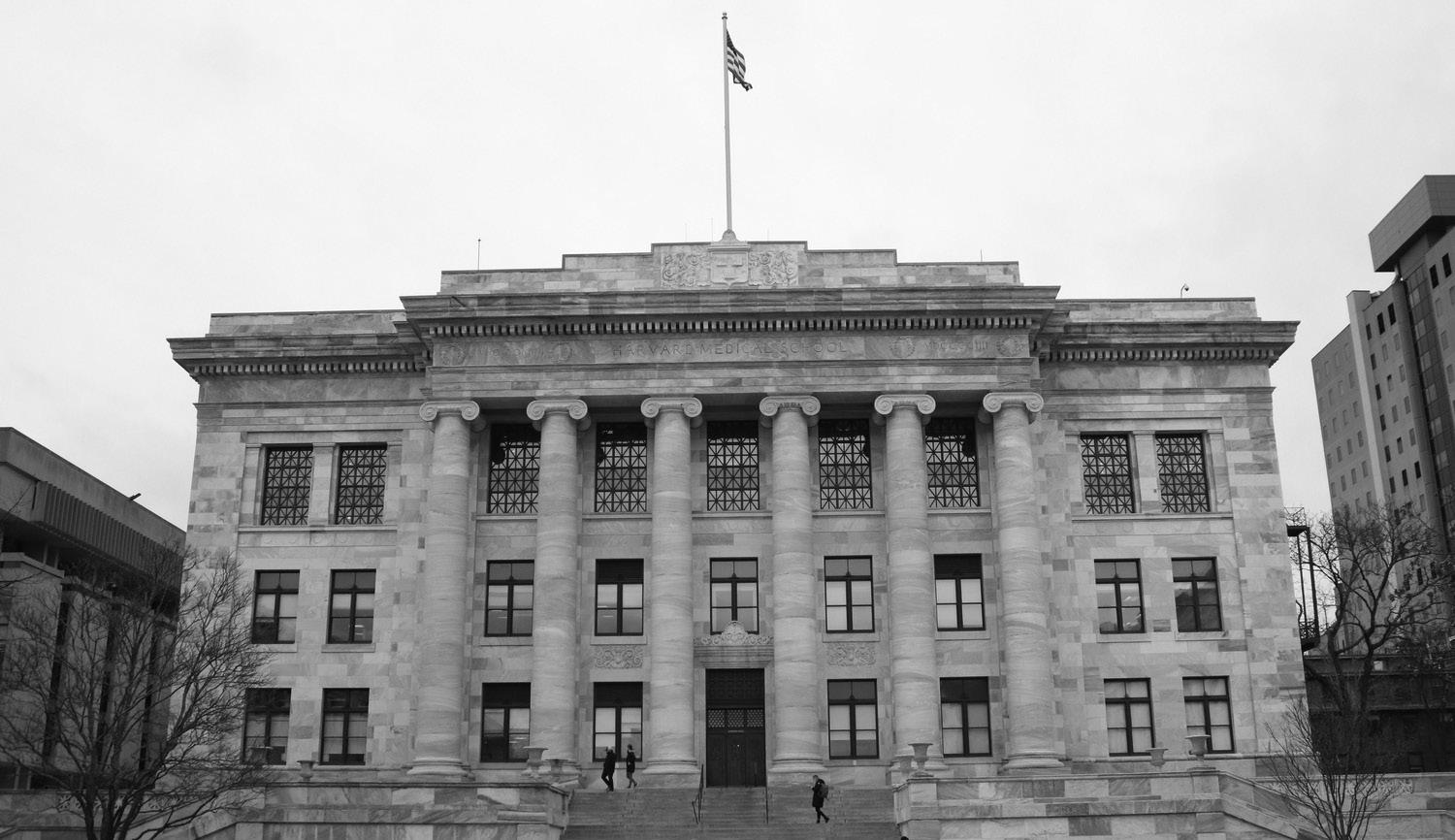
she added.
Timothy T. Hla, an HMS professor of surgery, also pointed to the clash of communication philosophies between private companies and scientists.
“Basic sciences and academia are very open,” Hla said. “You want to share information, you want to publish, you want the science to move forward, because it takes a village for any discoveries.”
“In industry, they’re much more secretive with a lot of confidential material, confidential information,” he added. “They don’t want you to share a lot of what you’ve learned.”
In fact, Hla said, “You can’t necessarily reveal it to the outside world unless you clear it with them.”
According to Pesheva, HMS prioritizes faculty members’ rights to publish their results without industry influence. “HMS does not accept funding from industry with restrictions on publication,” she wrote. Holt, the otolaryngology and neurology professor, noted that because these companies are usually profit-driven, researchers are also typically constrained to a narrower scope in their intellectual pursuits. “A lot of what we do in academic research is driven by just curiosity and scientific interest,” Holt said. “There are times where it’s come up, we’ve felt like there’s a certain path we’d like to follow to address

some scientific questions,” he added, “but the biopharma company has thought, ‘Well, that is interesting, but it might not be profitable.’” “And so they opted not to pursue things that we would have ordinarily pursued,” Holt said. According to Kagan, partnering with biopharma
COLLEGE
ormer
Sciences
the deadline
third
the
students,
campus study
Harvard
allow double
negotiating
to de-pest dining halls
study spaces.
Harvard Undergraduate Association Co-Presidents John S. Cooke ’25 and Shikoh M. Hirabayashi ’24 ended their 14-month term last week as Harvard College’s student government rapidly descended into controversy. But before their co-presidency went up in flames, many undergraduate students and some former HUA members said Cooke and Hirabayashi had managed to steer clear of the spotlight largely because the duo accomplished quite little — something they attributed to structural issues with the body overall. Under Cooke and Hirabayashi’s leadership, the HUA launched a new summer storage partnership with Harvard Student Agencies, hosted an Ivy League-plus student government conference for student leaders, and gauged student opinion before the Faculty of Arts and
voted against moving up
to add courses to the
Monday of
semester. Still, those wins paled in comparison to their lengthy list of campaign promises, which included providing discounted T passes to
bringing Nap Pods to
zones, advocating to
to
secondaries, and
with Harvard
and
Shikoh M. Hirabayashi ‘24, left, and John S. Cooke ‘25, right, pose for a photo in February 2023 ahead of their election as HUA co-presidents. Cooke and Hirabayashi ended their term amid controversy. ADDISON Y. LIU — CRIMSON PHOTOGRAPHER cam.srivastava@thecrimson.com william.tan@thecrimson.com
companies can also prove risky for researchers, who may see the support stripped away without warning. “Their interests can change on a dime,” Kagan said. “A company’s board of directors may ultimately say, ‘We’re investing too much money in our academic collaboration, so let’s cut this off tomorrow,’” Kagan said. “And that money immediately goes away.” Pesheva wrote in a statement that HMS partnership contracts include provisions that require companies to provide “adequate notification” if they plan to terminate. BY VERONICA H. PAULUS AND AKSHAYA RAVI CRIMSON STAFF WRITERS Harvard Medical School resides in the University’s Longwood campus in Boston. JONATHAN G. YUAN — CRIMSON PHOTOGRAPHER Daley ‘82 told The Crimson that though he hopes the federal government will increase funding for scientific research. MARINA QU — CRIMSON PHOTOGRAPHER veronica.paulus@thecrimson.com akshaya.ravi@thecrimson.com NEWS 15 APRIL 26, 2024 THE HARVARD CRIMSON
When the Cambridge School Committee met for a private executive session on April 1 to discuss whether to extend embattled Cambridge Public Schools Superintendent Victoria L. Greer’s contract, attendance was supposed to be strictly limited to School Committee members and staff. Except it wasn’t. According to a person familiar with the situation, one parent was present for at least the first hour of the virtual executive session, one of two back-to-back closed-door sessions where the committee discussed Greer’s contract. The second meeting resulted in an offer for Greer to resign, The Crimson reported on April 4. The breach of secrecy could explain why the Committee went silent for three weeks, despite an indication that Greer and the School Committee were nearing a contract agreement. Committee members went back into executive session Tuesday to discuss contract negotiations for “nonunion personnel.” The parent joined the meeting during its open session, and stayed on when the meeting went into executive session under the impression that the meeting was still open to the public. The parent remained on until Committee members noticed his presence. According to Massachusetts’ Open Meeting Law, executive sessions begin in open session, before members vote to enter the closed session. The CPS website contains a link to join meetings via livestream. The parent then told other parents his account of the discussions regarding Greer’s contract. CPS spokesperson Sujata Wycoff, School Committee secretaries Ariel Kennebrew and Katherine Christo, and Mayor E. Denise Simmons did not respond to requests for comment Wednesday.
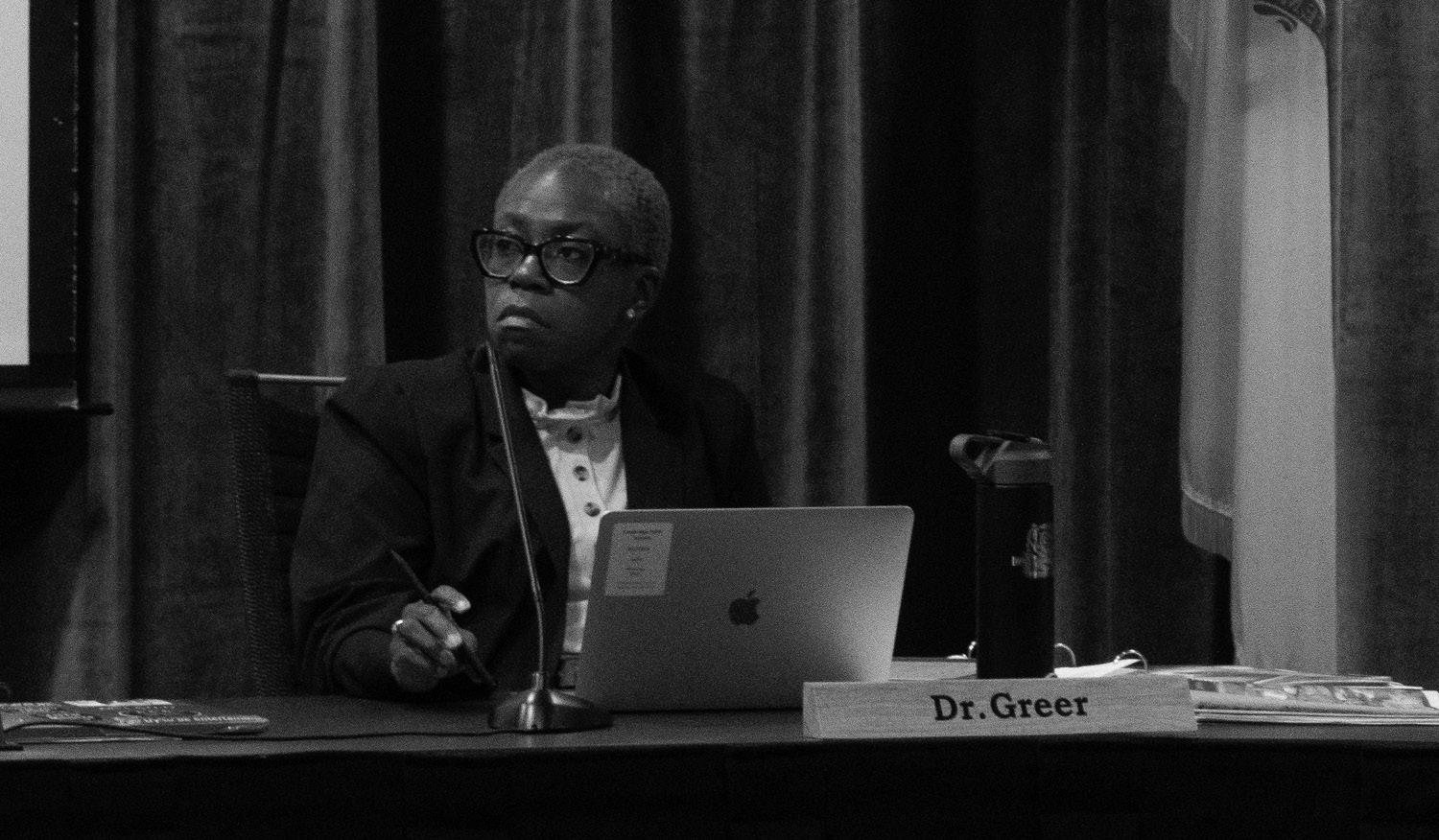
At the public School Committee meeting on April 2, members unanimously voted to postpone Greer’s midpoint evaluation indefinitely and without explanation.
The midpoint evaluation, which Greer was expected to present as a progress update since she was given a “needs improvement” rating by the School Committee last July, had already been postponed once. The executive session came as Greer has come under fire from parents, especially over her hiring practices and the district’s lackluster climate survey results. In Greer’s annual evaluation, members expressed concern over “the content and volume” of complaints from parents regarding principal hiring processes at Fletcher Maynard Academy and the Morse School. At the March 19 meeting, more than two dozen parents delivered public comments criticizing Greer’s
HUPD Sees Surge in Trespassing Arrests Compared to Recent Years
far exceed the average yearly number of trespassing-related arrests on campus over the last three years. According to HUPD’s dashboard, the department averages just over 10 trespassing-related arrests per year — eight in 2021, 15 in 2022, and nine in 2023. Four months into 2024, the department has already made eight arrests on trespassing charges. In previous years, the department has averaged just over three trespassing arrests between January and April. In March 2024 alone, the department made 5 arrests for trespassing on University property. HUPD spokesperson Steven G. Catalano wrote in a statement to The Crimson that the majority of trespassing-related incidents “result from a call from the community.” “If an officer or a community member believes that a crime had occurred, or an individual is engaging in, or about to engage in criminal behavior, our officers have a duty to respond and determine what transpired,” he wrote. “If someone has in fact committed a crime, they are subject to arrest or criminal charges.” The dashboard— a reform established following calls on campus to abolish the force – reports data on HUPD, including arrests and criminal complaints,
since the start of 2021. According to HUPD website, the force established the resource to “improve communication, information-sharing, and transparency.”
At least two of the individuals who were arrested for trespassing are unhoused, according to HUPD reports. One unhoused woman was arrested three times in the span of two weeks. This comes as cities across Massachusetts are struggling to accommodate an influx of unhoused individuals, resulting in action from the state government. HUPD officers have issued 23 trespassing warnings since January, according to police logs. The number of trespass warnings issued so far is similar to previous years, which average 43 incident reports for calls for service related to trespassing over the course of the year. The Smith Campus Center and Science Center are the most commonly reported locations for

Despite impassioned speeches and protests from community activists, leaders are moving forward with plans to indefinitely close the Democracy Center for renovations.
Ian Simmons — the president of the Foundation for Civic Leadership, which owns the building — doubled down on the plans at a contentious meeting with community members and organizers on Thursday evening to discuss the Center’s closure. The Center, which has operated at the corner of DeWolfe and Mt. Auburn Street for the past 22 years, is set to close its doors in July.
“The renovations are long overdue,” Simmons said. “We don’t expect the work to be completed overnight — it’s gonna probably take many, many, at least several many years.”
“The building itself is going to close to the public on July 1st,” he added. “That is not changeable.” But during the meeting — as with prior meetings discussing the closure — emotions ran high as dozens of organizers testified to their need for the space. Cara Kasey, local activist and artist, repeatedly confronted Simmons during the meeting to demand a response to community demands posted on the walls of the meeting room.
“What is going to be done to take care of and protect this kinship that you should be completely humbled and honored to even be allowed and brought into?” she asked. “How are you going to address these community demands? How are you going to take care of what we’ve brought — by your invitation — into the space while this goes on?” she added. Attendees referred to a list of five demands that were hung on the wall, including an indefinite pause to the center’s closure and increased transparency and democracy to determine the future of the space. FCL leaders plan for the space to become an outlet of Democracy House, an organization that provides “opportunities for rising generations to strengthen democracy,” according to Simmons. While Simmons insisted that community groups will be welcomed back after renovations, organizers remain skeptical. “The promises have been extremely vague, nonspecific, and they’re hardly reassuring in the broader context, that there’s a new vision for the space,” said Cambridge resident Dan J. Totten, who has used the space for seven years. “It’s clear that the owner desires this building to serve as an expanded home for Democracy House following the renovations.” While Simmons could not answer questions about what exactly would be done to renovate the building — citing an ongoing “investigation,” he said that improvements may include expanding American Disability Act accessibility, making the building more sustainable and adding square footage. Simmons also requested that organizers share improvements they’d like to see made.
sions had decreased by just 31 percent compared to 1990 levels.
The NZAP was first adopted by the City Council in 2015 with recommendations and strategies to reduce carbon emissions from building operations, which comprise 80 percent of the city’s total.
Still, the organizers continued to plead with Simmons to reverse the
Rasmussen said of the city’s efforts to reduce emissions, responding to a question from Councilor Patty M. Nolan ’80. “There’s just a time lag,” she added. “We can try to model it, but it’s not easy.”
The meeting focused primarily on ongoing efforts to increase energy efficiency in existing municipal and residential buildings and ensure net zero emissions for new construction ahead of a statewide 2030 deadline to see emissions decrease by 50 percent compared to 1990 levels.
As of 2019, Cambridge’s emis-
This past year, Cambridge’s initiatives to reduce carbon emissions have included a custom retrofit advisor program to increase energy efficiency in 12 buildings, the development of greenhouse gas reduction standards for buildings over 25,00 square feet, standardized targets for new construction aligned with state initiatives, and the promotion of offsite renewable electricity access.
As the city moves forward in the final year before a second five-year review of
practices, officials
implement a
tend
programs,
standards for residential and
commercial buildings.
continued commitment to promoting carbon neutrality is especially important, Nolan said, as the impacts of climate change largely fall on Cambridge’s most vulnerable. “The urgency of the public health impacts are becoming more and more evident as experts point out that the burden of the climate crisis falls disproportionately on low income communities and marginalized communities,” she added.
But Nolan remained critical of the city’s efforts to reach residential buildings, specifically calling out the retrofit program, which has only been implemented in “about 0.8, tenths of 1 percent of our buildings.” “If we do that every year, it’s going to be a century, you know, we’ll literally be underwater,” Nolan said. Cambridge resident David G. Rabkin, who has served on the city’s Climate Committee for more than 15 years, also commented on the city’s slow progress. “In the last 20 some years, we’ve done great work in Cambridge,” Rabkin said, “and yet, year after year, we haven’t reached the goals that we’ve set for ourselves for actually reducing city-wide emissions.” “We can’t allow ourselves to slow down. We have to move quickly,” he added.
hiring process at Graham & Parks, just one instance of parent discontent with Greer’s performance. Beginning in December, Graham & Parks Elementary School has likewise been immersed in conflict surrounding principal Kathleen M. Smith, who allegedly fostered a toxic workplace at her previous school. Over the past few months, parents have advocated for district change and eventually called for “immediate action” to fire Smith in an open letter. On March 31, the deadline to notify Smith of any contract changes, Greer let Smith’s contract automatically extend for an additional year. Graham & Parks is currently being investigated by a third-party law firm after parents accused Smith of fostering a toxic workplace environment. CPS also received low results on its 2023-24 climate survey for staff and parents, with statistics falling below nationwide medians for several benchmarks. The committee has until June 30 to notify Greer of any changes to her contract. If they do not act, Greer’s contract will automatically extend for an additional year. Privacy Breach May Explain Greer Delays CAMBRIDGE BY DARCY G LIN AND EMILY T. SCHWARTZ CRIMSON STAFF WRITERS A parent stayed on a Committee meeting as it moved into private executive session to discuss Greer’s contract. ELYSE C. GONCALVES — CRIMSON PHOTOGRAPHER darcy.lin@thecrimson.com emily.schwartz@thecrimson.com CONFIDENTIAL. The Cambridge School Committee discovered a breach during a private meeting about Greer. Cambridge officials do not know whether the city is on track to meet statewide emission standards by 2030 or a self-imposed goal of carbon neutrality by 2050, according to Susanne Rasmussen, who presented the annual review of Cambridge’s Net Zero Action Plan to the City Council Wednesday. At the meeting of the Council’s Health and Environment Committee — Rasmussen, the city director of environmental and transportation planning — said the city has not yet modeled the impact of the city’s climate policies since a 2023 report that analyzed data dating through 2020. “We just have a difficult time actually seeing the outcome in the short term,”
its carbon neutrality
in-
to
newly developed standardized targets plan, develop electrification support
and introduce performance
small
This
decision to close the space. Chloe Koulefianou ’23, who interned with FCL, expressed concern about the loss of supportive grassroots organizing in Cambridge after the space is closed. “There is no rectifying this decision if it is made,” Koulefianou said. “I feel like you can never find a space like the Democracy Center anywhere — it’s an incredibly unique space.” “Shuttering the DC in the name of the long-term is like breaking a vase and trying to glue it back together,” she added. In response to organizer concerns, Simmons reiterated that the space will close, but that he believes the atmosphere will return when the space eventually reopens as the Democracy House. “I’m a little more optimistic than maybe you’d be at this moment about the ability of the community to come together again in a revived civic space, and for great things to happen here again,” Simmons said. Despite Activist Pleas, Owner Says Democracy Center to Close Cambridge Struggles to Meet Carbon Neutrality Goals by 2030 BY SALLY E. EDWARDS AND ASHER J. MONTGOMERY CRIMSON STAFF WRITERS sally.edwards@thecrimson.com asher.montgomery@thecrimson.com The Harvard University Police Department is on track to
report-
as having “piggybacked” into
requiring swipe access.
BY SALLY E. EDWARDS AND ASHER J. MONTGOMERY CRIMSON STAFF WRITERS sally.edwards@thecrimson.com asher.montgomery@thecrimson.com SOURCE: Harvard University Police Department Arrest and Criminal Complaints Dashboard. SALLY E. EDWARDS — CRIMSON STAFF WRITER We can’t allow ourselves to slow down. We have to move quickly. David G. Rabkin Cambridge Climate Committee member avani.rai@thecrimson.com BY AVANI B. RAI CRIMSON STAFF WRITERS METRO 16 APRIL 26, 2024 THE HARVARD CRIMSON
trespassing in 2024. Other arrest locations include Emerson and Fairfax Hall, as well as the Science and Engineering Complex. Multiple individuals were
ed
buildings
The nationwide movement in solidarity with Gaza continues. As Israel’s assault on Gaza worsens — it has already killed over 34,000 Palestinians — people across the country, including student groups, have taken a stand. These students have bravely supported Palestinian liberation, echoing a long history of student movements challenging universities complicit in oppression.
This movement escalated last Thursday when Columbia University, breaking long-standing norms, suspended and arrested over 100 students for protesting. While the robust, diverse group of Muslim and Jewish protestors at Columbia underscored the power of nonviolent coalition-building, the university’s president deemed their protest encampments a “clear and present danger to the substantial functioning of the University.”
In the following days, faculty members expressed disagreement with the university’s harsh response, rallying in support of student organizers and free speech. Similar encampments have since appeared at schools like MIT, Emerson College, and the University of North Carolina, and administrators have sent police to break them up at Yale University and New York University.
Now, on our own campus, Harvard has suspended the Harvard Undergraduate Palestine Solidarity Committee, the center of pro-Palestine organizing at this university.
We’re witnessing more than just the clashing of differing viewpoints. These confrontations display a deeply worrying nationwide trend where administrators are increasingly comfortable cracking down on peaceful pro-Palestine protest, including by summoning police. To students, demonstrations are necessary to prevent genocide in Gaza. To ad-
ministrators, student protests severely disrupt campus life. These encroachments raise profound questions about the role of university administrators: Will they safeguard free speech or stifle it under the guise of maintaining order?
Historically, campuses have served as incubators for movements that have reshaped society.
From the Vietnam War to South African apartheid, student organizing for justice has driven significant
“
several of these universities, like NYU, market their history of student activism to prospective students.
It appears history is repeating itself, and the hypocrisy of those in power is again on display. The response to current movements has grown increasingly repressive. Universities, supposedly bastions for academic freedom, now marshal police violence, silence valedictorians, and veto student democracy.
We are facing a dangerous return to an era where
A poor stance from Harvard at this critical juncture will not endure the test of time. We cannot lean into an academic police state where speech is monitored and muzzled. The consequences of such a shift are dire for both the University and the larger society.
changes in public policy and societal norms.
Rarely have universities proactively responded to student demands. Instead, often to their embarrassment, they send police in riot gear to punish students urging peace. In 1969, for example, Harvard sent in the police to aggressively clear students protesting the Vietnam War in University Hall. In 1985, University of California, Berkeley police arrested 159 anti-apartheid demonstrators for blockading two campus buildings.
Although many viewed these movements as contentious or disruptive at the time, they later gained recognition as essential for making progress. This fact is especially evident when one considers that
we treat nonviolent demonstration as criminal activity.
When universities emphasize rules and order, they often also overlook the safety of those expressing dissenting views. Pro-Palestinian students — myself included — continue to face doxxing, threats, and online harassment. There is a necessary balance between ensuring physical safety on campus and respecting our rights to free speech and protest, but that balance is currently lacking. University crackdowns only serve to stoke student opposition. Given time, they can alienate a school community — faculty, students, and alumni alike, including those without a stake in the conflict.
Being a Jewish student at Harvard can be hard. Recent events on our campus not only surfaced antisemitism from Harvard students and faculty, but also demonstrated the administration’s failure to protect its Jewish students.
Since Oct. 7, antisemitism has surrounded us.
The murders of our friends and family in Israel were celebrated on social media, and “Zionist,” a word that describes the vast majority of Jews, continued to be used as a slur on this campus.
However, antisemitism at Harvard is not a new phenomenon. It is rooted in our institution.
When the number of Jewish students enrolled in the University rose in the early 20th century, the administration deemed there to be a “Jewish problem.”
Harvard President Abbott Lawrence Lowell founded the committee on “Methods for Sifting Candidates for Admission,” to reduce the number of Jewish students at Harvard and solve the school’s “Jewish problem.”
To convince a Jewish professor to join the committee, Lowell claimed that greater Jewish enrollment would spur more antisemitism at Harvard, and therefore Jews should support efforts to limit their numbers.
In Lowell’s eyes, our presence was the cause of Har-
BY DANIELLE ALLEN
Jvard’s antisemitism.
The Harvard community has always found reasons to justify our exclusion. Today, students continue the University’s legacy by finding new reasons to ostracize Jewish students. They call us “colonialists” for living in our indigenous land. They claim that we control the media and Harvard itself. They try to convince us that the antisemitism we experience at Harvard is not real, claiming that antizionism is not antisemitism and anonymously posting messages including “love how u manage to make it abt urself.”
The Harvard Undergraduate Palestine Solidarity Committee is just the latest actor in a long, long history of antisemitism on this campus. When the PSC posted a cartoon that depicted Jews as money-grabbing puppet masters, lynching an Arab and a Black person, they were peddling ancient antisemitic tropes. After facing backlash, they removed the post. When students chant “globalize the intifada,” they invite violence against Jews and Israelis around the world. When they say that “all of you Zionists are the same. Killers and rapists of children!” They say that the vast majority of Jews are despicable human beings. When they call “from the river to the sea Palestine is Arab,” they call for the ethnic cleansing of Jews of their ancestral land.
Looking at the history of this institution, and the recent wave of activism, we can easily expect Harvard’s knock-off encampment to bring the same level of unsafety to our Jewish students at Harvard as it brought to those at Columbia.
After protesters surrounded and yelled at Jewish students at Columbia and pointed signs at them, describing them as “Al-Qasam’s Next Targets” — referencing the military wing of Hamas — a rabbi at Columbia urged students to return home over safety concerns.
Hopefully, Harvard’s rabbis won’t have to do the same.
Lowell would have been content with the current situation. Nowadays, the administration doesn’t need to intervene to solve their Jewish problem: Jewish students are scared to commit to Harvard.
But the rise of antisemitism and the escalation of recent events are precisely the reason that you, a Jewish admit to Harvard, must come to this University.
To not attend is to let the antisemites win. We have been working for two thousand years — since we were exiled from our ancestral land — to have the right to belong. Our presence is not the cause of antisemitism at Harvard, but the cure for it.
If we learn anything from our history, it should be that when antisemitism spikes, the world stands idly by. It shouldn’t be just our job to fight antisemitism, but unfortunately, no one else will do it for us.
If universities wish to de-escalate tensions, the solution is straightforward: Engage with students and negotiate meaningful policy changes. It is simply inadequate to acquiesce to far-right donors and pundits at the expense of legitimate student advocacy. That is not the way to address rising antisemitism and Islamophobia.
I fear that Harvard, like many other institutions of higher education, will persist with a misguided focus on “safety-ism.” Prioritizing an end to discomfort over challenging, necessary conversations, including about genocide in Gaza and the atrocities committed on Oct. 7, is a failing strategy and a moral failure.
We can protect all students. We can address injustice. We can avoid an unproductive administrative response.
A poor stance from Harvard at this critical juncture will not endure the test of time. We cannot lean into an academic police state where speech is monitored and muzzled. The consequences of such a shift are dire for both the University and the larger society. Veritas is something to practice, not just preach. We must call on universities to uphold the principles of free speech and democratic engagement, even — especially — when it involves challenging or radical ideas. While contentious public speech and protest help kick-start debate, classrooms and other academic settings offer a forum for students to move beyond disagreement, eliciting deliberation and understanding. Our campuses should elevate free speech as a form of active, engaged citizenship — not just reacting to change, but shaping it, aiming to create a more inclusive, dynamic society. We students will never be silent in the face of op -
freedom faces additional constraints from professional protocols and institutional rules, including prohibitions on plagiarism, evidence fabrication, and research that fails to meet ethical standards. Free speech on campus is further limited by organizational protocols — the time, manner, and place requirements for demonstrations. We are watching these evolve in real time.
Academic freedom and free speech both draw lines between impermissible and permissible speech. They do not, however, help us distinguish between good permissible speech and bad permissible speech. That distinction must come from standards of scholarship and
the art of rhetoric.
Importantly, permissible speech is not coextensive with good speech. More generally, many bad actions are legally permissible: smoking, gambling excessively, gluttony, being rude or insulting people, breaking informal promises, lying (legally permissible in at least some contexts), and peeing in the swimming pool. These actions, though legally permissible, are typically also cases of poor judgment or morally unacceptable or unethical behavior.
Similarly, the fact that a speech act is permissible — under either academic freedom or free speech principles — and that someone therefore has a “right” to its utterance does not make it a good contribution or exempt a speaker from judgment or moral evaluation.
Speech acts can be factually or morally erroneous, offensive, ad hominem, and otherwise fallacious or poorly argued — all scholarly failures. Or they might not only suffer from fallacious arguments but also display failures of judgment, emotional calibration, or expression, all types of rhetorical failure.
Harvard’s values statement contains two guidelines that help distinguish between good and bad speech. Our behavior on campus should embody “respect for the rights, differences, and dignity of others” as well as “honesty and integrity in all dealings.”
Scholarly standards and longstanding norms from the art of rhetoric make concrete how to live by these values.
One logical cut distinguishes between the impermissible and permissible. Then a second, within the category of the permissible, distinguishes the good and the bad. Once we understand this, it becomes easier to figure out how to respond to problematic speech acts. Are they actually impermissible? Or are they permissible but bad?
For now, I’ll focus on the impermissible category. I’ll discuss permissible but bad speech acts in my next column.
Expressive acts alleged to be impermissible require adjudication and, if found to violate certain rules, require sanction. Our system of sanctions helps realize the expectation in the University values statement that we take accountability for our actions and our conduct within the community.
To determine whether a speech act is impermissible, we ask a series of questions. Has the accused party violated the law, including workplace laws that prohibit the creation of a hostile environment? Have they violated campus policies, such as non-discrimination, anti-bullying, and time, manner, and place requirements for demonstrations?
I know this is a lot to put on your shoulders as a high school senior. But I genuinely believe in our power — your power — to change this place. Being a student at Harvard gives us a say in its future.
Together, we can hold the administration accountable. We can have a voice in campus life. We can tell our stories and the stories of our people to our classmates.
In this challenging year for Jews at Harvard, something special has also happened. In the months following Oct. 7, the Jewish community has come together like never before. Hillel became our second home.
We organized vigils, created spaces to mourn, and found one another. When one of us was down, we lifted them up. As the months passed, these connections blossomed into beautiful friendships that we will cherish for many years.
Before coming to Harvard, I didn’t embrace my Jewish identity, but the last few months have given me a newfound appreciation for my heritage and people. They have shown me that being Jewish is core to who I am.
While my family is thousands of miles away from me in Israel, I know I have a second family here at Harvard. And if you come to Harvard, you will, too.
Our processes for adjudicating these questions are not yet stable. The same was true of early campus efforts to implement Title IX policies in response to sexual harassment allegations. It has taken years, and many proceedings before Harvard administrative boards, to refine adjudication procedures and establish usable precedents — regarding evidence procurement and due process, for example — to meet appropriate standards. Yet, answers to questions about how to adjudicate whether speech acts are impermissible are urgently needed. In 1990, the Faculty of Arts and Sciences established a committee of three highly-distinguished faculty members — Joseph S. Nye Jr., Henry Ehrenreich, and Michael J. Sandel — to develop the FAS policy on speech. That policy stands to this day and is the basis for the time, manner, and place norms we use now, as well as for key elements of the sanctioning structure for code of conduct violations.
At the end of their report, they recommended a permanent student-faculty advisory committee on free speech, involving both graduate and undergraduate students. The committee could continually discuss ambiguities in the guidelines and occasionally meet with the administration and others to discuss how to strike appropriate balances of rights in hard cases.
Unfortunately, this standing committee was never established. As a result, we currently face significant challenges. We lack a clear mechanism for clarifying the line between creating a hostile environment and exercising free speech. No existing governance body can help the University’s administrative boards develop a robust, precedent-based understanding of speech-related issues.
Though the ad boards will eventually gain this insight over time, a standing committee could expedite and enhance our campus’s learning process. Such a committee, ideally integrated into a University-wide faculty Senate, could methodically work through cases to delineate clear principles about what constitutes impermissible speech, thereby guiding the whole campus with a consistent set of standards.
Far better to learn and teach proactively than to rely on sanctions to do our intellectual work.
–Danielle Allen is the James Bryant Conant University Professor at Harvard University and director of the Allen Lab for Democracy Renovation.
This piece is the third installment in a series that will identify and assess the difficult ethical questions surfaced by Harvard’s recent leadership crisis.
pression. It’s time our universities recognize it. –Maya Shiloni ’26, a Crimson Editorial editor, is a double concentrator in Government and Economics in Mather House. OP-ED OP-ED OP-ED BY MAYA SHILONI THE HARVARD CRIMSON EDITORIAL 17 A University Police State Is Forming. Harvard Can’t Be Next. Harvard Needs Jewish Students Not All Permissible Speech is Good BY CLYVE LAWRENCE –Clyve Lawrence ’25, a Crimson Editorial editor, is a Government concentrator in Adams House. APRIL 26, 2024
ust because you can say it doesn’t mean you should. Whether our campus relationships are healthy depends on choices we make about how we advocate our views. Last week, I explained the crucial distinction between academic freedom and free speech. Academic freedom is specifically tailored to the context of higher education and safeguards the intellectual independence of faculty and students. Free speech is a broader right protected by the First Amendment that applies within the public sphere. Neither is an unlimited right to say whatever you please. Academic freedom and freedom of speech both make much speech permissible; they do not, however, make all speech permissible. Legal limitations restrict both categories of speech, prohibiting incitement, intimidation, harassment, extortion, libel, defamation, and dangerously misleading acts like falsely shouting fire in a crowded theater. Academic
Harvard knew it was coming. Bulletins taped to the gates announced the closure of Harvard Yard and, pointedly, a rule against erecting tents there. Security guards stationed at the entrances checked Harvard IDs. Inside, the Yard was quiet. Then, Wednesday afternoon, it finally happened. Students rushed through Harvard Yard pitching tents to demand the University’s divestment from “Israel, the ongoing genocide in Gaza, and the occupation of Palestine.” They join a wave of protests on campuses across the country that began at Columbia University last week.
Despite rising tensions between the protestors and Harvard’s administrators — and the chaos erupting at other colleges — the first day of the Harvard encampment was marked by relative tranquility. Protesters left walkways unobstructed, demonstrated peacefully, observed campus quiet hours, and used trained safety marshals to de-escalate any confrontations that might arise near what they’re calling the Harvard Liberated Zone. There has been no evidence, either, of the disgusting antisemitic incidents that took place on Columbia’s campus in the past week.
The University deserves some credit for this tranquility. In closing the Yard to outsiders and opting not to disperse the protest immediately, the University acted wisely to create conditions more conducive to constructive engagement.
Now, the challenge is to keep them. As the cha-

Joining other universities across the United States, Harvard students protesting the ongoing war in Gaza and their institution’s inves ments in that war, have constructed an encampment in Harvard Yard.
This development follows events at Columbia University, where administrators used the heavy-handed tactics of arrest and suspension to dismantle an encampment constructed by their students. Hours later it reappeared in full force, accompanied by faculty protests against the treatment of students.
While the Columbia protesters have made clear that they will face arrest in order to further their cause, others, including donors and Congressional Republicans, have demanded that these protests be brought to an end.
Now Harvard faces a similarly difficult choice: Attempt to clear these encampments by disciplining or arresting students or let the encampments remain, perhaps in defiance of University policies, and face the scorn of those who would like to see these protests shut down.
But just because university administrators can shut down these protests doesn’t mean they should. History shows quite plainly that using coercive force to close encampments won’t eliminate protests — it could very well strengthen them.
People in power, whether administrators at universities, teachers in the classroom, police on the street, prosecutors in the courtroom, or members of Congress, often have a range of pow -
ers legally available to them that they can use in any situation, but prudence says they should not.
Some may say that rules must always be enforced for the sake of fairness and order. As a college professor dealing with everything from classroom policies on electronic devices to requests for extensions on assignment due dates, I appreciate this perspective.
But every teacher also knows how the slavish enforcement of every rule can become a distraction that undermines the greater goal of learning. Teachers and other leaders don’t just robotically enforce rules; they’re people chosen for their wisdom about how and when to judiciously apply them.
Political scientists refer to the practice of leaders wisely showing restraint in not maximally exercising power or enforcing policies as “forbearance.” A congressional leader practicing forbearance might seek compromise with the other party even though they have the votes to pass laws on their own because they know that one day the other party may be in power.
As the recent history of American politics shows, with Congress deadlocked by endless filibusters, courts languishing without judicial appointments, and the threat of tit-for-tat impeachments, a lack of forbearance can lead to a cycle of escalation and, eventually, ruin.
The events on college campuses recently have shown the same pattern of escalation. When leaders at Columbia, seemingly in an attempt to appease grandstanding members of Congress, didn’t practice the restraint used by previous college presidents faced with similar protests, student demonstrations only grew. As a result, Co -
lumbia has faced even more turmoil and has been forced to move to hybrid instruction.
Why would anyone be surprised at this outcome?
When protesters are angry at authority, a heavy-handed use of authority is only going to make them more likely to protest. One only needs to look back to the George Floyd demonstrations in 2020 to understand this. And, of course, the arrest of peaceful protesters did little to appease the cynical politicians who are now calling for the removal of Columbia’s president.
What happened at Columbia makes the immediate case for forbearance on college campuses clear: Coercive force will not make anybody happy because it will not accomplish anyone’s goals, even those who most want to see the protesters gone.
But the case for forbearance isn’t only one of immediate expediency. We practice forbearance for a greater good. Just like a member of Congress should ask whether they are elected only to pass legislation that will help with their reelection or whether they serve a higher purpose for the good of their country, a university leader must ask whether their role is merely to keep their job or nobly serve the higher goals of the university. Would ending these protests allow all voices to be heard? Would ending these protests allow for a free exchange of ideas? Would ending these protests bring us closer to the truth? It’s hard to see how.
The alternative for our leaders is to simply wait these protesters out — even if it means life on campus is disrupted a bit because people have to show an ID to get into Harvard Yard or see and
Yesterday, in protest of the war in Gaza, dozens of student organizers began an encampment at Harvard Yard, holding protests and spending the night in tents.
Many on campus support this cause. Others oppose it, finding some of the chants offensive or even antisemitic. Harvard’s administration has warned participants that the encampment violates University guidelines, igniting debates about the regulation of protests on campus. Listening to these conversations as an Israeli-American and a Harvard professor, I have to say: Against the backdrop of a raging war, events at Harvard seem almost inconsequential.
Whether you see Israel as brutally killing more than 30,000 Palestinians, the majority of them women and children, or as defending itself against a terrorist organization that integrates its fighters among civilians, events in the Middle East make our conversations here in Cambridge about the minutiae of time, place, and manner restrictions on public speech or the contours of academic freedom seem insignificant.
And in some sense they are. After all, Harvard could decide tomorrow to divest from Israeli companies and boycott Israeli universities, or it could decide to double
its investments in Israel and mandate that students take a class on Zionism. Neither would impact the course of the war 5,000 miles away in the slightest. Given the scale of the war, I can understand why some protestors, convinced of the justness of their cause, choose to flout the seemingly petty rules of our university. However, sometimes breaking the rules is more performative than actually advancing the cause: Every day that the headlines focus on the antics of Harvard students is a day that they do not focus on Gaza. This is good for burnishing the activist resumes of some protestors, as well as for Benjamin Netanyahu, who much prefers to talk about antisemitic Ivy League students than the turmoil within his own country. But it certainly doesn’t help the people of Gaza. The fact that our university cannot stop this war, does not mean we don’t matter. To explain why we can make a difference, let me recount a story. When I started as an assistant professor at Princeton in 2005, shortly after moving to America from Israel, one of the first students I advised was from Iran. He was not allowed to visit my home country, nor I his, and yet in the United States, we could collaborate on computer science research and find other points of commonality as well.
For example, as an observant Muslim, he often ate at Princeton Hillel because Kosher meat is typically Halal.
In the intervening decades, I have worked with scholars of many nationalities, religions, and back-
grounds. This diversity is a hallmark of the American higher education system and is part of the reason that the United States has some of the best universities in the world — Harvard included. Approximately seven million Jews and seven million Arabs live between the Jordan River and the Mediterranean Sea. Neither the chants of Harvard protestors nor those of the settlers in the West Bank will change the fact that both people are there to stay, and that the land will never be fully Arab nor fully Jewish.
Jews and Arabs will either continue the cycle of violence or find a way to peacefully coexist. While academic institutions cannot alter the current conflict, if we do our job right, Harvard-educated leaders may help create a better future for both Palestinians and Israelis.
In an ideal world, Harvard would be a place for people of different beliefs to engage in dialogue and find solutions and common ground. Lately, though, we have become a place where people talk at each other rather than to each other.
os at Harvard’s peer schools makes painfully clear, that means one thing: Don’t call the police on peaceful protests.
At the University of Texas at Austin, law enforcement kneeled on students and a protester was punched by state troopers. At New York University, a clash between police officers and protestors resulted in bottle-throwing and pepper spray. At Columbia, droves of outside protestors swarmed to campus gates after the New York Police Department cleared student protestors — before, that is, the
hear things they disagree with.
But being exposed to controversial views is not only the price of living in a free society — it’s also the great benefit of attending college and having your perspectives challenged. And eventually, as public attention will inevitably shift elsewhere, the reduced spotlight will make things easier on everyone.
Of course, leaders could also talk to these student protestors and hear their demands — many of which, like disclosing the University’s financial ties to companies aiding the occupation of Palestinian territories and the war in Gaza, are eminently reasonable. Why should the financial holdings of universities, places built not to maximize profits but rather to promote truth, be kept secret from their stakeholders?
Moreover, a fog of disinformation has covered these protests. Some claim that universities are overrun with antisemitic hordes, while others, including myself and my colleagues, have seen only peaceful actions from diverse student protesters, including many Jews, earnestly challenging what they see as a grave violation of human rights. University leaders must be clear about what is happening on our campus, rather than letting social media and opportunistic politicians manufacture narratives. There are no easy decisions here. But leaders are exceptional, not because they competently make routine decisions, but because of the qualities they bring when the times are exceptional. Even when they are under extreme pressure to take action, it is leaders who proceed with forbearance who are most often judged kindly in the history books.
Even when we invite speakers of opposing beliefs, they rarely share a stage. Rather, we support those with whom we already agree and protest those we oppose. The few organizations trying to preserve some semblance of discussion across difference — such as Standing Together, an organization that seeks to foster partnership between Jews and Arabs — are attacked by all sides. At Harvard, tellingly, their posters were torn down.
We often discuss whether protest regulations and restrictions are too tough or too lax. Don’t get me wrong — these conversations are important. A university should allow vigorous expressions of opinions, even when they cause some amount of disorder. There are worse things than a few tents on a lawn.
But the University must also balance the right to protest with the safety of its students and the ability to conduct its business. Unfortunately, no matter how lax the rules are, those on the extremes of a movement will always believe that they are made to be broken.
Ultimately, a university’s culture is more important than its rules or regulations. We must all ask ourselves whether we prefer the comfort of interacting only with those who agree with us or if we came here to engage in difficult conversations.
If it is the latter — which I sincerely hope — we must be prepared to encounter speech on campus that we find not only wrong but offensive and even hateful.
Alternatively, we could choose to retreat into our safe spaces, interacting solely with those who echo our own perspectives. It is a fine way to live one’s life, but a waste of the precious opportunity that we have all been granted.
tents returned in greater numbers just a few hours later. To be sure, there are protests that warrant dispersal. But the experience of the last several weeks shows that it has often been unwise, and our experience of the encampment at Harvard so far — not disruptive, not offensive, not threatening — makes clear that we could not be further from needing the police. As for the demands of the protestors, we know Harvard won’t capitulate to every request, but that doesn’t mean it should do nothing, either. The University owes its protesters the
students — protesters and non-protestors alike — are safe. Harvard must keep it that way. – Boaz Barak is the Gordon McKay Professor of Computer Science. Keep The Encampment Peaceful OP-ED OP-ED STAFF EDITORIAL THE HARVARD CRIMSON EDITORIAL 18 APRIL 26, 2024
Grabbing
Leaving Protesters Be BY BOAZ BARAK RISING TENSIONS. Heading into day two, students — protesters and non-protestors alike — are safe. Harvard must keep it that way. –This staff editorial solely represents the majority view of The Crimson Editorial Board. It is the product of discussions at regular Editorial Board meetings. In order to ensure the impartiality of our journalism, Crimson editors who choose to opine and vote at these meetings are not involved in the reporting of articles on similar topics. –Ryan D. Enos is a professor of Government. BY THE CRIMSON EDITORIAL BOARD NATALIE Y. ZHANG — CRIMSON DESIGNER BY RYAN D. ENOS
dignity of a conversation about their demands — beginning, perhaps, with the not-unreasonable request that it disclose more information about its billions in investments. The protestors have done their part; now, Harvard’s leadership must do theirs. Heading into day two of the encampment,
Harvard’s Protesters Should Stop
Headlines Ryan Enos: The Case for
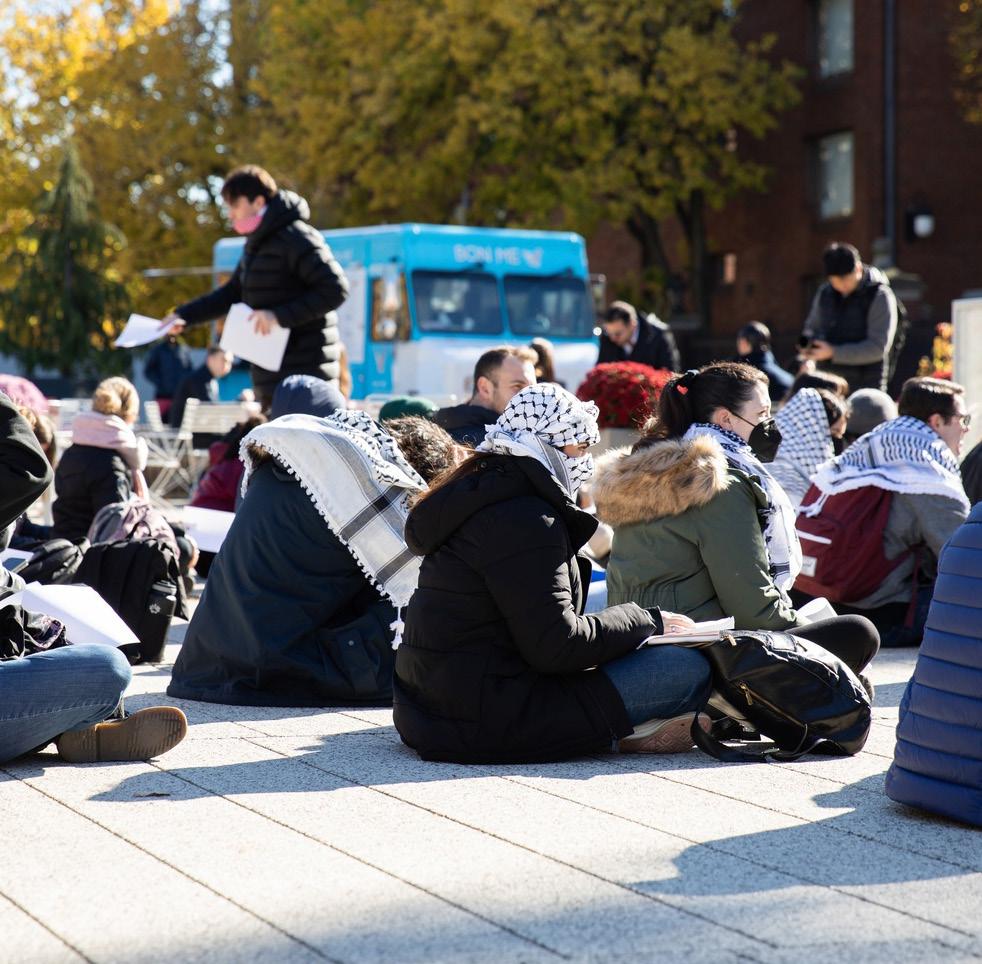
Student Organizers Must Learn From The Nightmare At Columbia OP-ED
This week, as Jews worldwide gather around the Seder table to celebrate the first nights of Passover, college campuses are closing their gates and moving their classes online in response to — and in anticipation of — vitriol and violence toward Jewish students during pro-Palestine demonstrations.
The Crimson reported on Monday that the Harvard Undergraduate Palestine Solidarity Committee was suspended for “violating student organization rules”— but that doesn’t mean that student organizing efforts will suddenly cease. It’s likely that, like on campuses across the country, the opposite will occur. While inflated accusations of antisemitism on college campuses may undermine the ability to call it out where it actually exists in the pro-Palestine movement, the antisemitic scenes unfolding at Columbia University — and now other campuses, too — are as blatant as ever. The ongoing demonstrations are led by Columbia Students for Justice in Palestine (whose post-Oct. 7 statement makes the PSC’s words seem benign) and conducted in partnership with an organization called Within Our Lifetime and a few other campus groups. WOL’s demonstrations at Columbia this weekend were advertised as “Flood Columbia For Gaza,” seemingly referencing Hamas’s name for the Oct. 7 massacre: “Operation Al-Aqsa Flood.”
WOL’s membership isn’t exactly full of social-justice-oriented peaceniks. Their stances are openly pro-violence, and their protests have been consistently attended by several “activists” who pleaded guilty to violent antisemitic hate crimes. Saadah Masoud, a prominent WOL protester and repeat antisemitic hate-crime offender, upon being arrested for assaulting a Jewish man at a rally, said to detectives, “All this for one Jew?”
I’m sure he’s “just an anti-Zionist,” though.
With people like this organizing on and around campus and actively collaborating with my classmates, I would not feel safe to wear my Star of David, much less to openly share my views, regardless of their content.
The situation on Columbia’s campus is far more severe than the antisemitic incidents we have seen thus far at Harvard, but I worry that similar circumstances could soon make their way to Cambridge. Such a threat warrants urgent reflection from our campus’ organizers.
Pro-Palestine groups must acknowledge that proud extremist antisemites are joining campus protests at universities much like ours, and confront the fact that their hateful and violent theories of change are seeping into on-campus advocacy.
What began as a cluster of tents on Columbia University’s main green calling for its divestment from financial interests in Israel ended with NYPD officers forcibly removing over 100 student protestors. Since that incident, more than 40 encamped pro-Palestine protestors have been arrested at Yale University, and new encampments have formed on campuses across the nation, including at MIT, Emerson College, and Tufts University. As protests roil its peers and neighbors, Harvard’s administration is apparently feeling the pressure. Initially, the University responded by closing Harvard Yard to the public and posting notices reminding students that tents are not permitted there. Now, Harvard has gone far further: Yesterday, the College notified the Har-
vard Undergraduate Palestine Solidarity Committee that it had been suspended for co-organizing protests with unrecognized student advocacy groups. If Harvard hoped this would stave off organizing, they haven’t been paying attention. As a technical matter, there is no question that the PSC did break the rules, and it was given several weeks of notice that it was doing so.
But the College has discretion to enforce these rules, and in this case, it obviously shouldn’t have.
Cracking down on this nonviolent protest group will only inflame community relations at a time when the opposite is needed. By forcing the PSC — and, due to its own club recognition freeze, several of the PSC’s partners — to operate underground, Harvard further alienates pro-Palestinian students, compromising its ability to engage with them constructively. The chaos at Columbia, in no small part a result of the University suspending student advocacy groups last semester, makes that much clear. More fundamentally, on a campus where, from the start, administrators did too little too late to protect pro-Palestinian speech, this feels like suppression. We can’t pretend to guess at
the motives of the Dean of Students Office. But whatever the impetus, the decision will be taken as a paranoid response to events at Columbia and elsewhere.
In an apparent attempt to curb such protest on our campus, Harvard may perversely have just called it into existence. Indeed, if the University’s goal was deescalation, history is not on its side: When it called in the police against student protestors in 1969, the backlash shut down campus.
It’s not too late to stop this madness. The DSO can fix this mistake by working with the PSC immediately to create a pathway to restoring its recognized status.
Student groups aren’t above the rules. But the rules aren’t above the good of this campus. Harvard must choose the latter.
These extremists do not care about promoting peaceful coexistence and ending the onslaught on innocent civilians in Gaza. They are there because these protest spaces have opened a conduit that is permissive of violent extremism and overt eliminationist antisemitism. It seems student organizations have allowed it, or at the very least, turned a blind eye in the name of coalition-building.
That said, the students who were arrested for their specific encampment protest within Columbia’s gates — while their words and choices may be objectionable to some — were largely non-violent. Even the police said so.
But non-violent is not the same as non-hateful, and a peaceful act does not negate overt antisemitism and intimidation of students on Columbia’s campus.
Here, two truths can exist at once. The decision to arrest students in the encampment by Columbia’s president was an overreach of police power and did no good for campus tensions. Still, many student organizers, including at Columbia, have lost their way and are damaging their movement. If organizers on Harvard’s campus want to be an effective force for a just future for Palestinians, they must take careful note.
As the war continues, too many students are succumbing to vitriol, disdain, and manichaean ideologies. At best, these organizing approaches fail to move past loose theoretical language about settler-colonialism and liberation. At worst, they come across as condoning mass violence and calling for the elimination of Jews from the region. The chaos at Columbia — which blurred the lines between student and non-student protestors and unleashed a whirlwind of antisemitism reminiscent in tone to the “Unite The Right” rally in Charlottesville, V.A. — is a prime example.
On Friday, the Harvard Undergraduate Palestine Solidarity Committee organized a demonstration in Harvard Yard. Yesterday afternoon, the organization was suspended.
Why? The PSC blatantly and repeatedly violated the College’s student organization guidelines, neglecting to register the protest and co-sponsoring the rally with several unrecognized student groups. Today, the Editorial Board acknowledges these obvious transgressions yet condemns the suspension, arguing that the University should turn a blind eye in order to preserve its student activism. According to the Board, the PSC is the exception to the rule; it is above the law.
What good is a rule that isn’t consistently enforced? Which other rules should we also ignore? The fact of the matter is that students and student groups cannot be allowed to violate University policies with impunity.
The PSC’s suspension didn’t come out of nowhere. The rule banning events co-sponsored with unrecognized student groups was put in place long before Oct. 7. And the PSC knew this was coming: In March, the organization was placed on probation for violating College guidelines. They were warned, they knew the consequences, and they continued to break the rules anyway. Harvard followed the proper sequence of recourse — first probation, then, after the flagrant violations continued, suspension.
If they are dedicated to peacebuilding, pro-Palestinian campus organizations — as they determine the goals of their movements, how to frame their rhetoric, and with whom to build coalitions — must reckon with an irrefutable fact: Over seven million Jews live between the river and the sea, too, and they sure as hell aren’t going “back to Poland,” where over 85 percent of the Jewish population was murdered in death camps. Simplify their existence to settler-colonialism all you want, and the fact still stands.
Now, don’t get me wrong — I support free speech. But as our own precedent articulates, it isn’t a free speech violation to regulate the time, place, and manner of protests. And freedom of speech isn’t a blank check. The PSC made a choice to repeatedly ignore Harvard’s rules. They shouldn’t be surprised when the University responds. Ultimately, Harvard must learn from the chaos at Columbia University, Yale University, and New York University in the past few days. We have seen that unchecked student activism can lead to vitriol, violence, and vandalism, not to mention a total breakdown of the smooth functioning of the university — Columbia even had to shift to hybrid learning for the remainder of the semester. Harvard’s protest guidelines help ensure that a similar debacle doesn’t
A lasting ceasefire, Palestinian liberation, and any positive future in the region will not come from demonizing and attacking Jews and Israelis. It will not happen through eliminationist slogans and events where “Zionists are not welcome.” Boycotting Starbucks probably won’t do it either.
Until that reality is fully recognized in the ethos of pro-Palestine student organizations, their voices and demands will fall on deaf ears. They will be co-opted by violent and hateful extremists, making administrators all the more emboldened to repress their non-violent demonstrations. On our campuses, we have the unique privilege of astoundingly diverse and intelligent student bodies. Our goals are best served when we treat other people with respect, afford our opponents dignity, and foster conversations across deep disagreement.
Pro-Palestine student organizers must commit to these values. Otherwise, they risk repeats of the failures at Columbia, undermining their movement and making their Jewish peers unsafe in the process.
HARVARD CRIMSON EDITORIAL 19 APRIL 26, 2024
THE
BY MATTHEW E. NEKRITZ
happen here, too. Prohibiting on-campus demonstrations co-sponsored with unregistered groups helps avoid the involvement of bad actors from outside our community, a problem that Columbia and NYU both faced this weekend. Similarly, requiring protests to be registered ensures that University administrators can coordinate effectively, preventing demonstrations from getting out of hand. The Editorial Board may doubt the effectiveness of these rules at de-escalating tensions. But the alternative — allowing student groups to run roughshod over campus in flagrant violation of the rules — is a surefire recipe for chaos. By enforcing its protest guidelines, Harvard can better manage protests, preventing them from escalating the way they did at Columbia over the weekend and avoiding having to call in the police. Harvard has rules. For the safety of our community, it must enforce them. Yesterday, the University made the right call. By Suspending the PSC, Harvard Guarantees Chaos STAFF EDITORIAL SUSPENDED CLUB. If Harvard hoped this would stave off organizing, they haven’t been paying attention. DISSENT Dissent: Activists Broke the Rules. I’m Glad Harvard Enforced Them. BY ROHAN NAMBIAR –Matthew E. Nekritz ’25, an Associate Editorial editor, is a Social Studies concentrator in Cabot House. –Rohan Nambiar ’27, a Crimson Editorial editor, lives in Apley Court. Dissenting Opinions: Occasionally, The Crimson Editorial Board is divided about the opinion we express in a staff editorial. In these cases, dissenting board members have the opportunity to express their opposition to staff opinion. –This staff editorial solely represents the majority view of The Crimson Editorial Board. It is the product of discussions at regular Editorial Board meetings. In order to ensure the impartiality of our journalism, Crimson editors who choose to opine and vote at these meetings are not involved in the reporting of articles on similar topics. ADDISON Y. LIU — CRIMSON PHOTOGRAPHER BY THE CRIMSON EDITORIAL BOARD

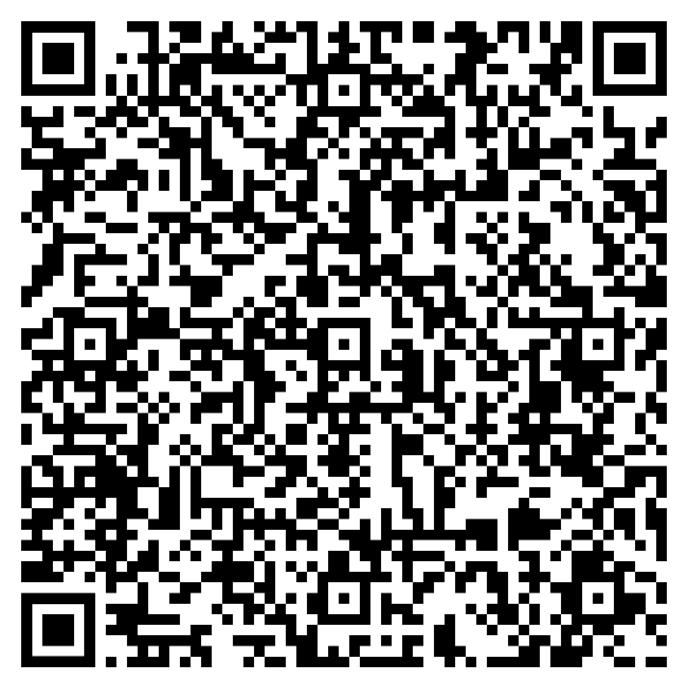
$10 off your next 10 meals Disclaimer: Terms apply. Offer expires 05/31/24. Taxes and fees still apply. Limited to $10 off next 10 orders, no minimum basket. Exclusions may apply. See app for details. ORDER NOW Use promo code: EATSCOLLEGE24


























































